precariat
description: social class formed by people suffering from precarity
101 results
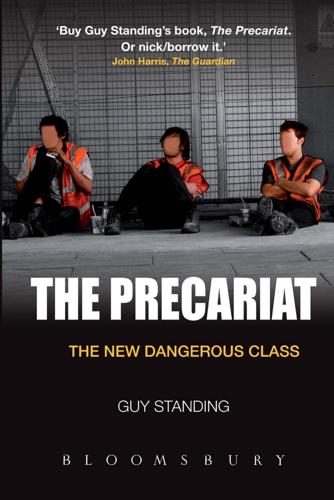
The Precariat: The New Dangerous Class
by
Guy Standing
Published 27 Feb 2011
In 2010 the new UK justice minister announced that prison labour would be extended, saying he wanted prisoners to work a 40-hour week. Prison work for a pittance has long been common in the United States. The precariat outside will no doubt welcome the competition. Concluding points The precariat does not consist of people with identical backgrounds and is not made up just of those groups we have highlighted. It makes sense to think there WHO ENTERS THE PRECARIAT? 89 are varieties of precariat, with different degrees of insecurity and attitudes to having a precariat existence. The growth of the global precariat has coincided with four remarkable shifts. Women have been displacing men, to the point where there is talk of ‘mancessions’ and feminisation of labour markets.
…
Unfortunately, labour and economic statistics are not presented in a way that could allow us to estimate the total number of people in the precariat, let alone the number in the varieties that make up its ranks. We have to build a picture on the basis of proxy variables. Let us consider the main groups that make up the precariat, bearing in mind that not all of them fit neatly; the identifying characteristic is not necessarily sufficient to indicate that a person is in the precariat. For a start, most who find themselves in temporary jobs are close to being in the precariat because they have tenuous relations of production, low incomes compared THE PRECARIAT 15 with others doing similar work and low opportunity in occupational terms.
…
In the age of the precariat, loyalty and trust are contingent and fragile. One can see why the precariat is growing. But the greater the size, the more the dysfunctional aspects will grow ominous. Insecurities breed social illness, addictions and anomic angst. Prisons overflow. Robin Hood gangs lose their sense of humour. And dark forces spread in the political arena. We will come to those after considering who is entering the precariat and what is happening to the key assets of the global market society. 3 Who Enters the Precariat? O ne answer is ‘everybody, actually’. Falling into the precariat could happen to most of us, if accidents occurred or a shock wiped out the trappings of security many have come to rely on.

The Corruption of Capitalism: Why Rentiers Thrive and Work Does Not Pay
by
Guy Standing
Published 13 Jul 2016
W. 1 Phillips curve 1 ‘pig cycle’ effects 1 Piketty, Thomas 1, 2 Pinochet, Augusto 1, 2, 3 platform debt 1 Plato 1 plutocracy 1, 2, 3, 4, 5, 6, 7, 8, 9, 10, 11, 12, 13 Polanyi, Karl 1 policing 1 political consultancy 1 Politico magazine 1 Ponzi schemes 1 Poor Law Amendment Act (1834) 1 POPS (privately owned public spaces) 1 Portfolio Recovery Associates 1 ‘postcapitalism’ 1 poverty traps 1, 2, 3 precariat and commons 1, 2, 3, 4, 5 and debt 1, 2 and democracy 1, 2 emergence of 1 growth of 1, 2 and rentier platforms 1, 2, 3 revolt of see revolt of precariat predatory creditors 1 ‘primitive rebel’ phase 1 Private Landlords Survey (2010) 1 privatisation and commons 1, 2, 3, 4, 5, 6, 7, 8, 9 and debt 1, 2 and democracy 1 and neo-liberalism 1 and rentier platforms 1 and revolt of precariat 1 and shaping of rentier capitalism 1, 2, 3, 4, 5, 6, 7 professionalism 1 ‘profit shifting’ 1 Property Law Act (1925) 1 Proudhon, Pierre-Joseph 1 Public and Commercial Services Union 1 PricewaterhouseCoopers (PwC) 1, 2, 3. 4, 5, 6 QE (quantitative easing) 1, 2, 3, 4, 5, 6 Quayle, Dan 1 QuickQuid 1 Reagan, Ronald 1, 2 reCAPTCHA security system 1 ‘recognition’ phase 1 ‘redistribution’ phase 1 Regeneron Pharmaceuticals 1 rentier platforms and automation 1 and cloud labour 1 and commodification 1 and ‘concierge’ economy 1 ecological and safety costs 1 and occupational dismantling 1 and on-call employees 1 and precariat 1, 2, 3 and revolt of precariat 1, 2 and ‘sharing economy’ 1, 2, 3, 4 and underpaid labour 1 and venture capital 1 rentiers ascendency of 1, 2 and British Disease 1 classical images of 1 and commons see commons and debt 1, 2, 3, 4, 5, 6, 7 and democracy 1, 2, 3, 4, 5, 6, 7 digital/tasking platforms see rentier platforms ‘euthanasia’ of 1, 2, 3, 4, 5, 6, 7 lies of rentier capitalism 1, 2, 3 revolt of precariat see revolt of precariat shaping of see shaping of rentier capitalism subsidies for 1, 2, 3, 4, 5, 6, 7, 8, 9, 10 ‘representation’ phase 1 ‘repression effect’ 1 Research of Gartner 1 revolt of precariat and basic income systems 1 and commons 1, 2, 3, 4, 5 ‘euthanasia’ of rentiers 1, 2, 3, 4, 5 inequality of rentier capitalism 1, 2, 3 and intellectual property 1, 2, 3 and neo-liberalism 1, 2, 3, 4, 5, 6 organisational forms 1 potential growth of movement 1 progressive political reengagement 1, 2 and rentier platforms 1, 2 rights as demands 1 sovereign wealth funds 1 wage and labour regulation 1, 2 ‘right to buy’ schemes 1, 2, 3, 4 Robbins, Lionel 1 Rockefeller, David 1 Rockefeller, John D. 1 Rolling Stone 1 Romney, Mitt 1 Roosevelt, Franklin D. 1 Ross, Andrew 1 Ross, Michael 1 Rothermere, Viscount 1, 2 Royal Bank of Scotland 1, 2 Royal Mail 1 Royal Parks 1 Rubin, Robert 1, 2 Rudd, Amber 1 Ruralec 1 Ryan, Conor 1 Sainsbury, Lord 1 Samsung 1, 2, 3 Sanders, Bernie 1, 2, 3 Sassen, Saskia 1 school–business partnerships 1 Schröder, Gerhard 1 Schwab Holdings 1 Schwarz, Dieter 1 Scottish Water 1 Second Gilded Age 1, 2, 3 Securitas 1 securitisation 1, 2, 3 selective tax rates 1 Selma 1 shaping of rentier capitalism branding 1 Bretton Woods system 1, 2, 3 and copyright 1 and ‘crony capitalism’ 1, 2, 3 dispute settlement systems 1, 2, 3 global architecture of rentier capitalism 1 lies of rentier capitalism 1 and neo-liberalism 1, 2 patents 1 and privatisation 1, 2, 3, 4, 5, 6, 7 and ‘shock therapy’ 1, 2 trade and investment treaties 1 ‘sharing economy’ 1, 2, 3, 4, 5, 6 Shelter 1 ‘shock therapy’ 1, 2, 3, 4 Shore Capital 1 Sierakowski, Slawomir 1, 2, 3, 4 silicon revolution 1 Simon, Herbert 1 Sirius Minerals 1 Skoll Centre for Social Entrepreneurship 1 Sky UK 1, 2 SLABS (student loan asset-backed securities) 1, 2 Slim, Carlos 1, 2 Smith, Adam 1 Snow, John 1 Social Care Act (2012) 1 social commons 1, 2, 3 social dividend systems 1, 2 social housing 1 ‘social income’ 1, 2, 3, 4, 5, 6, 7, 8 social strike 1 SoFi (Social Finance) 1 Solidarność (Solidarity) movement 1 South West Water 1 sovereign wealth funds 1 spatial commons 1, 2 Speenhamland system 1, 2, 3 Spielberg, Steven 1 Springer 1 ‘squeezed state’ 1 Statute of Anne (1710) 1 Statute of Monopolies (1624) 1 StepChange 1 Stevens, Simon 1 ‘strategic’ debt 1 strike action/demonstrations 1, 2, 3 student debt 1, 2 subsidies 1 and austerity 1, 2 and bank ‘bailouts’ 1 and charities 1 and ‘competitiveness’ 1 direct subsidies 1 and moral hazards 1 and ‘non-dom’ status 1 and quantitative easing 1, 2 for rentiers 1, 2, 3, 4, 5, 6, 7, 8, 9, 10 selective tax rates 1 and sovereign wealth funds 1 subsidised landlordism 1 tax avoidance and evasion 1 tax breaks 1, 2, 3, 4, 5 tax credits 1 Summers, Larry 1, 2 Sun, The 1, 2 Sunday Telegraph 1 Sunday Times 1 Sutton Trust 1 ‘sweetheart deals’ 1 tasking platforms see rentier platforms TaskRabbit 1, 2, 3, 4, 5 Tatler magazine 1 tax avoidance/evasion 1 tax breaks 1, 2, 3, 4, 5 tax credits 1, 2, 3 Tax Justice Network 1 Tax Research UK 1 Taylor & Francis 1 Tennessee Valley Authority 1 ‘tertiary time’ regime 1 Tesco 1 Texas Permanent School Fund 1 Textor, Mark 1 Thames Water 1 Thatcher, Margaret 1, 2, 3, 4, 5, 6, 7, 8, 9, 10 The Bonfire of the Vanities 1 The Constitution of Liberty 1 The General Theory of Employment, Interest and Money 1 The Innovator’s Dilemma 1 think tanks 1 ‘thinner’ democracy 1 ‘Third-Way’ thinking 1, 2, 3 Times, The 1 TISA (Trade in Services Agreement) 1 Tottenham Court Road underground station 1 TPP (Trans-Pacific Partnership) 1, 2, 3 Trades Union Congress 1, 2 ‘tragedy of the commons’ 1 ‘tranching’ of loans 1 Treaty of Detroit (1950) 1, 2 Treuhand 1 TRIPS (Agreement on Trade-Related Aspects of Intellectual Property Rights) 1, 2, 3, 4 trolling (of patents) 1 Trump, Donald 1, 2 TTIP (Trans-Atlantic Trade and Investment Partnership) 1, 2, 3, 4 Turnbull, Malcolm 1 Turner, Adair 1 Twain, Mark 1 Uber 1, 2, 3, 4, 5, 6, 7 ‘ultra-loose’ monetary policy 1 underpaid labour 1 UNESCO (UN Educational, Scientific and Cultural Organization) 1 UNHCR (UN refugee agency) 1 Unison 1 Unite 1 UnitedHealth Group 1 universal credit scheme 1 universal justice 1 UpCounsel 1 Upwork 1, 2 Uruguay Round 1, 2, 3 USPTO (US Patent and Trademark Office) 1 Vattenfall 1 Veblen, Thorstein 1 venture capital 1 Veolia 1 Vero Group 1 Victoria, Queen 1 Villeroy de Galhau, François 1 Vlieghe, Gertjan 1 Warner Chappell Music 1 Watt, James 1 welfare abuse/fraud 1 Wilde, Oscar 1 Wilson, Fergus 1 Wilson, Judith 1 WIPO (World Intellectual Property Organization) 1, 2, 3, 4, 5, 6 Wolf, Martin 1, 2 Wolfe, Tom 1 Wonga 1, 2 Work Capability Assessment 1 Work Programme 1 World Bank 1, 2, 3, 4, 5, 6, 7, 8, 9, 10 World Economic Forum 1 world heritage sites 1 Wriglesworth Consultancy 1 WTO (World Trade Organization) 1, 2, 3, 4, 5, 6 Y Combinator 1 Yanukovych, Viktor 1 Yukos 1 de Zayas, Alfred-Maurice 1 van Zeeland, Marcel 1 Zell, Sam 1 zero-hours contracts 1, 2, 3 Zipcar 1 Copyright First published in Great Britain in 2016 by Biteback Publishing Ltd Westminster Tower 3 Albert Embankment London SE1 7SP Copyright © Guy Standing 2016 Guy Standing has asserted his right under the Copyright, Designs and Patents Act 1988 to be identified as the author of this work.
…
Education is desirable for many reasons, but more of it will not alter the character of the income distribution system. THE PRECARIAT SMOULDERS Globalisation, neo-liberal policies, institutional changes and the technological revolution have combined to generate a new global class structure superimposed on preceding class structures.37 This consists of a tiny plutocracy (perhaps 0.001 per cent) atop a bigger elite, a ‘salariat’ (in relatively secure salaried jobs), ‘proficians’ (freelance professionals), a core working class, a precariat and a ‘lumpen-precariat’ at the bottom. The plutocracy, elite, salariat and proficians enjoy not just higher incomes but gain most (or an increasing part) of their income from capital and rental income, rather than from labour.
…
For some years, the precariat has been internally divided and scarcely conscious of its commonality. But this is rapidly changing as more of those in or close to being in the precariat realise that their situation is structural rather than a reflection of personal inadequacy, and that together they have the ability and energy to force transformative changes. Below the precariat in the social spectrum is what might be called a ‘lumpen-precariat’, an underclass of social victims relying on charity, often homeless and destitute, suffering from social illnesses including drug addiction and depression. They do not constitute a class, since they lack what sociologists call agency, the ability to act collectively in a strategic way.

Social Class in the 21st Century
by
Mike Savage
Published 5 Nov 2015
But let us now turn to another very hard-working group, who do not have these economic advantages – the group we have called the ‘precariat’. We now move to a very different world from that of the elite. This is the ‘precariat’ class, who are positioned at the bottom of the social hierarchy. They are a group who have very low amounts of all the kinds of capital which we have analysed, with incomes of only a few thousand pounds a year, little savings and wealth. They also – unlike our ‘ordinary’ wealth-elite – were not attracted to being part of the GBCS. Although around 15 per cent of the population fit into the precariat class, fewer than 1 per cent of the GBCS respondents fitted the precariat profile – and those small number who did do the GBCS were rather atypical, being more likely to be downwardly mobile into this class than born into it.
…
The complicity between receptiveness to particular research methods and social inequality is itself an issue to be challenged.1 Whereas the elite now command attention and interest, lying at the centre of media attention and social research, the precariat recedes from view, and this limits our awareness of social inequality and class divisions today. We addressed the absence of the precariat in the GBCS by conducting additional research with those who seemed to fall into the precariat class. Lisa Mckenzie, one of Britain’s leading researchers on the precariat, joined the project to lend her ethnographic skills to this vital task. Her job was to try to understand more deeply why this group had not engaged in the original survey, but also what they thought about the survey and how they were positioned within it.
…
Given this difficult politics of naming and classification, we think the precariat concept is preferable to that of an underclass because Standing’s term draws direct attention to the way that the vulnerability of these groups is linked to their structural location in society. It also avoids the clichéd stereotypes. The precariat are not passive, culturally disengaged or morally limited. Although the term ‘precariat’ runs the risk of giving an over-rigid definition of this group, it captures the structural instability of a global market, and a group of people at the mercy of that structure. The precariat concept also recognizes that there is mobility into and out of its ranks, because it situates this group within the wider processes of contemporary labour markets rather than fixing on them as being outside employment altogether.

Basic Income And The Left
by
henningmeyer
Published 16 May 2018
The old prole‐ tariat, the old working class in numerical decline, is rapidly losing its labour securities and non-wage forms of economic security. This is key to understanding the precariat. Its essen‐ tial character is being a supplicant, a beggar, pushed to rely on discretionary and conditional hand-outs from the state and by privatised agencies and chari‐ The precariat has distinctive relations of production ties operating on its behalf. For understanding the (unstable labour, lack of occupational identity, a high precariat, and the nature of the class struggle to ratio of work-for-labour to labour, and so on), come, this supplicant status is more important than distinctive relations of distribution (depending on its insecure labour relations.
…
For understanding the (unstable labour, lack of occupational identity, a high precariat, and the nature of the class struggle to ratio of work-for-labour to labour, and so on), come, this supplicant status is more important than distinctive relations of distribution (depending on its insecure labour relations. money wages that are stagnant at best, and volatile as the norm, living on the edge of unsustainable debt), and distinctive relations to the state. This last The Precariat And Global Capitalism aspect has received too little attention. The precariat The precariat’s position must be understood in is the first mass class in history that has been terms of the changing character of global capitalism systematically losing the acquired rights of citizen‐ and its underlying distribution system, something ship – civil, cultural, political, social and economic.
…
It was facilitated by the new technological revolution, which among other things allowed the corporation to unbundle, shifting production and tasks to wher‐ ever costs were lowest. 8 What the precariat must demand now is nothing less than a new distribution system, not just a tinkering with marginal or average tax rates. Indeed, the weakest aspect of Piketty’s analysis is his prognosis. 9 The likelihood of very high marginal direct tax rates security, none of us can be expected to be rational is remote. Structural changes are required. and socially responsible. Let us find ways of going A Precariat Charter must start from understanding on that road. the nature and depth of insecurities faced by the precariat, and also from understanding the aspira‐ tions that exist in the more educated component of the precariat.

A Pelican Introduction: Basic Income
by
Guy Standing
Published 3 May 2017
Globalization and policies of market flexibility, combined with the technological revolution unleashed by or associated with globalization, have also produced a growing precariat, consisting of millions of people everywhere living in chronic insecurity and losing all forms of rights.3 Even if economic growth were to pick up, which seems unlikely, the precariat would not gain economically. It certainly has not done so in the first two decades of this century. In a relative sense, the precariat almost certainly loses from growth, because the gains from the sort of growth that is occurring go disproportionately if not entirely to the plutocracy, elite and salariat.4 To compound the challenge, the old recipe of job creation – ‘work is the best route out of poverty’ – is increasingly wrong and even counter-productive.
…
It reflects unequal access to the other key assets of a good life – security (both physical and economic), quality time, quality space, education and knowledge, and financial capital.14 Security is the pivotal key asset, which is probably even more unequally distributed than income or wealth as conventionally defined and measured. The rich can buy physical security, and have almost total economic security. Someone in the precariat or with low and uncertain income has no security at all. A basic income would rectify that chronic inequality. Similarly, the inequality of control over time is vast. The upper echelons of the income and wealth spectrum can have complete control of their time, paying others to do tasks they do not wish to do. By contrast, the precariat has little or no control over time. Even if it did not do so fully or adequately, a basic income would allow people more control over the allocation of their time, for example, by reducing the financial pressure to work long or unsocial hours at the expense of family and community life.
…
Today, increasing numbers of people cannot obtain an adequate income from the work and labour they are required or expected to do, however hard and long they work.18 Globalization, technological change and ‘flexible’ labour markets mean that real wages in industrialized countries, on average, will stagnate for the foreseeable future, leaving many in the precariat permanently trapped in the low pay/benefit nexus. Some critics of basic income contend that labour’s share of national income has fallen only in countries where unions are weak and that, if they were strengthened, wages and worker living standards would rise.19 The trouble with that argument is that the labour share of national income has fallen even where unions and collective bargaining systems have remained relatively strong, as in Austria. A basic income would underpin the total income gained by the precariat. It would also enable those on low incomes to do odd jobs for other low-income people for a modest amount.

Battling Eight Giants: Basic Income Now
by
Guy Standing
Published 19 Mar 2020
There is also a lot of anecdotal data to suggest that many more people must do more work that is not paid. The precariat, in particular, must use more unpaid time doing activities that are work but not counted as such. And over a million workers are doing unpaid overtime hours. This means average hourly wage rates are lower than they appear. If, as is likely, it is lower-earning workers who are mainly affected, this in itself will have widened wage inequality. Wage differentials have grown enormously. Earnings at the top have risen much faster than in the middle, and real earnings have fallen for lower-paid men.23 For those in the bottom half of the income spectrum – most in the precariat – wages have fallen by more than average and can be expected to continue to lag behind those of the minority earning good salaries and receiving part of the rental income from the high and rising returns to capital and ownership of physical, financial and intellectual property.
…
As many of these were paid equally to all workers, they tended to moderate earnings inequality. But with the growth of the precariat fewer workers, young and old, have access to such benefits, and many firms have quietly converted them into money wages, giving a false impression of income growth.28 Meanwhile, those still in the salariat – on a stable contracted salary – have gained more in such benefits, the value of which has been elevated by tax policies. What has happened to non-wage benefits is a largely unmeasured aspect of growing income inequality in Britain, particularly between the precariat and the salariat. However, it is likely that the trend is similar to that in the United States.
…
They feel that they are unable to develop themselves, have no occupational identity or narrative to give to their lives and must do a lot of work that is not recognized or remunerated. They are the precariat.60 Perhaps worst of all, they are, and feel like, supplicants: they must ask for favours, for permission, for help, which if not granted threaten their ability to function. The original Latin meaning of precariousness was ‘to obtain by prayer’. That is what being in the precariat is like; they are dependent on others’ goodwill. This is undignified, potentially traumatizing and puts people on the road to losing the ordinary rights of citizenship, exemplified by the increasingly discretionary character of welfare benefits.
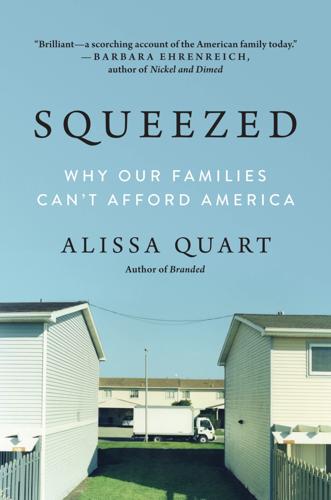
Squeezed: Why Our Families Can't Afford America
by
Alissa Quart
Published 25 Jun 2018
And if they go into traditionally female caring professions—where most of the employment growth is these days—they may receive the “traditional” female lower pay. I call this just-making-it group “the Middle Precariat,” after the precariat, a term first popularized six years ago by the economist Guy Standing to describe an expanding working class burdened with temporary, low-paid, and part-time jobs. My term, the Middle Precariat, describes those at the upper end of that group in terms of income. Its membership is expanding higher and higher into what was traditionally known as the solid bourgeoisie. These people believed that their training or background would ensure that they would be properly, comfortably middle-class, but it has not worked out that way.
…
Their labor has also become inconstant or contingent—they do short-term contract or shift work, as well as unpaid overtime. They also do unpaid shadow work, like adjunct professors putting together packets for their classes off the clock, in contrast to their tenured colleagues. And it’s worse for the Middle Precariat of color, which typically has much less retirement security and ability to pay college tuition. Like the classic precariat, the Middle Precariat has lost the narrative of their lives and futures. Who are they and what will they become? Their income has flatlined. Many are “fronting” as bourgeois while standing on a pile of debt. There are many culprits for the straits in which they find themselves—most crucially growing income inequality, or as the business TV shows like to call it euphemistically, as if to deny their role in creating it, “disparity.”
…
These professors and other extensively trained and educated workers have all the typical problems of the Middle Precariat: debt, overwork, isolation, and shame about their lack of money. They also may have very little time for leisure, not even for a few dates over pale ale with their partners or get-togethers with friends where they can confess their woes or snicker over gossip. They take almost no holidays. Many of them told me that their parents were more economically comfortable than they were, even though their parents often had far fewer educational attainments. Whenever I talked to these Middle Precariat parents, I also heard the ring of self-blame and ridicule.
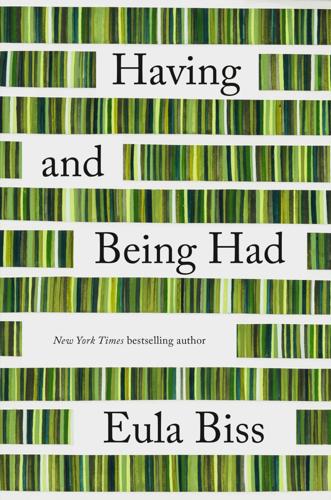
Having and Being Had
by
Eula Biss
Published 15 Jan 2020
It is also the defining feature of an entire class of people, the precariat. “Everybody, actually” is the economist Guy Standing’s answer to his own question, “Who enters the precariat?” By everybody, he means potentially anybody. Illness or disability can force somebody into the precariat, as can divorce, war, or natural disaster. The precariat is composed of migrant workers and temp workers and contract workers and part-time workers. People who work unstable jobs that offer “no sense of career.” There are few opportunities to advance in these jobs, and no way to bargain for better terms. Some of the precariat are not citizens of the countries where they work.
…
Findings from the BBC’s Great British Class Survey Experiment,” Mike Savage, Fiona Devine, Niall Cunningham, Mark Taylor, Yaojun Li, Johs. Hjellbrekke, Brigitte Le Roux, Sam Friedman, Andrew Miles. Sociology, April 2, 2013. This survey uses the term precariat to describe the lowest class, the class with the least of three kinds of capital. In his 2011 book The Precariat, Guy Standing uses the term to describe a class defined by a lack of security, not a lack of capital. “The precariat is not the bottom of society,” he argues. His precariat is a class that cuts across economic classes as they are typically understood. “That somebody has more income than somebody else is not a way to define class,” he writes, “nor is lifestyle or access to so-called social capital.”
…
And the word denizens, Standing notes, “was also used to refer to non-slave blacks in the United States before the abolition of slavery.” The precariat is not easily recognizable as a class, even to itself. It includes convicts and asylum seekers and single mothers and artists. It includes educated people who can’t find the work for which they were educated. And people without college degrees who can’t find the kinds of jobs their parents and grandparents worked, in factories and coal mines. What they all have in common is a lack of security. The precariat is not what we used to call the working class, Standing clarifies. Those workers held long-term jobs with fixed hours.
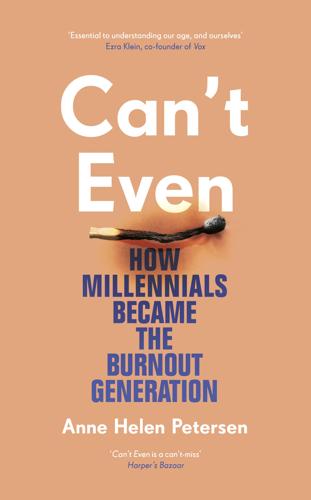
Can't Even: How Millennials Became the Burnout Generation
by
Anne Helen Petersen
Published 14 Jan 2021
And as will become clear, it also provided the template for the contemporary work model, in which adjuncts, independent contractors, freelancers, gig employees, or any other sort of “contingent” laborer make up a new, ever-expanding societal classification: the precariat. The precariat is not the vision of the working class held by many Americans. As the theorist Guy Standing points out, the working class, at least how it’s remembered, had “long-term, stable, fixed-hour jobs with established routes of advancement, subject to unionization and collective agreements, with job titles their fathers and mothers would have understood, facing local employers whose names and features they were familiar with.”1 The precariat has almost none of those things. Uber drivers are part of the precariat. So are retail workers, Amazon warehouse employees, adjunct professors, freelance writers, Instacart grocery shoppers, corporate cleaners, MTV digital producers, in-home nursing assistants, Wal-Mart stockers, fast food servers, and people who cobble together several of these jobs to make ends meet.
…
So are retail workers, Amazon warehouse employees, adjunct professors, freelance writers, Instacart grocery shoppers, corporate cleaners, MTV digital producers, in-home nursing assistants, Wal-Mart stockers, fast food servers, and people who cobble together several of these jobs to make ends meet. A precariat worker knows few of their coworkers, and those that they do know turn over quickly. They often have a college degree, or have completed several semesters toward one. Some, like the adjuncts and freelance writers, find themselves in the precariat as they continue to pursue their “passion,” no matter the cost. Others find themselves there through desperation. Their economic and class status is precarious, which renders them ever vigilant for even the smallest piece of bad luck that could sink them into poverty. Above all, precariat workers are exhausted—and, regardless of the specifics of their job, burnt out.
…
Above all, precariat workers are exhausted—and, regardless of the specifics of their job, burnt out. “Those in the precariat have lives dominated by insecurity, uncertainty, debt and humiliation,” Standing writes. “They are denizens rather than citizens, losing cultural, civil, social, political and economic rights built up over generations. Most importantly, the precariat is the first class in history expected to labour and work at a lower level than the schooling it typically requires. In an ever more unequal society, its relative deprivation is severe.”2 They are angry at and are anxious about the broken promises of the American Dream, but they keep grinding to try to position themselves closer to it.
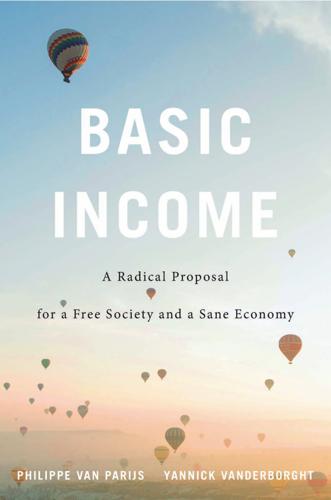
Basic Income: A Radical Proposal for a Free Society and a Sane Economy
by
Philippe van Parijs
and
Yannick Vanderborght
Published 20 Mar 2017
As an example, in June 2016, the head of Flanders’s UNIZO (the OrganÂ� ization of Self-Â�Employed Entrepreneurs), Karel Van Eetvelt, declared that the basic-Â�income proposal had to be further explored as it could potentially boost entrepreneurship and better protect freelance workers.44 From the Â�labor movement and the business world, let us now turn to two components of our socieÂ�ties whose attitude Â�towards basic income can a priori be expected to be more favorable: the precariat and Â�women. The Precariat Job seekers, Â�people with short-Â�term or part-Â�time contracts, Â�those enrolled in workfare schemes, the more vulnerable among the self-Â�employed, and more broadly, all Â�those excluded for whatÂ�ever reason from good jobs that provide material security and positive identification—Â�these are the Â�people commonly gathered Â�under the label “precariat.”↜45 They include many of the Â�people who stand to gain most, in an immediate sense, from the introduction of a basic income.
…
But they tend to lack the financial and Â�human resources that make for robust social movements: for most of them, it is difficult enough to make ends meet, and many of Â�those with the skills of effective leaders Â�will remain in the precariat only for short periods of time. Moreover, the precariat lacks the sort of intense and regular interaction that the proletariat owes to sharing a workplace. It also lacks an asset analogous to the insiders’ Â�labor power, on whose collaboration the operation of the economy depends. And, most seriously perhaps, it Â�faces the challenge of breeding a positive identification with the stigmatized status of the unemployed or precariously employed. One may therefore doubt that precariat associations Â�will ever gain strength even remotely comparable to that of traditional Â�labor organÂ�izations, let alone sufficient to secure the introduction of an unconditional basic income.53 Â�Women Â� Women form another and far larger category from which greater support for basic income should be expected than from the mainstream Â�labor movement.
…
“Meshing Â�Labour Flexibility with Security: An Answer to Mass Unemployment?” International Â�Labour Review 125(1): 87–106. —Â�—Â�—. 1999. Global Â�Labour Flexibility: Seeking Distributive Justice. Basingstoke: Macmillan. —Â�—Â�—. 2011. The Precariat: The New Dangerous Class. London: Bloomsbury. —Â�—Â�—. 2012. “Why a Basic Income Is Necessary for a Right to Work.” Basic Income Studies 7(2): 19–40. —Â�—Â�—. 2014a. A Precariat Charter: From Denizens to Citizens. London: Bloomsbury. —Â�—Â�—. 2014b. “Cash Transfers Can Work Better than Subsidies.” The Hindu, December 6. www╉.Â�thehindu╉.Â�com ╉/Â�a rticle6666913╉.Â�ece. Steensland, Brian. 2008.
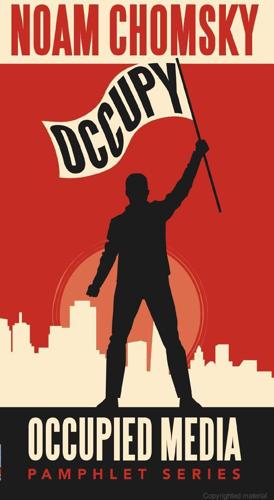
Occupy
by
Noam Chomsky
Published 2 Jan 1994
He said a lot of the success of this economy was based substantially on what he called “growing worker insecurity.” If working people are insecure, if they’re part of what we now call the “precariat,” living precarious existences, they’re not going to make demands, they’re not going to try to get wages, they won’t get benefits. We can kick ’em out if we don’t need ’em. And that’s what’s called a “healthy” economy, technically. And he was very highly praised for this, greatly admired. Well, now the world is indeed splitting into a plutonomy and a precariat—again, in the imagery of the Occupy movement, the 1 percent and the 99 percent. Not literal numbers, but the right picture.
…
Maybe England would be saved from neoliberal globalization by an “invisible hand.” The other great classical economist, David Ricardo, recognized the same thing and hoped that it wouldn’t happen—kind of a sentimental hope—and it didn’t for a long time. But now it is happening. Over the last thirty years that’s exactly what has been underway. Plutonomy and the Precariat For the general population, the 99 percent in the imagery of the Occupy movement, it’s been pretty harsh. And it could get worse. This could be a period of irreversible decline. For the 1 percent and even less—the one-tenth of the 1 percent—it’s just fine. They are richer than ever, more powerful than ever, controlling the political system, disregarding the public.
…
As for the rest, we send ’em adrift. We don’t really care about them. We don’t really need ’em. They have to be around to provide a powerful state, which will protect us and bail us out when we get into trouble, but other than that they essentially have no function. These days they’re sometimes called the “precariat”—people who live a precarious existence at the periphery of society. It’s not the periphery anymore. It’s becoming a very substantial part of the society in the United States, and indeed elsewhere. And this is considered a good thing. So, for example, Alan Greenspan, at the time when he was still “Saint Alan”—hailed by the economics profession as one of the greatest economists of all time (this was before the crash for which he was substantially responsible)—was testifying to Congress in the Clinton years, and he explained the wonders of the great economy that he was supervising.

Working the Phones: Control and Resistance in Call Centres
by
Jamie Woodcock
Published 20 Nov 2016
Wacquant, (London: Verso, 1998), p. 85 [Originally 178 Notes 25. 26. 27. 28. 29. 30. 31. 32. 33. 34. 35. 36. 37. 38. 39. 40. 41. 42. 43. 44. 45. 46. published as Contre Feux 2: Pour un movement social européen, Paris: Éditions Raisons d’agir]. Guy Standing, The Precariat: The New Dangerous Class (London: Bloomsbury, 2011). Richard Seymour, ‘We Are All Precarious: On the Concept of the “Precariat” and Its Misuses’, New Left Project, 2 October 2012, www. newleftproject.org/index.php/site/article_comments/we_are_all_ precarious_on_the_concept_of_the_precariat_and_its_misuses Quoted in ibid. Harvey, A Brief History of Neoliberalism (2007), p. 12. Seymour, ‘We Are All Precarious’ (2012). Mitropoulos, ‘Precari-Us’ (2005), p. 13.
…
If anything can be said ‘for certain about precariousness, it is that it teeters’, which points towards ‘some of the tensions that shadow much of the discussion about precarious labour’.23 Pierre Bourdieu explains that ‘casualisation of employment is part of a mode of domination of a new kind, based on the creation of a generalized and permanent state of insecurity aimed at forcing workers into submission, into the acceptance of exploitation’.24 This definition provides an important starting point for the discussion of precarity, yet the arguments about the existence of a ‘precariat’ put forward by Guy Standing has done much to muddy the waters.25 Richard Seymour argues that Standing’s formulation of the precariat ‘remains at best a purely negative, critical concept’, but this is not to say that the term should be completely rejected.26 The problem with the concept is that ‘its advocates want it to do far more than it is capable of doing – that is, naming, describing, and explaining a developing social class’.
…
Russell, B. (2008) ‘Call Centres: A Decade of Research’, International Journal of Management Reviews, Vol. 10, No. 3, pp. 195–219. Scott, J. C. (1987) Weapons of the Weak: Everyday Forms of Peasant Resistance, New Haven: Yale University Press. Seymour, R. (2012) ‘We Are All Precarious: On the Concept of the “Precariat” and Its Misuses’, New Left Project, 2 October, www. newleftproject.org/index.php/site/article_comments/we_are_all_ precarious_on_the_concept_of_the_precariat_and_its_misuses Skeggs, B. and Wood, H. (2012) Reacting to Reality Television: Performance, Audience and Value, New York: Routledge. Simms, M. and Holgate, J. (2010) ‘Organising for What? Where Is the Debate on the Politics of Organising?’
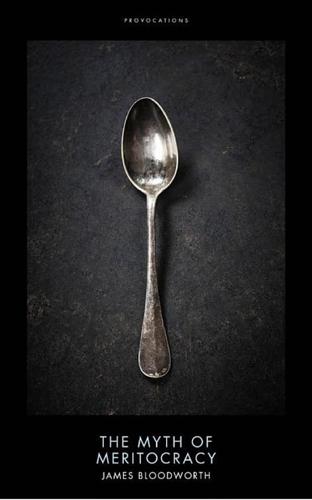
The Myth of Meritocracy: Why Working-Class Kids Still Get Working-Class Jobs (Provocations Series)
by
James Bloodworth
Published 18 May 2016
This perhaps goes some way to explaining the widespread assumption that social mobility is in reverse: we see a good deal of the elite on our television screens and are thus liable to assume that the ‘stickiness’ of their social position reflects a collapse in mobility right across society. Similarly, at the other end of the ladder, the so-called precariat has become even more entrenched. The stereotypical images of Burberry-clad twenty-somethings trapped on benefits have come to denote a country in a parlous state of social stagnation. Relative to other comparable nations, social mobility in Britain is poor. According to the OECD,36 Britain has some of the lowest rates of social mobility in the developed world.
…
While Oxford and Cambridge graduates comprise just 1 per cent of Britain’s population, according to the aforementioned report they make up 75 per cent of senior judges, 59 per cent of Cabinet ministers, 47 per cent of newspaper columnists and 12 per cent of the Sunday Times Rich List.39 A nationally representative survey of 1,026 people conducted by the market research firm GfK for the BBC found further evidence of a closed shop at the top. Using seven social classes,40 the study found that over twelve times as many of the elite in 2011 came from the most privileged backgrounds compared to those from the precariat. Just 11 per cent of the elite had risen from the lowest social class.41 The Sutton Trust, which has been carrying out surveys of Britain’s professions for over a decade, has talked of the ‘staying power of the privately educated at the top of the UK’s professional hierarchy’. In its 2016 annual report, it found that almost three-quarters (71 per cent) of top military officers were educated privately, while 61 per cent of Britain’s top doctors were educated at independent schools (another 22 per cent attended grammar schools).42 Even the music industry, which once gave expression to working-class authenticity, is increasingly dominated by the children of privilege.
…
There is only so much room at the top. 37 ‘Kate and Lottie Moss to become Vogue’s first cover sisters’, Charlotte Griffiths, Daily Mail, 21 August 2014. 38 ‘Kate Moss’ little sister made her catwalk debut’, Ella Alexander, Glamour, 10 March 2015. 39 ‘Closed shop at the top in deeply elitist Britain, says study’, Andrew Sparrow, The Guardian, 28 August 2014. 40 The seven categories: elite, established middle class, new affluent workers, technical middle class, traditional working class, emerging service workers, precariat. 41 Social Class in the 21st Century, Professor Mike Savage, op. cit. 42 ‘Leading People 2016’, Sutton Trust, 24 February 2016, http://www.suttontrust.com/researcharchive/leading-people-2016. 43 ‘Has pop gone posh?’, Tom Bateman, bbc.co.uk, 28 January 2011. 44 ‘Julie Walters warns of a future where only “posh” can afford to act’, Andrew Hough, Daily Telegraph, 3 September 2012. 45 ‘Class a big issue in arts, says BBC drama boss’, Hannah Furness, Daily Telegraph, 23 August 2014. 46 ‘Conservative MP: How the Queen secured my selection for the party’, Tim Walker, Daily Telegraph, 10 March 2012. 47 ‘Exclusive: Cabinet is worth £70 million’, Christopher Hope, Daily Telegraph, 27 May 2012. 48 ‘Leading People 2016’, Sutton Trust, op. cit. 49 ‘Record numbers of female and minority-ethnic MPs in new House of Commons’, Helena Bengtsson, Sally Weale and Libby Brooks, The Guardian, 8 May 2015. 50 ‘The concept of class is absent from political debate, even as inequality in Britain reaches new heights’, Sean Swan, Democratic Audit, 11 February 2016. 51 ‘Dead Souls: The Denationalization of the American Elite’, Samuel P.

The Rise and Fall of the Neoliberal Order: America and the World in the Free Market Era
by
Gary Gerstle
Published 14 Oct 2022
For more recent works on the subject, see Guy Standing, The Precariat: The New Dangerous Class (London: Bloomsbury, 2011); Alexandrea J. Ravenelle, Hustle and Gig: Struggling and Surviving in the Sharing Economy (Oakland: University of California Press, 2019); Ruth Milkman and Ed Ott, eds., New Labor in New York: Precarious Workers and the Future of the Labor Movement (Ithaca, NY: Cornell University Press, 2014). 24.For the origin of the term “precariat,” see https://www.macmillandictionary.com/buzzword/entries/precariat.html, accessed December 15, 2021, and Standing, The Precariat. 25.See Steve Fraser and Gary Gerstle, “Introduction,” in Steve Fraser and Gary Gerstle, eds., Ruling America: A History of Wealth and Power in a Democracy (Cambridge, MA: Harvard University Press, 2005), 1–26. 26.For Rick Santelli’s rant, see https://www.cnbc.com/video/2015/02/06/santellis-tea-party-rant-february-19-2009.html, accessed June 22, 2021; Phil Rosenthal, “Rant Goes Viral, Raising Profile of CNBC’s Rick Santelli,” Chicago Tribune, February 23, 2009, https://www.chicagotribune.com/news/ct-xpm-2009-02-23-0902220319-story.html, accessed June 22, 2021. 27.On the origins of the Tea Party, see Theda Skocpol and Vanessa Williamson, The Tea Party and the Remaking of Republican Conservatism (New York: Oxford University Press, 2012); Jill Lepore, The Whites of Their Eyes: The Tea Party’s Revolution and the Battle over American History (Princeton, NJ: Princeton University Press, 2011); Michael Leahy, Covenant of Liberty: The Ideological Origins of the Tea Party Movement (New York: HarperCollins, 2012).
…
Michelle Alexander’s book gave those within minority communities as well as those outside them an opportunity to reckon in new ways with a serious social and ethical problem that the nation had ignored for so long. Seeds of protest were being sown. The Precariat A very different social group was also experiencing hardship in the wake of the Great Recession. This one came to be dubbed the “precariat,” a word first invented as a play on the word “proletariat.” Members of this social group had experienced the downside of what was being celebrated as the “gig economy,” a world of jobs, opportunities, and affluence that the information technology (IT) revolution had called into being.
…
They were also a racially diverse group of whites, blacks, Latinos, and others. They trended young. The term “precariat” had been coined by French sociologists in the 1980s, but it remained a marginal term in Anglo-American discourse until the 2010s.24 Then it took off to describe the rapid expansion of the ranks of those whose circumstances of work were chronically unsettled, subject to market conditions and employer preferences over which they had no control. Young people from affluent families comprised a significant slice of this precariat, and this mattered politically. Historically, protest movements often swelled when a portion of a society’s elite, or would-be elite, lost confidence in the prevailing political order and threw in its lot with the less fortunate.25 A perception of commonly shared material interests had strengthened such alliances in the past and would soon do so again.

We Are All Fast-Food Workers Now: The Global Uprising Against Poverty Wages
by
Annelise Orleck
Published 27 Feb 2018
Either way, almost everyone is working longer hours for less pay.2 If the first half of the twentieth century was marked by uprisings of the industrial proletariat, the twenty-first century has been characterized by civil unrest among the postindustrial working class—the precariat. Whoever coined the term, and many have claimed credit, the precariat represents an ever-growing share of all workers. They have no security, seniority, or benefits. They earn too little to comfortably live on. And the corporations, hospitals, universities, and government agencies for which they work evade legal responsibility for meeting minimum wage, maximum hours, and safety standards by classifying them as “temporary” or as “contract” employees provided by third-party labor suppliers.
…
—KEEGAN SHEPARD, graduate student and Fight for $15 activist, 2015 CONTENTS AUTHOR’S NOTE PART I POVERTY WAGES, WE’RE NOT LOVIN’ IT: ROOTS AND BRANCHES OF A GLOBAL UPRISING PROLOGUE Brands of Wage Slavery, Marks of Labor Solidarity CHAPTER 1 Inequality Rising CHAPTER 2 All We’re Asking for Is a Little Respect CHAPTER 3 “We Are Workers, Not Slaves” CHAPTER 4 “I Consider the Union My Second Mother” CHAPTER 5 Hotel Housekeepers Go Norma Rae CHAPTER 6 United for Respect: OUR Walmart and the Uprising of Retail Workers CHAPTER 7 Supersize My Wages: Fast-Food Workers and the March of History CHAPTER 8 1911–2011: History and the Global Labor Struggle CHAPTER 9 People Power Movements in the Twenty-First Century CHAPTER 10 “You Can’t Dismantle Capitalism Without Dismantling Patriarchy” CHAPTER 11 This Is What Solidarity Feels Like PART II THE RISING OF THE GLOBAL PRECARIAT CHAPTER 12 Respect, Let It Go, ‘Cause Baby, You’re a Firework CHAPTER 13 Realizing Precarity: “We Are All Fast-Food Workers Now” CHAPTER 14 Days of Disruption, 2016 CHAPTER 15 The New Civil Rights Movement CHAPTER 16 Counting Victories, Girding for an Uphill Struggle CHAPTER 17 Huelga de Hambre: Hunger and Hunger Strikes Rising CHAPTER 18 Social Movement Unionism and the Souls of Workers CHAPTER 19 “Contractualization” CHAPTER 20 “Stand Up, Live Better”: Organizing for Respect at Walmart PART III GARMENT WORKERS’ ORGANIZING IN THE AGE OF FAST FASHION CHAPTER 21 “If People Would Think About Us, We Wouldn’t Die”: Beautiful Clothes, Ugly Reality CHAPTER 22 How the Rag Trade Went Global CHAPTER 23 “The Girl Effect” CHAPTER 24 “Made with Love in Bangladesh” CHAPTER 25 “We Are Not a Pocket Revolution”: Bangladeshi Garment Workers Since Rana Plaza CHAPTER 26 “A Khmer Would Rather Work for Free Than Work Without Dignity” CHAPTER 27 “After Pol Pot, We Need a Good Life” CHAPTER 28 Consciousness-Raising, Cambodia Style CHAPTER 29 Filipina Garment Workers: Organizing in the Zone PART IV NO RICE WITHOUT FREEDOM, NO FREEDOM WITHOUT RICE: THE GLOBAL UPRISING OF PEASANTS AND FARMWORKERS CHAPTER 30 “No Land No Life”: Uprisings of the “Landless,” 2017 CHAPTER 31 “Agrarian Reform in Reverse”: Food Crises, Land Grabs, and Migrant Labor CHAPTER 32 Milk with Dignity CHAPTER 33 “Like the Time of Cesar Chavez”: Strawberry Fields, Exploitation Forever CHAPTER 34 Bitter Grapes CHAPTER 35 “What Are We Rising For?”
…
With all that I have learned as I researched this book, I am left with feelings of hope and possibility. I hope you will be too. This book is arranged in four parts. The first is a broad view, a sweep, an attempt to frame how our world has changed and to sketch the roots and spreading branches of global rebellion. The second traces the rising of the global precariat. The third examines garment organizing in the age of fast fashion. And in the fourth section, I trace local and global activism by farmers and farmworkers. I try to cast some sparks of light by sketching small successes that can be seen as models. Finally, I reflect on some quite ambitious visions for a more humane future in which a system based on poverty wages gives way to a living wage and dignified work for everyone.
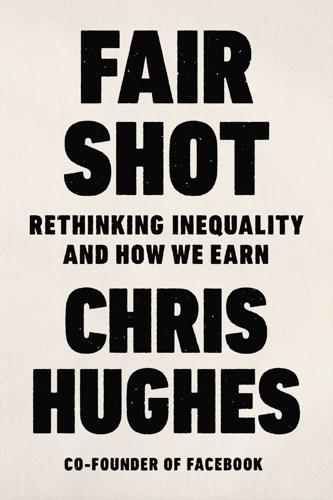
Fair Shot: Rethinking Inequality and How We Earn
by
Chris Hughes
Published 20 Feb 2018
When the participants in that market see a meaningful boost in their spending power, they are able to buy and sell goods and create stronger incentives for local entrepreneurs to invest and expand their own work. 75 up from around 6 percent: International Rescue Committee, “The IRC’s Cash Strategy, 2015-2020.” 75 amount of cash benefits that humanitarian organizations provide is still small: Harvey, “Cash Transfers: Only 6% of Humanitarian Spending.” 76 GiveDirectly raised more than $90 million: GiveDirectly, “Our Financials.” Four 79 The Precariat: Precariat is a portmanteau word referring to the “precarious proletariat”—an emerging social class who struggle to get by, bouncing frequently between unemployment and underemployment. The term was made famous by British economist Guy Standing in his 2011 book of the same name, but dates back to a group of French sociologists who coined the term (précariat) more than 30 years ago after noting a marked increase in unstable jobs across Europe. 82 “In terms of artificial intelligence taking American jobs”: Soergel, “Mnuchin ‘Not At All’ Worried.” 82 Nine out of ten economists, a University of Chicago survey found, agree: The University of Chicago’s Booth School of Business assembles a panel of expert economists who are meant to be representative of the field and polls them from time to time to “inform the public about the extent to which economists agree or disagree on important public policy issues.”
…
We don’t talk about it much, but we have good, home-grown evidence that aligns with the international studies’ conclusions: that this money is well spent and lifts education and health outcomes for recipients here, just as it does abroad. And by tweaking and expanding it, we could make it possible for all American families to make ends meet. 4 The Precariat Over the past couple years, many technology and business leaders have come to believe we need a guaranteed income because of the threat of artificial intelligence. Elon Musk and Richard Branson, for instance, believe that “intelligent” machines may soon create a new era of mass unemployment. In that world, they argue, there will be no choice but to help people meet their basic needs.
…
To receive special offers, bonus content, and info on new releases and other great reads, sign up for our newsletters. Or visit us online at us.macmillan.com/newslettersignup For email updates on the author, click here. Contents Title Page Dedication Introduction 1: How It Happens 2: The Dismantling of the American Dream 3: Kenya & Back 4: The Precariat 5: A Guaranteed Income for Working People 6: Worthwhile Work 7: Untethered Idealism 8: Everybody Likes a Tax Credit 9: What We Owe One Another Afterword What You Can Do Acknowledgments Bibliography Notes About the Author Copyright fair shot.
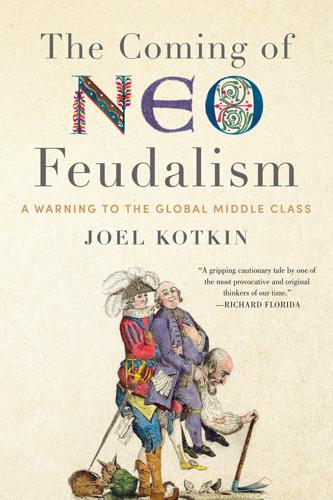
The Coming of Neo-Feudalism: A Warning to the Global Middle Class
by
Joel Kotkin
Published 11 May 2020
In addition to its own employees there, the company relies on the labor of more than 700,000 workers—roughly ten times its U.S. employment—to build Apple products at contractors like Foxconn. These workers suffer conditions that have led to illegal strikes and suicides; workers often claim they are treated no better than robots.8 From Proletariat to Precariat In the old working-class world, unions often set hours and benefits, but many low-status workers today are sinking into what has been described as the “precariat,” with limited control over their working hours and often living on barely subsistence wages.9 One reason for this descent is a general shift away from relatively stable jobs in skill-dependent industries or in services like retail to such occupations as hotel housekeepers and home care aides.10 People in jobs of this kind have seen only meager wage gains, and they suffer from “income volatility” due to changing conditions of employment and a lack of long-term contracts.11 This kind of volatility has become more common even in countries with fairly strong labor laws.
…
smid=tw-nytimesworld&smtyp=cur; Olivia Solon, “Amazon patents wristband that tracks warehouse workers’ movements,” Guardian, February 1, 2018, https://www.theguardian.com/technology/2018/jan/31/amazon-warehouse-wristband-tracking; Alan Boyle, “Amazon wins a pair of patents for wireless wristbands that track warehouse workers,” Geek Wire, January 30, 2018, https://www.geekwire.com/2018/amazon-wins-patents-wireless-wristbands-track-warehouse-workers/; Natasha Bernal, “Amazon’s warehouse computer system tracked and fired hundreds of workers,” Telegraph, April 26, 2019, https://www.telegraph.co.uk/technology/2019/04/26/amazons-warehouse-computer-system-tracked-fired-hundreds-workers/. 8 David Goldman, “Why Apple will never bring manufacturing jobs back to the U.S.,” CNN Business, October 17, 2012, https://money.cnn.com/2012/10/17/technology/apple-china-jobs/; “China tech factory conditions fuel suicides,” France 24, November 14, 2018, https://www.france24.com/en/20181114-china-tech-factory-conditions-fuel-suicides-study. 9 Guy Standing, “Meet the precariat, the new global class fuelling the rise of populism,” World Economic Forum, November 9, 2016, https://www.weforum.org/agenda/2016/11/precariat-global-class-rise-of-populism/. 10 Sarah Jaffe, “The New Working Class,” New Republic, February 22, 2018, https://newrepublic.com/article/146904/new-working-class; U.S. Bureau of Labor Statistics, “Employment by major industry sector,” https://www.bls.gov/emp/tables/employment-by-major-industry-sector.htm; U.S.
…
fbclid=IwAR2Qubw2ENnDLE_G1GHwGwsDaOUtwmBfRZalygyhQmO-Au7xAAd28CLXGwc; “Officials in Beijing worry about Marx-loving students,” Economist, September 27, 2018, https://www.economist.com/china/2018/09/27/officials-in-beijing-worry-about-marx-loving-students. 55 Guy Standing, “A ‘Precariat Charter’ is required to combat the inequalities and insecurities produced by global capitalism,” London School of Economics and Political Science, May 5, 2014, http://blogs.lse.ac.uk/europpblog/2014/05/05/a-precariat-charter-is-required-to-combat-the-inequalities-and-insecurities-produced-by-global-capitalism/; Aaron M. Renn, “Post-Work Won’t Work,” City Journal, August 4, 2017, https://www.city-journal.org/html/post-work-wont-work-15383.html. 56 Wendell Berry, What Are People For?
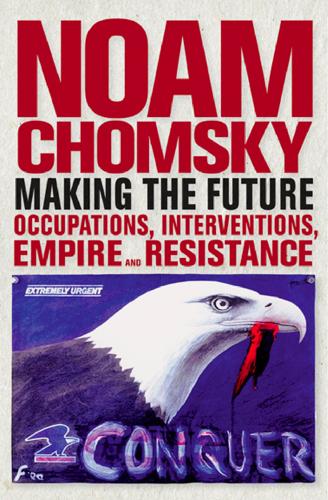
Making the Future: The Unipolar Imperial Moment
by
Noam Chomsky
Published 15 Mar 2010
“The world is dividing into two blocs—the plutonomy and the rest,” Citigroup summarized. “The U.S., U.K. and Canada are the key plutonomies—economies powered by the wealthy.” As for the non-rich, they’re sometimes called the precariat—people who live a precarious existence at the periphery of society. The “periphery,” however, has become a substantial proportion of the population in the United States and elsewhere. So we have the plutonomy and the precariat: the 1 percent and the 99 percent, in the imagery of the Occupy movement—not literal numbers, but the right picture. The historic reversal in people’s confidence about the future is a reflection of tendencies that could become irreversible.
…
The May Day just past leads to somber reflection. A decade ago, a useful word was coined in honor of May Day by radical Italian labor activists: “precarity.” It referred at first to the increasingly precarious existence of working people “at the margins”—women, youth, migrants. Then it expanded to apply to the growing “precariat” of the core labor force, the “precarious proletariat” suffering from the programs of deunionization, flexibilization and deregulation that are part of the assault on labor throughout the world. By that time, even in Europe there was mounting concern about what labor historian Ronaldo Munck, citing Ulrich Beck, calls the “Brazilianization of the West . . . the spread of temporary and insecure employment, discontinuity and loose informality into Western societies that have hitherto been the bastions of full employment.”
…
The crash left the United States with levels of real unemployment comparable to the Great Depression, and in many ways worse, because under the current policies of the masters those jobs are not coming back, as they did through massive government stimulus during World War II and the following decades of the “golden age” of state capitalism. During the Great Moderation, American workers had become accustomed to a precarious existence. The rise of an American precariat was proudly hailed as a primary factor in the Great Moderation that brought slower economic growth, virtual stagnation of real income for the majority of the population, and wealth beyond the dreams of avarice for a tiny sector, mostly the agents of this historical transformation. The high priest of this magnificent economy was Alan Greenspan, described by the business press as “saintly” for his brilliant stewardship.
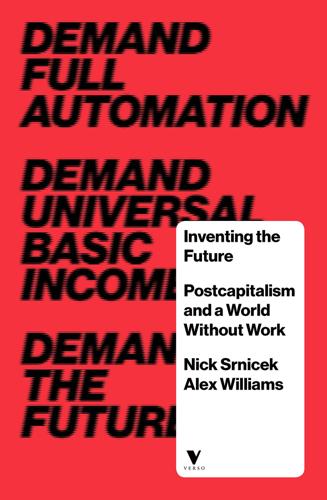
Inventing the Future: Postcapitalism and a World Without Work
by
Nick Srnicek
and
Alex Williams
Published 1 Oct 2015
Another, much smaller, set of arguments has been interested in the claim that the surplus population has a secular trend to grow in size. 49.Marx, Capital, Volume I, p. 798. 50.Richard Duboff, ‘Full Employment: The History of a Receding Target’, Politics & Society 7: 1 (1977), pp. 7–8. 51.While NAIRU is debatable as a measure of full employment, the postwar period saw unemployment typically below NAIRU, and the neoliberal period has seen unemployment consistently above NAIRU. Jared Bernstein and Dean Baker, ‘Full Employment: The Recovery’s Missing Ingredient’, Washington Post, 3 November 2014, p. 10; José Nun, ‘The End of Work and the “Marginal Mass” Thesis’, Latin American Perspectives 27: 1 (2000), p. 8; Guy Standing, The Precariat: The New Dangerous Class (London: Bloomsbury Academic, 2011), pp. 46–7; Jeffrey Straussman, ‘The “Reserve Army” of Unemployed Revisited’, Society 14: 3 (1977), p. 42. 52.Economic Projections of Federal Reserve Board Members and Federal Reserve Bank Presidents, December 2014, Federal Reserve Board, 2014, pdf available at federal-reserve.gov, p. 1. 53.Claire Cain Miller, ‘As Robots Grow Smarter, American Workers Struggle to Keep Up’, New York Times, 15 December 2014. 54.Bureau of Labor Statistics, ‘Civilian Employment–Population Ratio’, Federal Reserve Bank of St Louis, 2014, at research.stlouisfed.org; Deepankar Basu, The Reserve Army of Labour in the Postwar US Economy: Some Stock and Flow Estimates, Working Paper (Amherst: University of Massachusetts, 2012), p. 7. 55.ILO, Global Employment Trends 2014, p. 17. 56.The job growth rate dropped from 1.7 per cent between 1991 and 2007 to 1.2 per cent between 2007 and 2014.
…
ILO, World Employment and Social Outlook, p. 16; ILO, World Employment and Social Outlook, p. 29. 57.Ibid., p. 20. 58.Workers in developing economies, of course, have long lived under conditions of precarity. The new concern for precarity is therefore a symptom of the collapse of a model of work peculiar to developed economies in the postwar period. 59.A more thorough exploration of these characteristics can be found in Standing, Precariat, pp. 10–11. 60.Marx, Capital, Volume I, p. 789. 61.Francis Green, Tarek Mostafa, Agnès Parent-Thirion, Greet Vermeylen, Gijs van Houten, Isabella Biletta and Maija Lyly-Yrjanainen, ‘Is Job Quality Becoming More Unequal?’, Industrial & Labor Relations Review 66: 4 (2013), pp. 770–1; Andrew Glyn, Capitalism Unleashed: Finance, Globalization, and Welfare (Oxford: Oxford University Press, 2007), p. 114. 62.Carrie Gleason and Susan Lambert, Uncertainty by the Hour, pp. 1–3, pdf available at opensocietyfoundations.org. 63.While this aspect of precarity has often been emphasised, irregular work still remains a small portion of the labour market in most advanced capitalist countries.
…
Gregory Elliot (London: Verso, 2014), p. 67. 126.ILO, ‘Trends’, World Employment and Social Outlook, p. 23. 127.Peter Cappelli, ‘The Path Not Studied: Schools of Dreams More Education Is Not an Economic Elixir’, Issues in Science and Technology, 27 November 2013, at issues.org; Stanley Aronowitz, Dawn Esposito, William DiFazio and Margaret Yard, ‘The Post-Work Manifesto’, in Stanley Aronowitz and Jonathan Cutler, eds, Post-Work: The Wages of Cybernation (New York: Routledge, 1998), p. 48; Stefan Collini, What Are Universities For? (London: Penguin, 2012); Andrew McGettigan, The Great University Gamble: Money, Markets and the Future of Higher Education (London: Pluto Press, 2013). 128.Standing, Precariat, p. 45. 129.Notably, even Paul Krugman and Lawrence Summers are doubtful that skills training will be able to solve the upcoming problems. Paul Krugman, ‘Sympathy for the Luddites’, New York Times, 13 June 2013; Lawrence Summers, ‘Roundtable: The Future of Jobs’, presented at The Future of Work in the Age of the Machine, Hamilton Project, Washington, DC, 19 February 2015, at hamiltonproject.org. 130.Glyn, Capitalism Unleashed, pp. 27–31. 131.Harvey, Companion to Marx’s Capital, Volume 1, pp. 284–5. 132.PMI surveys suggest the annual growth rate has been 2 per cent, which is far below what has been standard for global GDP growth.
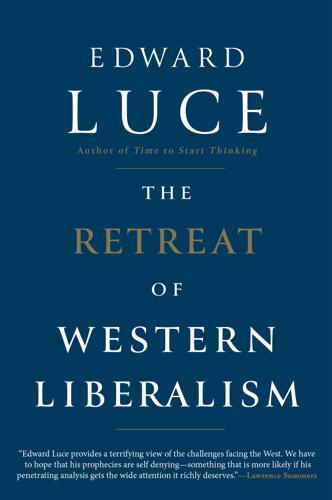
The Retreat of Western Liberalism
by
Edward Luce
Published 20 Apr 2017
‘It is an open question whether this is a market correction in democracy, or a global depression,’ Francis Fukuyama tells me.4 The backlash of the West’s middle classes, who are the biggest losers in a global economy that has been rapidly converging, but still has decades to go, has been brewing since the early 1990s. In Britain we call them the ‘left-behinds’. In France, they are the ‘couches moyennes’. In America, they are the ‘squeezed middle’. A better term is the ‘precariat’ – those whose lives are dominated by economic insecurity. Their weight of numbers is growing. So, too, is their impatience. Barrington Moore, the American sociologist, famously said, ‘No bourgeoisie, no democracy.’ In the coming years we will find out if he was right. This book is divided into four parts.
…
advertising, 65–6, 178 Afghanistan, 80 Africa: Chinese investment in, 32, 84; economic growth in, 21, 31, 32; future importance of, 200–1; and liberal democracy, 82, 83, 183; migration from, 140, 181; slave trade, 23, 55, 56 African-Americans, 104 age demographics, 34–5, 155, 156; ageing populations, 39; baby boom years, 39, 121; and gig economy, 64; life expectancy, 38, 58, 59, 60; millennials, 40–1, 121–2; and support for democracy, 121–2; and voter turnout, 103–4 Airbnb, 63 Albright, Madeleine, 6 American Revolution, 9 Andorra, 72 Andreessen, Marc, 61 Apple, 27, 31, 59, 60, 156 Arab Spring, 12, 82 Arab world, 202 Arendt, Hannah, The Origins of Totalitarianism, 128 Aristotle, 138, 200 artificial intelligence, 13, 34, 51–5, 56, 60–2 Asian Development Bank, 84 Asian economies, 21–2, 162; as engine of global growth, 21, 30, 31, 32; and Industrial Revolution, 23–4; and optimism, 202; of South Asia, 31; see also China; India Asian flu crisis (1997), 29 Asian Infrastructure Investment Bank (AIIB), 84 Attlee, Clement, 90 Australia, 84, 160, 167, 175 Austria, 15–16, 116 autocracy: and America’s post-9/11 blunders, 80–1, 85, 86; authoritarian nature of Trump, 133, 169, 171, 178–9; China as, 78, 80, 83–6, 159–60, 165, 201; and end of Cold War, 5, 78–9; and First World War, 115; and Great Recession, 83–4; and illiberal democracy, 204; myth of as more efficient, 170–1; popular demagogues, 137; rising support for, 11, 73, 82–3, 122 automation: and Chinese workforce, 62, 169; communications technology, 13, 52–5, 56–7, 59–60, 61–6, 67–8 see also digital revolution; and education, 197, 198; and Henry Ford, 66–7; political responses to, 67–8; steam revolution, 24, 55–6; techno-optimists, 52, 60; in transport, 54, 55, 56–7, 58, 59, 61 Bagehot, Walter, 115 Baker Institute, 68 Baldwin, Richard, 25, 27, 61 Bangladesh, 32 bank bail-outs, 193 Bannon, Steve, 130, 148, 173, 181–2 Belgium, 140 Bell, Daniel, 37 Berlin Wall, fall of (1989), 3–5, 6, 7, 74, 77 Bernstein, Carl, 132 Berra, Yogi, 57 Bhagwati, Jagdish, 159 Bismarck, Otto von, 42, 78, 120, 156, 161 Black Death, 25 Blair, Tony, 45, 89–90, 91 Blum, Léon, 116 Boer War (1899-1902), 155, 156 Bortnikov, Alexander, 6 Botswana, 82 Brazil, 29 Brecht, Bertolt, 86, 87 Breitbart News, 148 Brexit, 15, 73, 88, 92, 98, 101, 104, 119, 120, 163; UKIP’s NHS spending claim, 102; urban–hinterland split in vote, 47, 48, 130; xenophobia during campaign, 100–1 Britain: elite responses to Nazi Germany, 117; foreign policy goals, 179; gig economy, 63; growth of inequality in modern era, 43, 46, 47, 48, 50–1; history in popular imagination, 163; Imperial Preference, 22; London’s elites, 98–100, 130; nineteenth-century franchise extension, 114–15; policy towards China, 164; rapid expansion in nineteenth century, 24; and rise of Germany, 156, 157; rising support for authoritarianism, 122; separatism within, 140; Thatcher’s electoral success, 189–90 British East India Company, 22 British National Party (BNP), 100 Brown, Gordon, 99 Brownian movement, 172 Bryan, William Jennings, 111 Brynjolfsson, Erik, 60 Buffet, Warren, 199 Bush, George W., 31, 73, 79–81, 103, 156, 157, 163, 165, 182 Bush Republicans, 189 Cameron, David, 15, 92, 98, 99–100 Carnegie, Andrew, 42–3 Cherokee Indians, 114, 134 Chicago, 48 China: as autocracy, 78, 80, 83–6, 159–60, 165, 201; circular view of history, 11; colonial exploitation of, 20, 22–3, 55; decoupling of economy from West (2008), 29–30, 83–4; democracy activists in, 86, 140; entry to WTO (2001), 26; exceptionalism, 166; expulsion of Western NGOs, 85; future importance of, 200–1; and global trading system, 19–20, 26–7; Great Firewall in, 129; handover of Hong Kong (1997), 163–4; history in popular imagination, 163–4; hostility to Western liberalism, 84–6, 159–60, 162; and hydrogen bomb, 163; and Industrial Revolution, 22, 23–4; internal migration in, 41; investment in developing countries, 32, 84; military expansion, 157, 158; as nuclear power, 175; Obama’s trip to (2009), 159–60; political future of, 168–9, 202; pragmatic development route, 28, 29–30; pre-Industrial Revolution economy, 22; rapid expansion of, 13, 20–2, 25–8, 30, 35, 58, 157, 159; and robot economy, 62; Shanghai Cooperation Organization, 80; Trump’s promised trade war, 135, 145, 149; and Trump’s victory, 85–6, 140; US naval patrols in seas off, 148, 158, 165; US policy towards, 25–6, 145–6, 157–61, 165; US–China war scenario, 145–53, 161; in Western thought, 161–2; Xi’s crackdown on internal dissent, 168; Zheng He’s naval fleet, 165–6 China Central Television (CCTV), 84, 85 Christianity, 10, 105 Churchill, Winston, 98, 117, 128, 169 cities, 47–51, 130 class: creeping gentrification, 46, 48, 50–1; emerging middle classes, 21, 31, 39, 159; in Didier Eribon’s France, 104–10; Golden Age for Western middle class, 33–4, 43; Hillaryland in USA, 87–8; ‘meritocracy’, 43, 44–6; mobility as vanishing in West, 43–6; move rightwards of blue-collar whites, 95–9, 102, 108–10, 189–91, 194–5; poor whites in USA, 95–6, 112–13; populism in late nineteenth century, 110–11; and post-war centre-left politics, 89–92, 99; ‘precariat’ (‘left-behinds’), 12, 13, 43–8, 50, 91, 98–9, 110, 111, 131; and Trump’s agenda, 111, 151, 169, 190; urban liberal elites, 47, 49–51, 71, 87–9, 91–5, 110, 204; West’s middle-income problem, 13, 31–2, 34–41 Clausewitz, Carl von, 161 Clinton, Bill, 26, 71, 73, 90, 97–8, 157–9 Clinton, Hillary, 15, 16, 47, 67, 79, 160, 188; 2016 election campaign, 87–8, 91–4, 95–6, 119, 133; reasons for defeat of, 94–5, 96–8 Cold War: end of, 3–5, 6, 7, 74, 77, 78, 117, 121; nuclear near misses, 174; in US popular imagination, 163; and Western democracy, 115–16, 117, 183 Colombia, 72 colonialism, European, 11, 13, 20, 22–3; anti-colonial movements, 9–10; and Industrial Revolution, 13, 23–5, 55–6 Comey, James, 133 communism, 3–4, 5, 6, 105–8, 115 Confucius Institutes, 84 Congress, US, 133–4 Copenhagen summit (2009), 160 Coughlin, Father, 113 Cowen, Tyler, 40, 50, 57 Crick, Bernard, 138 crime, 47 Crimea, annexation of (2014), 8, 173 Cuba, 165 Cuban Missile Crisis (1962), 165, 174 cyber warfare, 176–8 Cyborg, 54 D’Alema, Massimo, 90 Daley, Richard, 189 Danish People’s Party, 102 Davos Forum, 19–20, 27, 68–71, 72–3, 91, 121 de Blasio, Bill, 49 de Gaulle, Charles, 106, 116 de Tocqueville, Alexis, 38, 112, 126–7 democracy, liberal: as an adaptive organism, 87; and America’s Founding Fathers, 9, 112–13, 123, 126, 138; and Arab Spring, 82; Chinese view of US system, 85–6; communism replaces as bête noire, 115; concept of ‘the people’, 87, 116, 119–20; damaged by responses to 9/11 attacks, 79–81, 86, 140, 165; and Davos elite, 68–71; de Tocqueville on, 126–7; declining faith in, 8–9, 12, 14, 88–9, 98–100, 103–4, 119–23, 202–3; demophobia, 111, 114, 119–23; economic growth as strongest glue, 13, 37, 103, 201–2; efforts to suppress franchise, 104, 123; elite disenchantment with, 121; elite fear of public opinion, 69, 111, 118; failing democracies (since 2000), 12, 82–3, 138–9; and ‘folk theory of democracy’, 119, 120; Fukuyama’s ‘End of History’, 5, 14, 181; and global trilemma, 72–3; and Great Recession, 83–4; and Hong Kong, 164; idealism of Rousseau and Kant, 126; illiberal democracy concept, 119, 120, 136–7, 138–9, 204; in India, 201; individual rights and liberty, 14, 97, 120; late twentieth century democratic wave, 77–8, 83; and mass distraction, 127, 128–30; need for regaining of optimism, 202–3; need to abandon deep globalisation, 73–4; nineteenth-century fear of, 114–15; and plural society, 139; popular will concept, 87, 118, 119–20, 126, 137–8; post-Cold War triumphalism, 5, 6, 71; post-war golden era, 33–4, 43, 89, 116, 117; post-WW2 European constitutions, 116; and ‘precariat’ (‘left-behinds’), 12, 13, 43–8, 50, 91, 98–9, 110, 111, 131; the rich as losing faith in, 122–3; Russia’s hostility to, 6–8, 79, 85; space for as shrinking, 72–3; technocratic mindset of elites, 88–9, 92–5, 111; Trump as mortal threat to, 97, 104, 111, 126, 133–6, 138, 139, 161, 169–70, 178–84, 203–4; and US-led invasion of Iraq (2003), 8, 81, 85; Western toolkit for, 77–9; see also politics in West Diamond, Larry, 83 digital revolution, 51–5, 59–66, 67–8, 174; cyber-utopians, 52, 60, 65; debate over future impact, 56; and education, 197, 198; exponential rate of change, 170, 172, 197; internet, 34, 35, 127, 128, 129–30, 131, 163; internet boom (1990s), 34, 59; and low productivity growth, 34, 59, 60; as one-sided exchange, 66–7; and risk-averse/conformist mindset, 40 diplomacy and global politics: annexation of Crimea (2014), 8, 173; China’s increased prestige, 19–20, 26–8, 29–30, 35, 83–5, 159; declining US/Western hegemony, 14, 21–2, 26–8, 140–1, 200–1; existential challenges in years ahead, 174–84; multipolarity concept, 6–8, 70; and nation’s popular imagination, 162–3; parallels with 1914 period, 155–61; and US ‘war on terror’, 80–1, 140, 183; US–China relations, 25–6, 145–6, 157–61, 165; US–China war scenario, 145–53, 161; US–Russia relations under Obama, 79 Doha Round, 73 drugs and narcotics, 37–8 Drutman, Lee, 68 Dubai, 48 Durkheim, Émile, 37 Duterte, Rodrigo, 136–7, 138 economists, 27 economy, global see global economy; globalisation, economic; growth, economic Edison, Thomas, 59 education, 42, 44–5, 53, 55, 197, 198 Egypt, 82, 175 electricity, 58, 59 Elephant Chart, 31–3 Enlightenment, 24, 104 entrepreneurialism, decline of in West, 39–40 Erdoğan, Recep Tayyip, 137 Eribon, Didier, 104–10, 111 Ethiopia, 82 Europe: ‘complacent classes’ in, 40; decline of established parties, 89; geopolitical loss, 141; growth of inequality in modern era, 43; identity politics in, 139–40; migration crisis, 70, 100, 140, 180–1; nationalism in, 10–11, 102, 108–9; nineteenth-century diplomacy, 7–8, 155–6, 171–2; post-war constitutions in, 116; Putin’s interference in, 179, 180; as turning inwards, 14 European Commission, 118, 120 European Union, 72, 117–19, 139–40, 179–80, 181, 201; see also Brexit Facebook, 39, 54, 67, 178 fake news, 130, 148, 178–9 Farage, Nigel, 98–9, 100, 184 fascism, 5, 77, 97, 100, 117 Federal Bureau of Investigation (FBI), 131–2, 133 Felt, Mark, 131–2, 134 financial crisis, global (2008), 27, 29, 30, 91; Atlantic recession following, 30, 63–4, 83–4 financial services, 54 Financial Times, 136, 200 Finland, 139 First World War, 115, 154–5 Flake, Jeff, 134 Florida, Richard, 47, 49, 50, 51 Flynn, Michael, 148, 149 Foa, Roberto Stefan, 123 Ford, Henry, 66–7 Foucault, Michel, 107 France, 15, 37, 63, 102, 104–10, 116; 1968 Paris demonstrations, 188; French Revolution, 3 Franco, General Francisco, 77 Franco-German War (1870–1), 155–6 Frank, Robert H., 30, 35–6, 44 Franklin, Benjamin, 204 Freelancer.com, 63 Friedman, Ben, The Moral Consequences of Economic Growth, 38 Friedman, Thomas, 74 Frontex (border agency), 181 FSB, 6 Fukuyama, Francis, 12, 83, 101, 139, 193–4; ‘The End of History?’
…
advertising, 65–6, 178 Afghanistan, 80 Africa: Chinese investment in, 32, 84; economic growth in, 21, 31, 32; future importance of, 200–1; and liberal democracy, 82, 83, 183; migration from, 140, 181; slave trade, 23, 55, 56 African-Americans, 104 age demographics, 34–5, 155, 156; ageing populations, 39; baby boom years, 39, 121; and gig economy, 64; life expectancy, 38, 58, 59, 60; millennials, 40–1, 121–2; and support for democracy, 121–2; and voter turnout, 103–4 Airbnb, 63 Albright, Madeleine, 6 American Revolution, 9 Andorra, 72 Andreessen, Marc, 61 Apple, 27, 31, 59, 60, 156 Arab Spring, 12, 82 Arab world, 202 Arendt, Hannah, The Origins of Totalitarianism, 128 Aristotle, 138, 200 artificial intelligence, 13, 34, 51–5, 56, 60–2 Asian Development Bank, 84 Asian economies, 21–2, 162; as engine of global growth, 21, 30, 31, 32; and Industrial Revolution, 23–4; and optimism, 202; of South Asia, 31; see also China; India Asian flu crisis (1997), 29 Asian Infrastructure Investment Bank (AIIB), 84 Attlee, Clement, 90 Australia, 84, 160, 167, 175 Austria, 15–16, 116 autocracy: and America’s post-9/11 blunders, 80–1, 85, 86; authoritarian nature of Trump, 133, 169, 171, 178–9; China as, 78, 80, 83–6, 159–60, 165, 201; and end of Cold War, 5, 78–9; and First World War, 115; and Great Recession, 83–4; and illiberal democracy, 204; myth of as more efficient, 170–1; popular demagogues, 137; rising support for, 11, 73, 82–3, 122 automation: and Chinese workforce, 62, 169; communications technology, 13, 52–5, 56–7, 59–60, 61–6, 67–8 see also digital revolution; and education, 197, 198; and Henry Ford, 66–7; political responses to, 67–8; steam revolution, 24, 55–6; techno-optimists, 52, 60; in transport, 54, 55, 56–7, 58, 59, 61 Bagehot, Walter, 115 Baker Institute, 68 Baldwin, Richard, 25, 27, 61 Bangladesh, 32 bank bail-outs, 193 Bannon, Steve, 130, 148, 173, 181–2 Belgium, 140 Bell, Daniel, 37 Berlin Wall, fall of (1989), 3–5, 6, 7, 74, 77 Bernstein, Carl, 132 Berra, Yogi, 57 Bhagwati, Jagdish, 159 Bismarck, Otto von, 42, 78, 120, 156, 161 Black Death, 25 Blair, Tony, 45, 89–90, 91 Blum, Léon, 116 Boer War (1899-1902), 155, 156 Bortnikov, Alexander, 6 Botswana, 82 Brazil, 29 Brecht, Bertolt, 86, 87 Breitbart News, 148 Brexit, 15, 73, 88, 92, 98, 101, 104, 119, 120, 163; UKIP’s NHS spending claim, 102; urban–hinterland split in vote, 47, 48, 130; xenophobia during campaign, 100–1 Britain: elite responses to Nazi Germany, 117; foreign policy goals, 179; gig economy, 63; growth of inequality in modern era, 43, 46, 47, 48, 50–1; history in popular imagination, 163; Imperial Preference, 22; London’s elites, 98–100, 130; nineteenth-century franchise extension, 114–15; policy towards China, 164; rapid expansion in nineteenth century, 24; and rise of Germany, 156, 157; rising support for authoritarianism, 122; separatism within, 140; Thatcher’s electoral success, 189–90 British East India Company, 22 British National Party (BNP), 100 Brown, Gordon, 99 Brownian movement, 172 Bryan, William Jennings, 111 Brynjolfsson, Erik, 60 Buffet, Warren, 199 Bush, George W., 31, 73, 79–81, 103, 156, 157, 163, 165, 182 Bush Republicans, 189 Cameron, David, 15, 92, 98, 99–100 Carnegie, Andrew, 42–3 Cherokee Indians, 114, 134 Chicago, 48 China: as autocracy, 78, 80, 83–6, 159–60, 165, 201; circular view of history, 11; colonial exploitation of, 20, 22–3, 55; decoupling of economy from West (2008), 29–30, 83–4; democracy activists in, 86, 140; entry to WTO (2001), 26; exceptionalism, 166; expulsion of Western NGOs, 85; future importance of, 200–1; and global trading system, 19–20, 26–7; Great Firewall in, 129; handover of Hong Kong (1997), 163–4; history in popular imagination, 163–4; hostility to Western liberalism, 84–6, 159–60, 162; and hydrogen bomb, 163; and Industrial Revolution, 22, 23–4; internal migration in, 41; investment in developing countries, 32, 84; military expansion, 157, 158; as nuclear power, 175; Obama’s trip to (2009), 159–60; political future of, 168–9, 202; pragmatic development route, 28, 29–30; pre-Industrial Revolution economy, 22; rapid expansion of, 13, 20–2, 25–8, 30, 35, 58, 157, 159; and robot economy, 62; Shanghai Cooperation Organization, 80; Trump’s promised trade war, 135, 145, 149; and Trump’s victory, 85–6, 140; US naval patrols in seas off, 148, 158, 165; US policy towards, 25–6, 145–6, 157–61, 165; US–China war scenario, 145–53, 161; in Western thought, 161–2; Xi’s crackdown on internal dissent, 168; Zheng He’s naval fleet, 165–6 China Central Television (CCTV), 84, 85 Christianity, 10, 105 Churchill, Winston, 98, 117, 128, 169 cities, 47–51, 130 class: creeping gentrification, 46, 48, 50–1; emerging middle classes, 21, 31, 39, 159; in Didier Eribon’s France, 104–10; Golden Age for Western middle class, 33–4, 43; Hillaryland in USA, 87–8; ‘meritocracy’, 43, 44–6; mobility as vanishing in West, 43–6; move rightwards of blue-collar whites, 95–9, 102, 108–10, 189–91, 194–5; poor whites in USA, 95–6, 112–13; populism in late nineteenth century, 110–11; and post-war centre-left politics, 89–92, 99; ‘precariat’ (‘left-behinds’), 12, 13, 43–8, 50, 91, 98–9, 110, 111, 131; and Trump’s agenda, 111, 151, 169, 190; urban liberal elites, 47, 49–51, 71, 87–9, 91–5, 110, 204; West’s middle-income problem, 13, 31–2, 34–41 Clausewitz, Carl von, 161 Clinton, Bill, 26, 71, 73, 90, 97–8, 157–9 Clinton, Hillary, 15, 16, 47, 67, 79, 160, 188; 2016 election campaign, 87–8, 91–4, 95–6, 119, 133; reasons for defeat of, 94–5, 96–8 Cold War: end of, 3–5, 6, 7, 74, 77, 78, 117, 121; nuclear near misses, 174; in US popular imagination, 163; and Western democracy, 115–16, 117, 183 Colombia, 72 colonialism, European, 11, 13, 20, 22–3; anti-colonial movements, 9–10; and Industrial Revolution, 13, 23–5, 55–6 Comey, James, 133 communism, 3–4, 5, 6, 105–8, 115 Confucius Institutes, 84 Congress, US, 133–4 Copenhagen summit (2009), 160 Coughlin, Father, 113 Cowen, Tyler, 40, 50, 57 Crick, Bernard, 138 crime, 47 Crimea, annexation of (2014), 8, 173 Cuba, 165 Cuban Missile Crisis (1962), 165, 174 cyber warfare, 176–8 Cyborg, 54 D’Alema, Massimo, 90 Daley, Richard, 189 Danish People’s Party, 102 Davos Forum, 19–20, 27, 68–71, 72–3, 91, 121 de Blasio, Bill, 49 de Gaulle, Charles, 106, 116 de Tocqueville, Alexis, 38, 112, 126–7 democracy, liberal: as an adaptive organism, 87; and America’s Founding Fathers, 9, 112–13, 123, 126, 138; and Arab Spring, 82; Chinese view of US system, 85–6; communism replaces as bête noire, 115; concept of ‘the people’, 87, 116, 119–20; damaged by responses to 9/11 attacks, 79–81, 86, 140, 165; and Davos elite, 68–71; de Tocqueville on, 126–7; declining faith in, 8–9, 12, 14, 88–9, 98–100, 103–4, 119–23, 202–3; demophobia, 111, 114, 119–23; economic growth as strongest glue, 13, 37, 103, 201–2; efforts to suppress franchise, 104, 123; elite disenchantment with, 121; elite fear of public opinion, 69, 111, 118; failing democracies (since 2000), 12, 82–3, 138–9; and ‘folk theory of democracy’, 119, 120; Fukuyama’s ‘End of History’, 5, 14, 181; and global trilemma, 72–3; and Great Recession, 83–4; and Hong Kong, 164; idealism of Rousseau and Kant, 126; illiberal democracy concept, 119, 120, 136–7, 138–9, 204; in India, 201; individual rights and liberty, 14, 97, 120; late twentieth century democratic wave, 77–8, 83; and mass distraction, 127, 128–30; need for regaining of optimism, 202–3; need to abandon deep globalisation, 73–4; nineteenth-century fear of, 114–15; and plural society, 139; popular will concept, 87, 118, 119–20, 126, 137–8; post-Cold War triumphalism, 5, 6, 71; post-war golden era, 33–4, 43, 89, 116, 117; post-WW2 European constitutions, 116; and ‘precariat’ (‘left-behinds’), 12, 13, 43–8, 50, 91, 98–9, 110, 111, 131; the rich as losing faith in, 122–3; Russia’s hostility to, 6–8, 79, 85; space for as shrinking, 72–3; technocratic mindset of elites, 88–9, 92–5, 111; Trump as mortal threat to, 97, 104, 111, 126, 133–6, 138, 139, 161, 169–70, 178–84, 203–4; and US-led invasion of Iraq (2003), 8, 81, 85; Western toolkit for, 77–9; see also politics in West Diamond, Larry, 83 digital revolution, 51–5, 59–66, 67–8, 174; cyber-utopians, 52, 60, 65; debate over future impact, 56; and education, 197, 198; exponential rate of change, 170, 172, 197; internet, 34, 35, 127, 128, 129–30, 131, 163; internet boom (1990s), 34, 59; and low productivity growth, 34, 59, 60; as one-sided exchange, 66–7; and risk-averse/conformist mindset, 40 diplomacy and global politics: annexation of Crimea (2014), 8, 173; China’s increased prestige, 19–20, 26–8, 29–30, 35, 83–5, 159; declining US/Western hegemony, 14, 21–2, 26–8, 140–1, 200–1; existential challenges in years ahead, 174–84; multipolarity concept, 6–8, 70; and nation’s popular imagination, 162–3; parallels with 1914 period, 155–61; and US ‘war on terror’, 80–1, 140, 183; US–China relations, 25–6, 145–6, 157–61, 165; US–China war scenario, 145–53, 161; US–Russia relations under Obama, 79 Doha Round, 73 drugs and narcotics, 37–8 Drutman, Lee, 68 Dubai, 48 Durkheim, Émile, 37 Duterte, Rodrigo, 136–7, 138 economists, 27 economy, global see global economy; globalisation, economic; growth, economic Edison, Thomas, 59 education, 42, 44–5, 53, 55, 197, 198 Egypt, 82, 175 electricity, 58, 59 Elephant Chart, 31–3 Enlightenment, 24, 104 entrepreneurialism, decline of in West, 39–40 Erdoğan, Recep Tayyip, 137 Eribon, Didier, 104–10, 111 Ethiopia, 82 Europe: ‘complacent classes’ in, 40; decline of established parties, 89; geopolitical loss, 141; growth of inequality in modern era, 43; identity politics in, 139–40; migration crisis, 70, 100, 140, 180–1; nationalism in, 10–11, 102, 108–9; nineteenth-century diplomacy, 7–8, 155–6, 171–2; post-war constitutions in, 116; Putin’s interference in, 179, 180; as turning inwards, 14 European Commission, 118, 120 European Union, 72, 117–19, 139–40, 179–80, 181, 201; see also Brexit Facebook, 39, 54, 67, 178 fake news, 130, 148, 178–9 Farage, Nigel, 98–9, 100, 184 fascism, 5, 77, 97, 100, 117 Federal Bureau of Investigation (FBI), 131–2, 133 Felt, Mark, 131–2, 134 financial crisis, global (2008), 27, 29, 30, 91; Atlantic recession following, 30, 63–4, 83–4 financial services, 54 Financial Times, 136, 200 Finland, 139 First World War, 115, 154–5 Flake, Jeff, 134 Florida, Richard, 47, 49, 50, 51 Flynn, Michael, 148, 149 Foa, Roberto Stefan, 123 Ford, Henry, 66–7 Foucault, Michel, 107 France, 15, 37, 63, 102, 104–10, 116; 1968 Paris demonstrations, 188; French Revolution, 3 Franco, General Francisco, 77 Franco-German War (1870–1), 155–6 Frank, Robert H., 30, 35–6, 44 Franklin, Benjamin, 204 Freelancer.com, 63 Friedman, Ben, The Moral Consequences of Economic Growth, 38 Friedman, Thomas, 74 Frontex (border agency), 181 FSB, 6 Fukuyama, Francis, 12, 83, 101, 139, 193–4; ‘The End of History?’
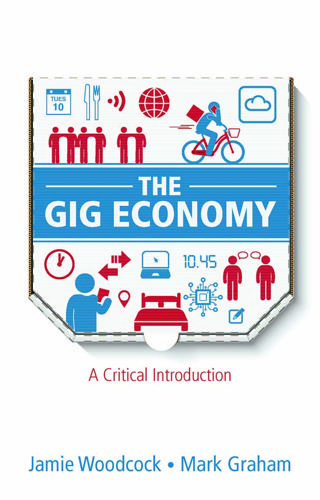
The Gig Economy: A Critical Introduction
by
Jamie Woodcock
and
Mark Graham
Published 17 Jan 2020
In a similar vein, Pierre Bourdieu (1998: 95) argues that ‘précarité’ is a ‘new mode of domination in public life … based on the creation of a generalized and permanent state of insecurity aimed at forcing workers into submission, into the acceptance of exploitation’. Guy Standing (2011) goes even further, claiming that this has led to the formation of a new class: the ‘precariat’. What each of these positions is trying to argue is that there has been a significant break from the ‘standard employment relationship’, meaning we are now entering a new phase of the organization of work. The criticisms of these positions tend to focus on a rejection of two aspects – either the empirical basis or the implications of what is being argued.
…
At its core, his argument is an attempt to counter the ideology of neoliberalism by insisting that work is still really the same – and therefore trade unions can continue to organize in the same way that they have before. Similar critiques have been made against Guy Standing’s assertion that an entirely new class of worker has been created. Perhaps the most useful of these comes from Richard Seymour (2012, quoted in Woodcock, 2017: 136), who argues that the concept of the precariat ‘remains at best a purely negative, critical concept’, unable to actually describe or explain a social class. Nevertheless, Seymour notes that it identifies something that requires further attention: if people feel more precarious, then this is an important dimension for understanding work. Thinking about this in relation to the gig economy, it is selfevident that these new kinds of work are more precarious than established forms.
…
Available at: http://www.pewinternet.org/2016/11/17/gig-work-online-selling-and-home-sharing/ Solon, O. (2018) The rise of ‘pseudo-AI’: How tech firms quietly use humans to do bots’ work. The Guardian, 6 July. Available at: https://www.theguardian.com/technology/2018/jul/06/artificial-intelligence-ai-humans-bots-tech-companies Srnicek, N. (2017) Platform Capitalism. Cambridge: Polity. Standing, G. (2011) The Precariat: The New Dangerous Class. London: Bloomsbury. Standing, G. (2016) The Corruption of Capitalism: Why Rentiers Thrive and Work Does Not Pay. London: Biteback Publishing. Sundararajan, A. (2017) The Sharing Economy: The End of Employment and the Rise of Crowd-Based Capitalism. Cambridge, MA: MIT Press.

The Digital Party: Political Organisation and Online Democracy
by
Paolo Gerbaudo
Published 19 Jul 2018
This trend is epitomised by the rapid growth of causalised workers such as call centre workers, riders for delivery companies such as Deliveroo, Uber drivers or warehouse workers as those of Amazon104 among many other typical profiles of the so-called ‘gig economy’.105 These figures can be considered as part of the ‘precariat’, an emerging class which, in his General Theory of the Precariat, Italian activist and theorist Alex Foti describes as ‘the underpaid, underemployed, underprotected, overeducated, and overexploited’.106 What is more, many fear the job-destroying avalanche of the incoming second automation revolution, with robots predicted to eliminate many manual jobs such as drivers substituted by self-driving cars, and artificial intelligence threatening to destroy clerical jobs, such as those in the legal and accounting sectors.
…
A good account of this development is provided in Trebor Scholz, Uber-worked and underpaid: how workers are disrupting the digital economy (New York: John Wiley & Sons, 2017). 105. Valerio De Stefano, ‘The rise of the just-in-time workforce: on-demand work, crowdwork, and labor protection in the gig-economy’, Comparative Labor Law and Policy Journal 37 (2015): 471. 106. Alex Foti, General theory of the precariat: great recession, revolution, reaction (Amsterdam: Institute of Network Cultures, 2017). 107. Nicholas Kulish, ‘Direct Democracy, 2.0’, New York Times Sunday Review, 5 May 2012, retrieved from www.nytimes.com/2012/05/06/sunday-review/direct-democracy-2-0.html. 108. Alessandro Gilioli, ‘Chi sono gli elettori del Movimento 5 Stelle e di Beppe Grillo’, L’Espresso, 30 January 2014, retrieved from espresso.repubblica.it/palazzo/2014/01/30/news/chi-sono-gli-elettori-del-movimento-5-stelle-1.150530#gallery-slider=undefined. 109.
…
Political parties in Western democracies. Piscatawy, NJ: Transaction Publishers, 1980. Fanon, Frantz. Black skin, white masks. New York: Grove Press, 2008. Floridia, Antonio e Rinaldo Vignati, ‘Deliberativa, diretta o partecipativa?’, Quaderni di Sociologia 65 (2014): 51–74. Foti, Alex. General theory of the precariat: great recession, revolution, reaction. Theory on Demand, 2017. Friedman, Thomas L. The world is flat: a brief history of the twenty-first century. New York: Macmillan, 2005. Fuchs, D. Participatory, liberal and electronic democracy. In T. Zittel and D. Fuchs, eds, Participatory democracy and political participation: can participatory engineering bring citizens back in?
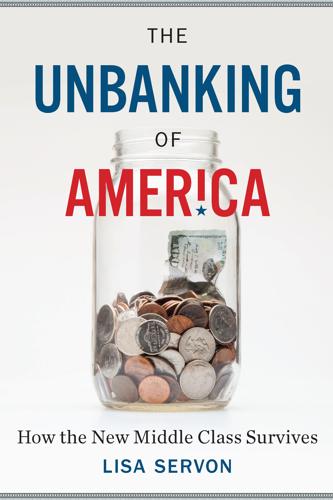
The Unbanking of America: How the New Middle Class Survives
by
Lisa Servon
Published 10 Jan 2017
Raphael, “The American Middle Class Is Shrinking,” Public Radio International, December 13, 2015. http://www.pri.org/stories/2015-12-13/american-middle-class-shrinking “screwed”: Kevin Drum, “Chart of the Day: Even the Rich Think the Middle Class Is Getting Screwed,” Mother Jones, March 15, 2015. http://www.motherjones.com/kevin-drum/2015/03/chart-day-even-rich-think-middle-class-getting-screwed “doing worse than you”: Haley Sweetland Edwards, “The Middle Class Is Doing Worse Than You Think,” Time, April 8, 2015. http://time.com/3814048/income-inequality-middle-class/ “turning proletarian”: Joel Kotkin, “The US Middle Class Is Turning Proletarian,” Forbes, February 16, 2014. http://www.forbes.com/sites/joelkotkin/2014/02/16/the-u-s-middle-class-is-turning-proletarian/#2715e4857a0b284313c82f29 “the precariat, an emerging class”: Guy Standing, A Precariat Charter: From Denizens to Citizens (London: Bloomsbury, 2014), p. 1. “unnecessary and amoral”: Ibid., p. x. 48 Nearly half of Americans now: Christopher Matthews, “Nearly Half of America Lives Paycheck-to-Paycheck,” Time, January 30, 2014. http://time.com/2742/nearly-half-of-america-lives-paycheck-to-paycheck/ Nearly half could not come: Kasey Wiedrich et al., “Treading Water in the Deep End: Findings from the 2014 Assets and Opportunity Scorecard” (Washington, DC: Corporation for Enterprise Development, January 2016). http://assetsandopportunity.org/scorecard/about/main_findings/ “enjoys less opportunity”: Ronald Brownstein, “Meet the New Middle Class: Who They Are, What They Want, and What They Fear,” The Atlantic, April 25, 2013. http://www.theatlantic.com/business/archive/2013/04/meet-the-new-middle-class-who-they-are-what-they-want-and-what-they-fear/275307/ “redefined to mean not”: FTI Consulting, “Allstate/National Journal Heartland Monitor XVI Key Findings,” memorandum (Washington, DC: FTI Consulting, April 15, 2013). http://heartlandmonitor.com/wp-content/uploads/2013/04/Tab-5-ASNJ-Heartland-Monitor-16-Key-Findings-Memo-04-15-13-1230-PM-ET.pdf 50 “in the eighteen-month period”: Tim Ranney and Mike Cook, “Changing Patterns and Behaviors of Unsecured Short-Term Loan Consumers” (Clearwater, FL: Clarity Services, 2011). https://www.nonprime101.com/wp-content/uploads/2015/02/1376498431_Clarity-Services-Consumers-Behavior-White-Paper.pdf 2015 study using updated: MDRC (Manpower Demonstration Research Corporation), “The Subprime Lending Database Exploration Study: Initial Findings,” unpublished paper (New York: MDRC, December 23, 2015).
…
Why Working Hard Is No Longer Enough in America” and “Dear Middle Class: Welcome to Poverty.” These ominous tidings appear in the media with increasing regularity. The middle class is “shrinking,” “screwed,” “doing worse than you think,” and “turning proletarian.” The economist Guy Standing labels this new group “the precariat, an emerging class characterized by chronic insecurity” and calls what has been happening to its members “unnecessary and amoral.” At the same time that the banking industry has reneged on its responsibilities to ordinary consumers, the larger economic context in which we make financial decisions has changed in ways that make the American Dream an unattainable fantasy for far too many people.
…
“The Increasingly Unequal States of America: Income Inequality by State, 1917 to 2012.” Washington, DC: Economic Policy Institute, 2015. Stack, Carol B. All Our Kin. New York: Basic Books, 1975. Stahl, Ashley. “The 5.4 Percent Unemployment Rate Means Nothing for Millennials.” Forbes, May 11, 2015. Standing, Guy. A Precariat Charter: From Denizens to Citizens. London: Bloomsbury, 2014. Stango, Victor. “Some New Evidence on Competition in Payday Lending Markets.” Contemporary Economic Policy, vol. 30, no. 2 (2012): 149–61. Stempel, Jonathan. “US Agency Claims Darden Won’t Hire ‘Old White Guys’ for Dining Chain.” Reuters, February 12, 2015.
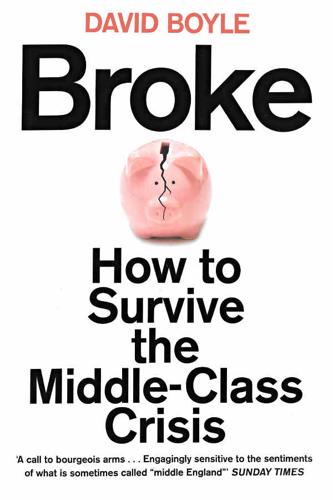
Broke: How to Survive the Middle Class Crisis
by
David Boyle
Published 15 Jan 2014
[3] One fifth of the school places in Deborah’s borough are independent. [4] William Leith, ‘Have the middle class lost their place?’, Daily Telegraph, 23 Oct. 2011. [5] Huffington Post, 1 Mar. 2012. [6] Guardian, 20 Nov. 2011. [7] The Times, 22 May 2006. [8] Guy Standing, The Precariat: The new dangerous class (London, Bloomsbury, 2011). [9] Guy Standing, ‘The Precariat — the new dangerous class’, Policy Network, 24 May 2011. [10] Resolution Foundation. [11] Daily Mail, 23 Jun. 2011. [12] Shelter, online statement, 6 Mar. 2012. [13] UK average: 347 per cent. [14] Daycare Trust/Save the Children Fund survey, Sept. 2011
…
Even by the middle of the last decade — years before the financial crisis — the number of middle-class families earning more than £30,000 who were looking for debt advice had tripled.[7] These were the boom years. It had nothing to do with the global downturn. When the Bath University professor Guy Standing coined the phrase ‘the Precariat’ in 2011, to describe those on low to middle incomes that exist in a precarious succession of short-term contracts, my impression is that it wasn’t intended to include the traditional middle class (he calls them the ‘salariat’).[8] But in fact the same precarious existence, struggling with the costs of a respectable, civilized life, while the generous Victorian provision of parks and libraries shrinks before their eyes, is affecting the middle classes too.
…
When the Bath University professor Guy Standing coined the phrase ‘the Precariat’ in 2011, to describe those on low to middle incomes that exist in a precarious succession of short-term contracts, my impression is that it wasn’t intended to include the traditional middle class (he calls them the ‘salariat’).[8] But in fact the same precarious existence, struggling with the costs of a respectable, civilized life, while the generous Victorian provision of parks and libraries shrinks before their eyes, is affecting the middle classes too. Perhaps not so corrosively, but as a terrifying future prospect that they can see all too clearly, it is there. The Precariat has no control over its time — that is Guy Standing’s definition — and one definition of the middle classes since the Industrial Revolution is that they have leisure time.[9] Of course the middle classes still have some control over their time, over-mortgaged and over-indebted as they are, but it is increasingly uncertain.
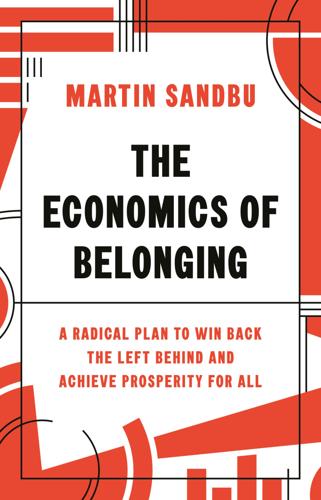
The Economics of Belonging: A Radical Plan to Win Back the Left Behind and Achieve Prosperity for All
by
Martin Sandbu
Published 15 Jun 2020
Policy has generally failed to counteract the growing economic precariousness of ordinary people’s lives, even where inequality has increased only moderately (nowhere has it failed to rise at all). This is most striking in labour markets. It is paradoxical that the most liberalised labour markets in the West (typically the English-speaking countries) and the most heavily regulated ones (the “Latin” countries: France and southern Europe) have both seen the emergence of a “precariat”—an underclass of workers trapped in erratic, unpredictable, and impoverishing conditions. In “flexible” labour markets, this is because they permit workers to be hired with little job security and no guarantee of minimum hours worked (or paid for), sometimes known as zero-hours contracts. In conjunction with the disappearance of union-regulated factory jobs, this has naturally made insecure work more prevalent.
…
And this works in reverse as well: the psychological impact of precariousness aggravates the economic dynamics that leave people behind. The stress of insecurity worsens individuals’ decision-making by eroding their cognitive abilities and their aptitude for long-term planning and commitment1—precisely the sorts of skills that jobs in the modern economy increasingly demand. In some countries, this new “precariat” has added to the ranks of a deprived and vulnerable group that had shrunk but never quite gone away; in others it constitutes the bewildering return of a problem that had entirely disappeared except in the historical and literary memory of a distant past. It is the worst manifestation of economic dependence and disempowerment.
…
Robert Moffitt and Sisi Zhang, “Income Volatility and the PSID: Past Research and New Results” (NBER Working Paper No. 24390, National Bureau of Economic Research, Cambridge, MA, March 2018), https://www.nber.org/papers/w24390; Robert Moffitt and Sisi Zhang, “Income Volatility and the PSID: Past Research and New Results,” AEA Papers and Proceedings 108 (2018): 277–80, https://doi.org/10.1257/pandp.20181048; Noah Smith, “America Is Poorer Than It Thinks,” Bloomberg Opinion, 26 November 2018, https://www.bloomberg.com/opinion/articles/2018-11-26/poverty-in-america-greater-than-statistics-indicate; Daniel Tomlinson, Irregular Payments: Assessing the Breadth and Depth of Month to Month Earnings Volatility, Resolution Foundation, 15 November 2018, https://www.resolutionfoundation.org/publications/irregular-payments/. 8. Martin Sandbu, “The Rise of the Precariat,” Financial Times, 6 August 2015, https://www.ft.com/content/d42ddef4-3c1b-11e5-8613-07d16aad2152. 9. Sarah O’Connor, “The New World of Work: Recovery Driven by Rise in Temp Jobs,” Financial Times, 4 August 2015, https://www.ft.com/content/b2171222-31e4-11e5-8873-775ba7c2ea3d. 10. Marcel Fratzscher, “A German Debate over the Future of Europe Is Long Overdue,” Financial Times, 28 February 2017, https://www.ft.com/content/54d0ed6e-fda7-11e6-8d8e-a5e3738f9ae4. 11.
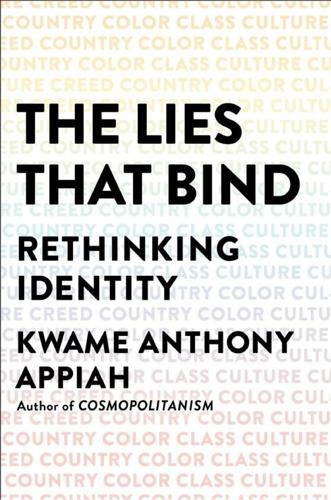
The Lies That Bind: Rethinking Identity
by
Kwame Anthony Appiah
Published 27 Aug 2018
This top 6 percent of the population has an average income of more than £89,000 ($115,000), education at elite universities like Oxford and Cambridge, and a network of social connections to one another and into the old aristocracy. And there’s still a well-defined place at the bottom: 15 percent of the British population is now what Savage and his colleagues called the “precariat,” with low incomes (typically around £8,000, or a little over $10,000, after taxes), irregular, unstable employment, few savings, and few social connections to the classes above them. Only about 3 percent of the children of the precariat get a college education.33 But between these two classes, Savage identified five distinct groups, clusters of financial, social, and cultural capital, which are not easily ranked against each other: emergent service workers, like chefs and production assistants, who go to gigs, play sports, and use gyms and social media; a traditional working class, like truck drivers and office cleaners, who mostly don’t do these things; a class of newly affluent workers; a technical middle class; and an established middle class, who work in the professions and in upper management.
…
Yet, researchers have found, many elite schools—including Brown, Dartmouth, Penn, Princeton, and Yale—take more students from the top 1 percent of the income distribution than from the bottom 60 percent.47 “American meritocracy,” the Yale law professor Daniel Markovits, drawing on similar research, argues, “has thus become precisely what it was invented to combat: a mechanism for the dynastic transmission of wealth and privilege across generations.” To the extent that you can predict that disproportionately many of the children of the elite will—and disproportionately many of the children of the precariat will not—achieve a position in the top tier of wealth, power, and privilege, you have something too much like the intergenerational transmission of status that marks systems of caste. In Markovits’s view, “Meritocracy now constitutes a modern-day aristocracy, one might even say, purpose-built for a world in which the greatest source of wealth is not land or factories but human capital, the free labor of skilled workers.”48 These problems received some attention in the United States after the election in 2016 of Donald Trump; some people think the alienation of poorer whites from the “coastal elites” is in part a result of the former’s recognition that the latter have fixed the game to the advantage of their families.
…
But the problem is not particularly American. In China, too, wealth and status is 80 percent determined, using one measure, by the wealth and status of your parents. (For women, it’s even more.)49 And that is a society whose ruling party officially set out nearly a century ago to abolish class. In Britain, the alienation of the precariat from the cosmopolitan elites who mostly live in London—an alienation that manifested itself in the pattern of voting on Brexit—reflects a similar concentration of our three kinds of capital in a self-perpetuating upper class. Michael Young, who lived to be eighty-six, saw what was happening. Writing at the start of the new century, a year before his death in 2002, he lamented that educational institutions had been enlisted into a newly calcifying form of social stratification.
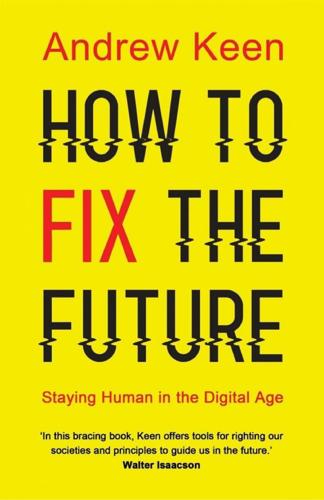
How to Fix the Future: Staying Human in the Digital Age
by
Andrew Keen
Published 1 Mar 2018
In the industrial age, there was the “proletariat”—the armies of permanent wage laborers who worked in the factories. Today, however, in a network age of increasing inequality between rich and poor, there is the “precariat”—a growing class of impermanently employed folks who scrape out a living renting out their spare rooms via Airbnb, delivering groceries on Instacart, or driving their cars for one of the new ridesharing companies. The operating system for labor in a networked economy, where 40 percent of all American workers are predicted to become members of the precariat by 2020,28 is changing with dizzying rapidity. But what, unfortunately, isn’t changing with anything like the same speed is the way in which the law is applied to protect these badly paid, precariously employed workers from rapacious private superpowers like Uber.
…
It’s not only Liss-Riordan who is fixing this problem. Many other entrepreneurs, regulators, consumers, educators, and workers are also working to build an on-demand economy that is simultaneously innovative and fair. You’ll remember that four out of ten Americans are predicted to become part of the precariat by 2020—a prediction covering every industry from entertainment and media to transportation, education, legal, and health care.40 So this is one of the great issues of our time. If we get it right, we can guarantee a decent quality of work for future generations. It’s easy, of course, to vilify a pantomime figure like the former Uber CEO Travis Kalanick, the libertarian multibillionaire who used to sport an image of Ayn Rand on his Twitter profile.
…
In an attempt to protect affordable housing, both Berlin and Barcelona have clamped down on Airbnb, with Berlin banning the renting of apartments to tourists and Barcelona aggressively cracking down on illegal rentals.49 Even Iceland, in order to control the prices of the local market, has passed a law restricting the number of days that properties can be rented out on Airbnb.50 The precariat itself is also taking to the streets in order to change the system. In August 2016, drivers of UberEATS, Uber’s food-delivery service, picketed London restaurants to demand that Uber pay them the London living hourly wage of a guaranteed £9.40 ($12.10).51 And in November 2016 there was a national protest in the United States by Uber drivers demanding a $15 minimum wage.52 In May 2016, meanwhile, the thirty-five thousand Uber drivers in New York agreed to form an organization called the Independent Drivers Guild, which would be affiliated with more traditional industrial labor unions.53 Indeed, one of the first actions of this guild was an April 2017 petition, signed by eleven thousand drivers, requiring Uber to include a tipping option in its app.54 And so I recently became able to electronically tip good Uber drivers like that polite young man from Pakistan who transported me to Shannon Liss-Riordan’s office in downtown Boston.
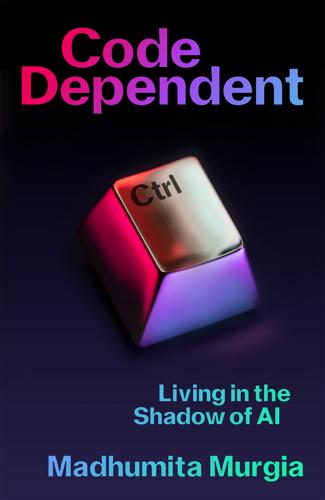
Code Dependent: Living in the Shadow of AI
by
Madhumita Murgia
Published 20 Mar 2024
In 2019 she converted Sama into a for-profit social enterprise, or a B-corp, for which she raised nearly $15m of private funding, including from Meta, formerly known as Facebook. The relationship would later prove to be a complicated one. Most of Sama’s employees – roughly 3,000 of them – are youths from Kenya. It also operates in Uganda and India, where its workers are more educated, but equally impoverished, part of a global precariat. The company serves a who’s who of corporate America – from Google, Facebook, Apple and Tesla, to Walmart, Nvidia, Ford and Microsoft. Benja, Ian and their colleagues have worked on Tesla’s self-driving cars, Walmart’s online product search, Apple’s Face ID and Instagram’s content filters. They even helped train AI chatbot ChatGPT, launched by OpenAI just over a year ago.
…
Armin’s story shows what it can feel like to be the human in an automated employment system: the frustration and paranoia, the loss of camaraderie and community, the absence of redress. It’s the irony of a structure that is wholly dependent on human labour, yet treats its workers like automatons. He’s hardly a lone case. While working for Uber, Armin was part of a global precariat, an emerging class of people whose livelihoods are insecure and unstable, those whose employers have reach and control of their lives even outside of work.4 They are the same fraternity as the freelance data labourers in Nairobi and Bulgaria, working for a living wage to train AI systems that will bring in billions of dollars of revenue for the companies designing them.
…
CHAPTER 7: YOUR BOSS 1 Troy Griggs and Daisuke Wakabayashi, ‘How a Self-Driving Uber Killed a Pedestrian in Arizona’, The New York Times, March 21, 2018, https://www.nytimes.com/interactive/2018/03/20/us/self-driving-uber-pedestrian-killed.html. 2 Tyler Sonnemaker, ‘UberEats Could Be Underpaying Delivery Drivers on 21% of Trips, According to a Programmer Who Reportedly Built a Tool That Found the App Was Lowballing the Miles That Drivers Traveled’, Business Insider, August 21, 2020, https://www.businessinsider.com/uber-eats-driver-who-scraped-data-alleges-wage-theft-report-2020-8?r=US&IR=T. 3 Matthew Gault, ‘Uber Shuts Down App That Told Drivers If Uber Underpaid Them’, Vice News, February 18, 2021, https://www.vice.com/en/article/wx8yvm/uber-shuts-down-app-that-lets-users-know-how-badly-theyve-been-cheated. 4 Guy Standing, The Precariat: The New Dangerous Class (Bloomsbury Publishing, 2011). 5 Heather Stewart, ‘“Stop or I’ll Fire You”: The Driver Who Defied Uber’s Automated HR’, The Guardian, April 16, 2023, https://www.theguardian.com/technology/2023/apr/16/stop-or-ill-fire-you-the-driver-who-defied-ubers-automated-hr. 6 Delphine Strauss and Siddharth Venkataramakrishnan, ‘Dutch Court Rulings Break New Ground on Gig Worker Data Rights’, Financial Times, March 12, 2021, https://www.ft.com/content/334d1ca5-26af-40c7-a9c5-c76e3e57fba1. 7 Amanda Sperber and Nichole Sobecki, ‘Uber Made Big Promises in Kenya.
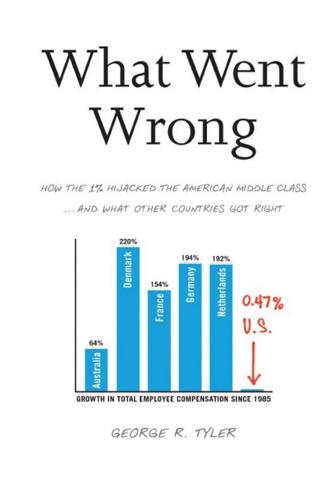
What Went Wrong: How the 1% Hijacked the American Middle Class . . . And What Other Countries Got Right
by
George R. Tyler
Published 15 Jul 2013
Indeed, Australians were likely stunned by data showing a sharp rise during 2012 in those holding precarious employment.49 At a few Australian multinationals such as the giant miner BHP Billiton, systematic management strategies have seen regular employees dwindle to be a minority.50 Precariats also include victimized Australians working for employers adopting the American-style independent contractor scam, common at US firms such as FedEx or SuperShuttle.51 While comprising a smaller share of the German workforce, the number of precariats has risen there as well since the 2003 labor market reforms. Trade unions have responded by negotiating worksite agreements in some sectors, which require that precariats receive the same pay as regular employees.52 The rise in precariats was an important factor in the German minimum wage debate. Expanding codeterminism to Australia and America may neutralize the precarious employment business model to some degree. Yet the German trend is sobering and emphasizes the need for strengthening family-friendly labor market rules everywhere. In particular, precariats should receive competitive pay and fringe benefits after a limited training period as suggested by the German Bertelsmann Foundation.53 Tax Reform, Including Closing Tax Havens A first priority is improving tax equity.
…
German sociologist Hajo Holst contends that these loopholes are profit-driven rather than reaction to inflexible labor markets.48 Among the family capitalism countries, precariats are perhaps most common in Australia. Indeed, Australians were likely stunned by data showing a sharp rise during 2012 in those holding precarious employment.49 At a few Australian multinationals such as the giant miner BHP Billiton, systematic management strategies have seen regular employees dwindle to be a minority.50 Precariats also include victimized Australians working for employers adopting the American-style independent contractor scam, common at US firms such as FedEx or SuperShuttle.51 While comprising a smaller share of the German workforce, the number of precariats has risen there as well since the 2003 labor market reforms.
…
,” New York Times, Aug. 5, 2012. 42 Hugh Carnegy, “Titan Hits Out at French Productivity,” Financial Times, Feb 20, 2013. 43 Agence France-Presse, “EU Tax on Chinese Mandarin,” Le Figaro, Feb. 22, 2013. http://www.lefigaro.fr/flash-eco/2013/02/22/97002-20130222FILWWW00619-ue-une-taxe-sur-les-mandarines-chinoises.php. 44 Erin Hatton, “The Rise of the Permanent Temp Economy,” New York Times, Jan. 26, 2013. 45 Steven Greenhouse, “A Part-Time Life, as Hours Shrink and Shift,” New York Times, Oct. 28, 2012. 46 Ibid. 47 Guy Standing, The Precariat: The New Dangerous Class (London: Bloomsbury Academic, 2012). 48 Thomas Magenheim-Hörmann, “Shut Up and Keep Working,” Berliner Zeitung, March 29, 2012. 49 Chris Zappone, “Bad Jobs Trap Looms for Workers,” Sydney Morning Herald, Nov. 1, 2012, http://www.smh.com.au/business/the-economy/bad-jobs-trap-looms-for-workers-20121101-28lf2.html. 50 Tim Colebatch, “BHP Wants to Be Free of Unions,” Sydney Morning Herald, May 18, 2012. 51 Steve Greenhouse, “Working Life (High and Low),” New York Times, April 20, 2008.
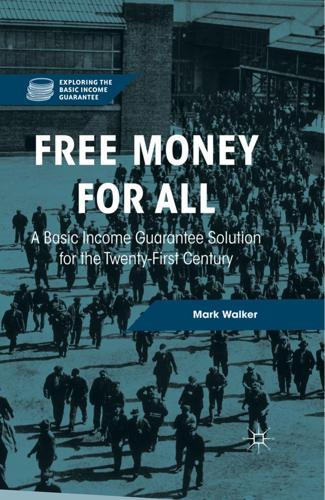
Free Money for All: A Basic Income Guarantee Solution for the Twenty-First Century
by
Mark Walker
Published 29 Nov 2015
On the other hand, it may be that BIG provides a bigger boost than the naive prediction indicates. It is no secret that many low paying jobs provide unpredictable employment. Part-time jobs and seasonal jobs typically offer workers very little guarantee in terms of regular employment. This bourgeoning segment of the labor market has been dubbed the “precariat” by Guy Standing.20 The enormous uncertainty in the lives of the precariat worker is no doubt a source of unhappiness. Even a modest BIG of $10,000 could boost happiness more than we would predict on the basis of income alone, if the fact that it is guaranteed makes a difference to how vulnerable workers feel. Universal health insurance is also another confounding variable.
…
(National Bureau of Economic Research, 2013), http://www.nber.org/papers/ w18992. 18. Daniel W. Sacks, Betsey Stevenson, and Justin Wolfers, “The New Stylized Facts about Income and Subjective Well-Being,” Emotion 12, 6 (2012): 1181–1187. 19. Data are reported by Stevenson and Wolfers, Subjective Well-Being and Income. 20. G. Standing, The Precariat: The New Dangerous Class (New York: Bloomsbury, 2011). 21. The Gallup Poll is based on household income but BIG is paid individually. Households with more than one adult will have a lower net tax, since they will be eligible for more than one BIG payment. 22. Bruno S. Frey, “Happiness: A Revolution in Economics,” MIT Press Books 1 (2008).
…
“Production Systems, Inheritance, and Inequality in Premodern Societies.” Current Anthropology 51, 1 (2010): 85–94. Sofge, Erik. “3 New Farm Bots Programmed to Pick, Plant and Drive.” Popular Mechanics, 2009. http://www.popularmechanics.com/ technology/engineering/robots/4328685. Standing, G. The Precariat: The New Dangerous Class. New York: Bloomsbury, 2011. “State & County Quick Facts.” The United States Census Bureau, April 29, 2015. http://quickfacts.census.gov/qfd/states/00000.html. Stevenson, Betsey, and Justin Wolfers. Subjective Well-Being and Income: Is There Any Evidence of Satiation?. National Bureau of Economic Research, 2013. http://www.nber.org/papers/w18992.
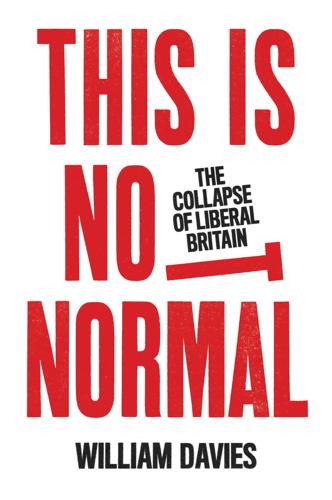
This Is Not Normal: The Collapse of Liberal Britain
by
William Davies
Published 28 Sep 2020
This means accepting that they won’t pay their tax in full, granting them the residency rights that they desire, relieving them of inconvenient obligations to be transparent (of the sort the EU might have imposed, in relation to money-laundering, say). All of this would be in the hope that these people continue to spend time in post-Brexit Britain and splash some of their cash around. Finally there is the class that has become known as the ‘precariat’, which will surely expand in post-Brexit Britain. The vote against immigration was really a vote against a multicultural precariat: the eastern and southern Europeans who do relatively low-wage, low-security work in the UK. We still don’t know the future of these migrants or how far their numbers will reduce in future. Given that immigration tends to rise and fall in correlation to economic growth, perhaps Brexit will achieve reduced immigration after all.
…
This is the cluster of platforms and services known as the ‘sharing economy’. These seek to push a rentier mentality into more and more corners of society, making the ownership of assets (homes, bedrooms, cars, capital equipment, free time, and so on) the condition of an income. The opportunities for the precariat to be administered and employed via digital platforms have only just begun to be explored, but have huge potential. This fulfils a liberal dream of allowing labour to find its ‘correct’ price in an entirely flexible, maximally liquid market, just as financial markets do for shares and bonds according to the Efficient Markets Hypothesis.
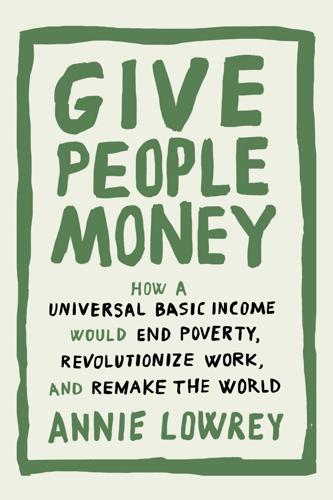
Give People Money
by
Annie Lowrey
Published 10 Jul 2018
I had beers with European intellectuals enthralled with the idea. I talked with Hill aides convinced that a UBI would be a part of a 2020 presidential platform. I spoke with advocates certain that in a decade, millions of people around the world would have a monthly check to fall back on—or else would make up a miserable new precariat. I heard from philosophers convinced that our understanding of work, our social contract, and the underpinnings of our economy were about to undergo an epochal transformation. The more I learned about UBI, the more obsessed I became with it, because it raised such interesting questions about our economy and our politics.
…
Luis and Josefa talked about the pressure and the stress of their uncertain schedules, and the strain of knowing their children were growing up deprived. At the end of her shift at Raising Cane’s, climbing into Luis’s car, one of the Ortiz daughters told me that she often did not eat dinner. “The smell of the chicken fills me up,” she said. The working poor, the precariat, the left behind: this is modern-day America. We no longer have a jobs crisis, with the economy recovering to something like full employment a decade after the start of the Great Recession. But we do have a good-jobs crisis, a more permanent, festering problem that started more than a generation ago.
…
In any given year, one in three workers leave a job. Millions of others experience a family illness, an eviction, a car breaking down. Self-employment and contract work, falling benefits and rising costs—driven by worker disempowerment, wage stagnation, and high inequality—have together created a kind of precariat that overlaps and exists just below the middle class, itself shrinking. One in three families has no savings, and half would have to borrow or sell something to come up with $400 in an emergency. A safety net is a tool to prevent deprivation among some. Universal cash benefits are a tool of insurance and self-determination for all.

The Internet Is Not the Answer
by
Andrew Keen
Published 5 Jan 2015
“It’s just the next step in a decades-old trend of fragmenting jobs, isolating workers and driving down wages.”18 And with 7.5 million Americans working in part-time jobs in July 2014 because they didn’t have full-time jobs, Leah Busque’s “revolutionizing” of the world’s workforce is, in truth, a reflection of a new poorly paid class of peer-to-peer project workers, dubbed the “precariat” by the labor economist Guy Standing.19 “With piecemeal gigs easier to obtain than long-term employment,” warns the New York Times’ Natasha Singer, this highly insecure labor model, the dark underbelly of DIY capitalism, is becoming an increasingly important piece of the new networked economy.20 But that’s all beside the point for these self-styled disrupters who, without our permission, are building the distributed capitalist architecture of the early twenty-first century.
…
Rather than an Internet Bill of Rights, what we really need is an informal Bill of Responsibilities that establishes a new social contract for every member of networked society. Silicon Valley has fetishized the ideals of collaboration and conversation. But where we need real collaboration is in our conversation about the impact of the Internet on society. This is a conversation that affects everyone from digital natives to the precariat to Silicon Valley billionaires. And it’s a conversation in which we all need to take responsibility for our online actions—whether it’s our narcissistic addiction to social media, our anonymous cruelty, or our lack of respect for the intellectual property of creative professionals. The answer lies in the kind of responsible self-regulation laid out in William Powers’s Hamlet’s BlackBerry, his excellent guide for building a good life in the digital age.67 “You have only one identity,” Mark Zuckerberg so memorably trivialized the complexity of the human condition.
…
Harris, “The Airbnb Economy in New York: Lucrative but Often Unlawful,” New York Times, November 4, 2013. 16 Alexia Tsotsis, “TaskRabbit Gets $13M from Founders Fund and Others to ‘Revolutionize the World’s Labor Force,’” TechCrunch, July 23, 2012. 17 Brad Stone, “My Life as a TaskRabbit,” Bloomberg Businessweek, September 13, 2012. 18 Sarah Jaffe, “Silicon Valley’s Gig Economy Is Not the Future of Work—It’s Driving Down Wages,” Guardian, July 23, 2014. 19 Guy Standing, The Precariat: The New Dangerous Class (Bloomsbury Academic, 2001). 20 Natasha Singer, “In the Sharing Economy, Workers Find Both Freedom and Uncertainty,” New York Times, August 16, 2014. 21 George Packer, “Change the World,” New Yorker, May 27, 2013, newyorker.com/reporting/2013/05/27/130527fa_fact_packer.
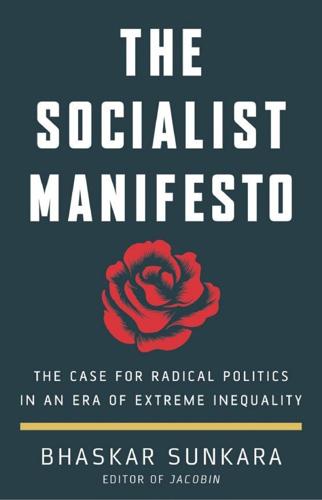
The Socialist Manifesto: The Case for Radical Politics in an Era of Extreme Inequality
by
Bhaskar Sunkara
Published 1 Feb 2019
The twenty-first-century working class is fragmented. William Morris wrote in 1885 that while workers are a class, socialists must convince them “they ought to be Society.” Now we have to convince them about the class part, too. Though the working class has changed, the shifts are overstated by those who proclaim this to be the era of the “precariat.” There’s nothing new about workers suffering through precarious, low-wage employment. After all, Karl Kautsky confronted the question of working-class heterogeneity in the 1880s, the “golden age” of the industrial proletariat, as did Engels when he studied 1840s Manchester. Whatever semblance of security existed in the past was not due to the inherent nature of “pre-neoliberal” capitalism but the result of successful class struggle and organization.
…
This is perfectly rational in conditions of reduced profitability or high uncertainty. 6. Vivek Chibber, “Why Do Socialists Talk So Much About Workers?” The ABCs of Socialism, edited by Bhaskar Sunkara (London: Verso, 2016). 7. Kim Moody, “The State of American Labor,” Jacobin, June 20, 2016, jacobinmag.com/2016/06/precariat-labor-us-workers-uber-walmart-gig-economy. 8. See Eric Blanc’s writing in Jacobin, including: “The Lessons of West Virginia,” March 9, 2018; “Red Oklahoma,” April 13, 2018; “Arizona Versus the Privatizers,” April 30, 2018; “Betting on the Working Class,” May 29, 2018. 9. Eric Blanc and Jane McAlevy, “A Strategy to Win,” Jacobin, April 18, 2018, jacobinmag.com/2018/04/teachers-strikes-rank-and-file-union-socialists. 10.
…
See also civil rights political strategy, 215–237 and class struggle, 31, 74, 75, 83, 216–219, 224–228 democratization, 233–234 in election campaigns, 204, 205, 212, 217–218 government involvement, 108, 109, 110, 218–220 historical awareness, 236–237 immediate reforms, 220–223 mass mobilization, 223–224 political party formation, 229–230 and unions, 228–229 See also reformism Pompidou, Georges, 105 Popular Front, France, 109–111 Popular Front, United States, 178, 179–180 population increase, 37 populism and Debs, 167, 170–171 and political strategy, 218 of right wing, 2–3, 213, 219–220 Populist Movement, 163–164, 171 Poverty of Philosophy, The (Marx), 44 Pravda (newspaper), 84 precariat, 225 predatory capitalism, 210 profit sharing, 119–120 Progress and Poverty (George), 164 Progressive Party, United States, 181–182 proletariat cooperation with peasants, 88–89, 99, 112–113, 133, 139 dictatorship of, 47, 54, 66, 85, 91, 98, 144 living conditions of, 40 migration to cities, 37–38 origin of, 37, 42 political influence of, 76, 101, 137 substitute proletariats, 131 and Trotsky, 87, 96 proportional voting, 233–234 protests against war, 2, 75–76 as class tool, 219 of CPC, 144 following Ferguson events, 198–199 Haymarket Square, 163 Occupy Movement, 196–198 in Russia, 86, 88 Wisconsin uprising, 195–196 Provisional Government (Russia), 88–92 public services.

After the Gig: How the Sharing Economy Got Hijacked and How to Win It Back
by
Juliet Schor
,
William Attwood-Charles
and
Mehmet Cansoy
Published 15 Mar 2020
The independent contractor model is an example of what labor scholars call “precarious work” or work that is “uncertain, unpredictable, and risky from the point of the worker,” to use sociologist Arne Kalleberg’s definition.62 First identified as a trend in the 1980s, scholars have been chronicling the increasing tendency of employers to outsource work, convert employees into contractors, take away benefits, and devolve risk. Different terms have been coined to describe this process—the creation of a precariat, fissuring, risk shift, responsibilization63—but they all contend that the stable employment regime of the post-World War II period has been eroded, with precarious labor taking its place. Uberization drives precarity to its limit.64 While some observers think this new regime gives workers freedom and autonomy,65 most precarity scholars emphasize income instability and the lack of security.
…
This is consistent with our argument about how dependency affects algorithmic control. 60. Bowles (1985); Schor and Bowles (1987); Schor (1988). 61. U.S. estimates are from Schor and Bowles (1987). U.K is Schor (1988). See also Pacitti (2011) on the cost of job loss and the Great Recession. 62. Kalleberg (2009, 2). 63. “Precariat” is from Guy Standing (2011); “fissuring” from David Weil (2014); “responsibilization” from Foucault originally, but for this context see Rose (1999); great “risk shift” from Jacob Hacker (2008). See also Kalleberg (2009, 2018); Pugh (2015); and Vallas and Kalleberg (2018). For an analysis of precarity and exploitation in the platform economy, which also addresses racial and gender differences, see van Doorn (2017). 64.
…
Sperling, Gene. 2015. “How Airbnb Combats Middle Class Income Stagnation.” Airbnb and Sperling Economic Strategies. www.stgeorgeutah.com/wp-content/uploads/2015/07/MiddleClassReport-MT-061915_r1.pdf. Srnicek, Nick. 2016. Platform Capitalism. Theory Redux. Cambridge: Polity. Standing, Guy. 2011. The Precariat: The New Dangerous Class. London: Bloomsbury. Stefano, Valerio de. 2016. “The Rise of the ‘Just-in-Time Workforce’: On-Demand Work, Crowdwork, and Labor Protection in the ‘Gig Economy.’ ” Comparative Labor Law & Policy Journal 37 (3): 471–504. Stein, Joel. 2015. “Baby, You Can Drive My Car, and Do My Errands, and Rent My Stuff . . .”
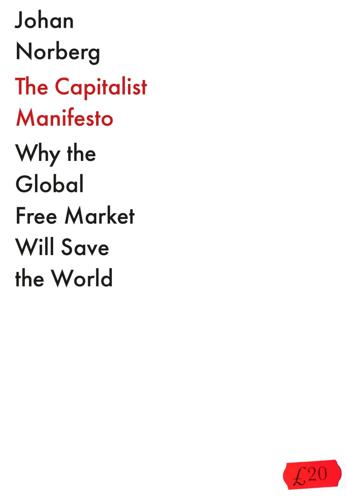
The Capitalist Manifesto
by
Johan Norberg
Published 14 Jun 2023
This in turn has made it popular to talk about the global economy as a geopolitical winner-takes-all game, where we have to introduce trade barriers and renationalize value chains. According to this narrative, growth in the West benefited mainly the rich, while the wages of the general public have stagnated for decades. Inequality has skyrocketed and employees have become a new precariat that has to drag itself along, insecure and stressed out. The factories have closed and the working class has been wiped out, sometimes even physically, by ‘deaths of despair’ (a term we’ll look at in chapter 3). In the market, monopolies have returned, predominantly in the form of a small circle of untouchable tech giants that have entered more and more areas and crushed the sympathetic mom-and-pop stores.
…
Well, the strong autoworkers’ union managed to push the hourly wage up to about $1.3 – equivalent to around $14.5. It happens to be a little bit below the typical entry-level salary Amazon pays its warehouse workers. Does work pay? Anyone can look at the segment of the labour market that is having the toughest time at the moment and conclude that we are living in the age of the precariat. Some write whole books about it. But if we want to know how things are going for the population as a whole, individual stories are not enough. We need to see how things are going for employees in general: have wages stagnated, jobs become more precarious and wage earners been thrown into insecurity?
…
Magdalena Soffia, Alex Wood, Brendan Burchell, ‘Alienation is not “bullshit”: An empirical critique of Graeber’s theory of BS jobs’, Work, Employment and Society, June 2021. 29. Sarah Damaske, Matthew Zawadzki, Joshua M. Smyth, ‘Stress at work: Differential experiences of high versus low SES workers’, Social Science & Medicine 156, March 2016. 30. Alan Manning & Graham Mazeine, ‘Subjective job insecurity and the rise of the precariat: Evidence from the UK, Germany and the United States’, CEP Discussion Paper no.1712, August 2020. 31. See, e.g., Thor Berger, Carl Benedikt Frey, Guy Levin, Santosh Rao Danda, ‘Uber happy? Work and well-being in the “gig economy”’, Economic Policy, vol.34, no.99, 2019. 32. Linda Weidenstedt, Andrea Geissinger & Monia Lougui, ‘Why gig as a food courier?’

Lost Connections: Uncovering the Real Causes of Depression – and the Unexpected Solutions
by
Johann Hari
Published 1 Jan 2018
For the past thirty years, across almost all of the Western world, this kind of insecurity has been characterizing work for more and more people. Around 20 percent of people in the United States and Germany have no job contract, but instead have to work from shift to shift. The Italian philosopher Paolo Virno says11 we have moved from having a “proletariat”—a solid block of manual workers with jobs—to a “precariat,” a shifting mass of chronically insecure people who don’t know whether they will have any work next week and may never have a stable job. When Angela had a sense of a positive future, back when we were students, she had been a whirl of positivity. Now, sitting opposite me, talking about being choked off from a sense of a hopeful future, she was drained, almost affectless.
…
She described what the area was like when her grandparents lived there, and you could work in a factory and have a middle-class life—and she made a verbal slip. She meant to say “when I was young.” What she actually said was “when I was alive.” After she said that, I remembered what that Crow member told an anthropologist in the 1890s: “I am trying to live a life I do not understand.” Angela—and my other friends who have been swallowed into the precariat—can’t make sense of their lives, either: the future is constantly fragmenting. All the expectations they were raised with for what comes next seem to have vanished. When I told Angela about Michael Chandler’s studies, she smiled sadly. It made intuitive sense to her, she said. When you have a stable picture of yourself in the future, she explained, what it gives you is “perspective—doesn’t it?
…
But I’m not having a shitty life.’ ” She never expected, she says, to be partying with Jay-Z, or to own a yacht. But she did expect to be able to plan on an annual vacation. She did expect—by the time she got into her late thirties—to know who her employer would be next week, and the week after that. But instead, she got trapped in the precariat. And after that, nothing happened. CHAPTER 13 Causes Eight and Nine: The Real Role of Genes and Brain Changes The story we have been told about our brains—that we are depressed and anxious because they are simply and spontaneously low in serotonin—is not, I knew by now, true. Yet I saw that some people conclude from this that none of the biological stories on this subject we have been told are right—that they are entirely caused by social and psychological factors.

Red Moon
by
Kim Stanley Robinson
Published 22 Oct 2018
The netizens are mostly urban youth, content to live in their wrists and get by in the gig economy. They’re not working-class, they’re the hollowed-out middle class. Often very nationalistic. They’ve taken the Party line, and they don’t see how much they have in common with the migrants. They’re the precariat, do you know that word? No? Everyone’s precarious now, you should know that word. You’re the precariat. For us here, it’s the withouts. The two withouts, the three withouts, there are all kinds of variations on the withouts, but the main without is a hukou registration where you actually work. Those are the people you saw in that room.” “And are you their leader?”
…
If democracy came to China they would end up electing idiots, as in America. Best of a bad situation to let professionals work on these matters, meaning engineers, technicians, bureaucrats. Maybe. Or maybe not. Now he began to see that many or even most of these lines of young people snaking through the crowd were not urban youth, not the netizen precariat with their wristpads and part-time service jobs. These marchers were workers, looking weather-beaten even though young. They were the hardened and hungry internal migrants, the three withouts, the billion. Many of them had to have come to Beijing from far away, although quite a few looked as if they had arrived directly from work sites.
…
The leadership had probably overreacted to events elsewhere in the world, in particular the ongoing collapse of the Soviet empire. Seeing the trouble in Moscow they had panicked in Beijing, and so a number of idealistic protesters had died. Now he was caught in a crowd of such people. Workers and urban precariat, the three withouts and the two maybe withouts, some exploited by their hukou status, some by the gig economy, some simply unemployed. The so-called billion, converging on Beijing to support the rule of law, but also, Ta Shu thought, just a decent living. The return of the iron rice bowl, or maybe even the whole work unit system, which had given several generations some stability in China’s constantly shifting economy.
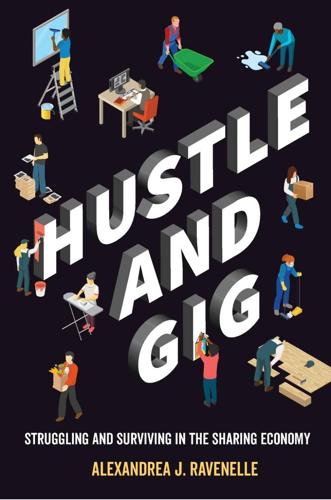
Hustle and Gig: Struggling and Surviving in the Sharing Economy
by
Alexandrea J. Ravenelle
Published 12 Mar 2019
While this casualization of the workplace and increasing transfer of risk to workers was once a defining characteristic of the secondary labor market, it has become much more pervasive and generalized, increasingly affecting managerial and professional workers.40 British economist Guy Standing warns that this instability has led to the “precariat,” a growing number of people “living and working precariously, usually in a series of short-term jobs, without recourse to stable occupational identities or careers, stable social protection or protective regulations.” This precariousness often leads to a sense of anxiety, anomie, alienation, and anger.41 The Wall Street Journal, a bastion of big business, suggests that the rumblings of worker discontent “highlight the ambivalence that many workers feel towards the platforms that supply or supplement their income.”
…
“Wall Street Loans Uber $1 Billion to Offer Subprime Auto Leases.” The Verge, June 3. Smith, Sandra Susan. 2003. “Exploring the Efficacy of African Americans’ Job Referral Networks: A Study of the Obligations of Exchange around Job Information and Influence.” Ethnic and Racial Studies 26(6):1029–45. Standing, Guy. 2014. The Precariat: The New Dangerous Class. London: Bloomsbury Academic. Stansell, Christine. 1987. City of Women: Sex and Class in New York, 1789–1860. Champaign: University of Illinois Press. Stevenson, Howard H., and David E. Gumpert. 1985. “The Heart of Entrepreneurship.” Harvard Business Review (March–April): 85–94.
…
See also consumer-to-consumer (C2C) sales platforms: architecture and, 17; co-opting of, 221n4; entrepreneurship and, 6; escrow services, 229n6; hands-off approach of, 45; information collection, 15; service fees, 5, 55–56, 79–80, 224n2 policy changes, 24, 74–79, 233n72. See also pivots Pooper, 173–74, 174fig. 13 portable benefits plan, 201–2, 203 possession monetization, 27 Postmates, 110–11, 127–28, 142, 155, 203 postrecession effects, 26–27 poverty, criminal activity and, 140, 142 precariat, defined, 37 price-fixing conspiracy lawsuit, 71 profiles: fake profiles, 140; guest screening and, 169; by Kitchensurfing, 57; profile pictures, 29, 47 promises, of Uber, 50, 54fig. 10 Pugh, Allison, 38 Pullman Palace Car Company, 68 putting-out system, 66, 68. See also piecemeal system race issues: digital divide and, 193; discrimination, 35–36, 193; race of chefs, 59; race of TaskRabbit workers, 56; segregation, 119; vulnerability categories, 193–94 Ravenelle, Alexandrea, 194 Reagan, Ronald, 178 recession effects, 26–27 recession of 1981–1982, 178 recirculation of goods, 27 recruitment: by Kitchensurfing, 57, 58–59; by Uber, 50 redress options, 6, 22 registration requirements, 222–23n64 regulation issues, 37 regulatory issues, 50 RelayRides, 33 rental cars, 2, 5 rentals: in East Village, 41, 129; Ellis Law, 41; landlord-tenant disputes, 13; long-term rentals, 39, 39–41; necessity of shared rentals, 132; rent-controlled residents, 41; renter protections, 41; short-term rentals, 19–20, 40, 149–50.
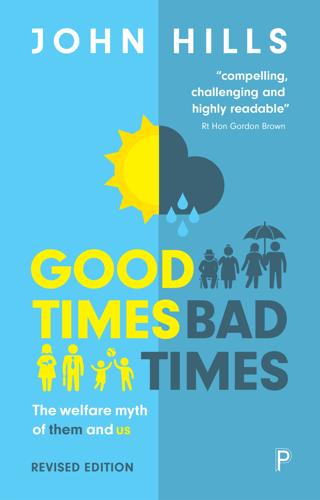
Good Times, Bad Times: The Welfare Myth of Them and Us
by
John Hills
Published 6 Nov 2014
Social Mobility and Child Poverty Commission (2013) The state of the nation: Social mobility and child poverty in Great Britain, London: HMSO. Social Mobility and Child Poverty Commission (2015) State of the nation 2015: Social mobility and child poverty in Great Britain, London: HMSO. Standing, G. (2011) The precariat: The new dangerous class, London: Bloomsbury Academic. Standing, G. (2014) A precariat charter: From denizens to citizens, London: Bloomsbury Academic. Stiglitz, J. (2012) The price of inequality, New York: Norton. Sutherland, H., Evans, M., Hancock, R., Hills, J. and Zantomio, E. (2008) The impact of tax and benefit reforms on incomes and poverty, York: Joseph Rowntree Foundation.
…
According to the ONS, by the spring of 2016, 900,000 people reported that they were on such contracts, five times the number reporting this in 2010 (although people may be more likely to report this status following recent publicity).12 And using results from a survey of businesses, the ONS estimated that in November 2015 as many as 1.7 million employee contracts did not specify a minimum number of hours (with more than 2 million in the summer months).13 At the same time, most of the growth in employment since the low point of the recession has been in ‘self-employment’. In many cases this involves highly variable, even casual, work, with very variable hours. If we repeated our survey today, we would probably find even more variation than there was a decade ago. This has contributed to the growth of what Guy Standing has labelled as a new ‘precariat’ – workers in insecure work with limited protection.14 The precariousness of people’s jobs is not just about variable hours; it is also about whether they are in work at all. While we recruited the group described above from people who had been in work at the end of 2002, some of them were actually out of work by the time we started tracking their incomes, while others lost and regained jobs during the year.
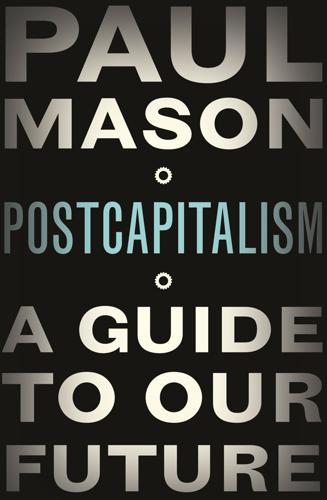
Postcapitalism: A Guide to Our Future
by
Paul Mason
Published 29 Jul 2015
The core workforce has been able to cling on to stable, permanent employment, with non-wage benefits attached to the job. The periphery must relate either as temporary agency workers, or via a network of contracting firms. But the core is shrunken: seven years into the post-2008 crisis, a permanent contract on a decent wage is an unattainable privilege for many people. Being part of the ‘precariat’ is all too real for up to a quarter of the population. For both groups flexibility has become the key attribute. Among skilled workers, much value is placed on the ability to reinvent yourself, to align yourself with short-term corporate objectives, to be good at forgetting old skills and learning new ones, to be a networker and above all to live the dream of the firm you work for.
…
The workforce of the global south will achieve higher living standards and at some point capital will react by introducing greater automation and pursuing higher productivity in the emerging markets. This will place the workers of China and Brazil on the same overall trajectory as the rich-world workforce, which is to become service-dominated, split into a skilled core and a precariat, with both layers seeing work partially de-linked from wages. In addition, as the Oxford Martin School suggests, it is the low-skilled service jobs that stand the highest risk of total automation over the next two decades. The global working class is not destined to remain for ever divided into factory drones in China and games designers in the USA.
…
Why pay people just to exist? Because we need to radically accelerate technological progress. If as the Oxford Martin School study suggested, 47 per cent of all jobs in an advanced economy will be redundant due to automation, then the result under neoliberalism is going to be an enormously expanded precariat. A basic income paid for out of taxes on the market economy gives people the chance to build positions in the non-market economy. It allows them to volunteer, set up co-ops, edit Wikipedia, learn how to use 3D design software, or just exist. It allows them to space out periods of work; make a late entry or early exit from working life; switch more easily into and out of high-intensity, stressful jobs.

Stakeholder Capitalism: A Global Economy That Works for Progress, People and Planet
by
Klaus Schwab
Published 7 Jan 2021
World Economic Forum, http://www3.weforum.org/docs/WEF_White_Paper_We_Will_Live_to_100.pdf. 34 “Labor Productivity and Costs,” Bureau of Labor Statistics, https://www.bls.gov/lpc/prodybar.htm. 35 “Decoupling of Wages from Productivity,” OECD, Economic Outlook, November 2018, https://www.oecd.org/economy/outlook/Decoupling-of-wages-from-productivity-november-2018-OECD-economic-outlook-chapter.pdf. 36 “Some Notes on the Scientific Methods of Simon Kuznets,” Robert Fogel, National Bureau of Economic Research, December 1987, https://www.nber.org/papers/w2461.pdf. 37 “Global Inequality is Declining—Largely Thanks to China and India,” Zsolt Darvas, Bruegel Institute, April 2018, https://bruegel.org/2018/04/global-income-inequality-is-declining-largely-thanks-to-china-and-india/. 38 “Upper-Middle-Income Countries,” World Bank, https://datahelpdesk.worldbank.org/knowledgebase/articles/906519-world-bank-country-and-lending-groups. 39 “China Lifts 740 Million Rural Poor Out of Poverty Since 1978,” Xinhua, September 2018, http://www.xinhuanet.com/english/2018-09/03/c_137441670.htm. 40 “Minneapolis Fed, “Income and Wealth Inequality in America, 1949–2016,” https://www.minneapolisfed.org/institute/working-papers-institute/iwp9.pdf. 41 “Piketty's Inequality Story in Six Charts,” John Cassidy, The New Yorker, March 2014, https://www.newyorker.com/news/john-cassidy/pikettys-inequality-story-in-six-charts. 42 “World Inequality Report, 2018,” https://wir2018.wid.world/files/download/wir2018-summary-english.pdf. 43 The Precariat: The New Dangerous Class, Guy Standing, 2011, https://www.bloomsbury.com/uk/the-precariat-9781849664561/. 44 Interview with Kalle Lasn by Peter Vanham, Vancouver, Canada, March 2012. 45 “World Inequality Report, 2018,” https://wir2018.wid.world/files/download/wir2018-summary-english.pdf. 46 “How Unequal Is Europe? Evidence from Distributional National Accounts, 1980–2017,” Thomas Blanchet, Lucas Chancel, Amory Gethin, World Economic Database, April 2019, https://wid.world/document/bcg2019-full-paper/. 47 EU income inequality decline: Views from an income shares perspective, Zsolt Darvas, Bruegel Institute, 2018, https://www.bruegel.org/2018/07/eu-income-inequality-decline-views-from-an-income-shares-perspective/. 48 “Wealth Inequality in the United States since 1913: Evidence from Capitalized Income Tax Data,” Emmanuel Saez and Gabriel Zucman, The Quarterly Journal of Economics, May 2016, http://gabriel-zucman.eu/files/SaezZucman2016QJE.pdf. 49 “Share of Total Income going to the Top 1% since 1900, Within-Country Inequality in Rich Countries,” Our World in Data, October 2016, https://ourworldindata.org/income-inequality. 50 “How America's 1% Came to Dominate Equity Ownership,” Robin Wigglesworth, Financial Times, February 2020, https://www.ft.com/content/2501e154-4789-11ea-aeb3-955839e06441. 51 It is nevertheless interesting to note, as Branko Milanovic has done, that while wealth inequality—driven primarily by stock ownership—is large and growing, there is no longer a true “capitalist” class as Karl Marx alleged in the 19th century.
…
In the UK a similar shift took place. The social and economic outcomes of this worsening inequality in the US have been highly problematic. There are again many working poor in America, a painful outcome in the wealthiest country the world has ever known. Guy Standing, a British economist, even coined the term precariat, to point to “an emerging class, comprising the rapidly growing number of people facing lives of insecurity, moving in and out of jobs that give little meaning to their lives.”43 Seen from this perspective, it is no wonder that in 2011, a one-page call for action in an activist magazine led to one of the most supported American protest movements of this century.
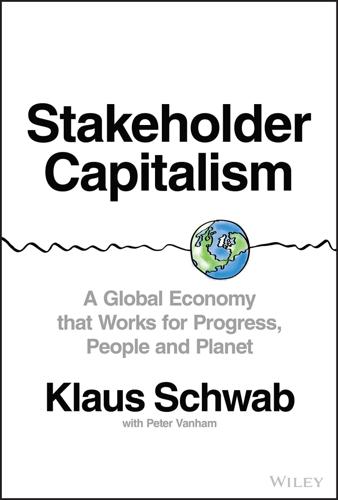
Stakeholder Capitalism: A Global Economy That Works for Progress, People and Planet
by
Klaus Schwab
and
Peter Vanham
Published 27 Jan 2021
World Economic Forum, http://www3.weforum.org/docs/WEF_White_Paper_We_Will_Live_to_100.pdf. 34 “Labor Productivity and Costs,” Bureau of Labor Statistics, https://www.bls.gov/lpc/prodybar.htm. 35 “Decoupling of Wages from Productivity,” OECD, Economic Outlook, November 2018, https://www.oecd.org/economy/outlook/Decoupling-of-wages-from-productivity-november-2018-OECD-economic-outlook-chapter.pdf. 36 “Some Notes on the Scientific Methods of Simon Kuznets,” Robert Fogel, National Bureau of Economic Research, December 1987, https://www.nber.org/papers/w2461.pdf. 37 “Global Inequality is Declining—Largely Thanks to China and India,” Zsolt Darvas, Bruegel Institute, April 2018, https://bruegel.org/2018/04/global-income-inequality-is-declining-largely-thanks-to-china-and-india/. 38 “Upper-Middle-Income Countries,” World Bank, https://datahelpdesk.worldbank.org/knowledgebase/articles/906519-world-bank-country-and-lending-groups. 39 “China Lifts 740 Million Rural Poor Out of Poverty Since 1978,” Xinhua, September 2018, http://www.xinhuanet.com/english/2018-09/03/c_137441670.htm. 40 “Minneapolis Fed, “Income and Wealth Inequality in America, 1949–2016,” https://www.minneapolisfed.org/institute/working-papers-institute/iwp9.pdf. 41 “Piketty's Inequality Story in Six Charts,” John Cassidy, The New Yorker, March 2014, https://www.newyorker.com/news/john-cassidy/pikettys-inequality-story-in-six-charts. 42 “World Inequality Report, 2018,” https://wir2018.wid.world/files/download/wir2018-summary-english.pdf. 43 The Precariat: The New Dangerous Class, Guy Standing, 2011, https://www.bloomsbury.com/uk/the-precariat-9781849664561/. 44 Interview with Kalle Lasn by Peter Vanham, Vancouver, Canada, March 2012. 45 “World Inequality Report, 2018,” https://wir2018.wid.world/files/download/wir2018-summary-english.pdf. 46 “How Unequal Is Europe? Evidence from Distributional National Accounts, 1980–2017,” Thomas Blanchet, Lucas Chancel, Amory Gethin, World Economic Database, April 2019, https://wid.world/document/bcg2019-full-paper/. 47 EU income inequality decline: Views from an income shares perspective, Zsolt Darvas, Bruegel Institute, 2018, https://www.bruegel.org/2018/07/eu-income-inequality-decline-views-from-an-income-shares-perspective/. 48 “Wealth Inequality in the United States since 1913: Evidence from Capitalized Income Tax Data,” Emmanuel Saez and Gabriel Zucman, The Quarterly Journal of Economics, May 2016, http://gabriel-zucman.eu/files/SaezZucman2016QJE.pdf. 49 “Share of Total Income going to the Top 1% since 1900, Within-Country Inequality in Rich Countries,” Our World in Data, October 2016, https://ourworldindata.org/income-inequality. 50 “How America's 1% Came to Dominate Equity Ownership,” Robin Wigglesworth, Financial Times, February 2020, https://www.ft.com/content/2501e154-4789-11ea-aeb3-955839e06441. 51 It is nevertheless interesting to note, as Branko Milanovic has done, that while wealth inequality—driven primarily by stock ownership—is large and growing, there is no longer a true “capitalist” class as Karl Marx alleged in the 19th century.
…
In the UK a similar shift took place. The social and economic outcomes of this worsening inequality in the US have been highly problematic. There are again many working poor in America, a painful outcome in the wealthiest country the world has ever known. Guy Standing, a British economist, even coined the term precariat, to point to “an emerging class, comprising the rapidly growing number of people facing lives of insecurity, moving in and out of jobs that give little meaning to their lives.”43 Seen from this perspective, it is no wonder that in 2011, a one-page call for action in an activist magazine led to one of the most supported American protest movements of this century.

Head, Hand, Heart: Why Intelligence Is Over-Rewarded, Manual Workers Matter, and Caregivers Deserve More Respect
by
David Goodhart
Published 7 Sep 2020
And as Daniel Bell predicted in his writing about postindustrial society, the rising status of Head workers has gone hand in hand with routinization and loss of autonomy lower down the occupational hierarchy. The loss of autonomy also informs the concept of “precariat,” a new insecure stratum of the workforce whose long-term job prospects are unclear and are therefore unable to develop a consistent work identity. Although analysts of the precariat tend to exaggerate the degree of employment insecurity in rich countries, they are describing the status of those who are unable to move from job to career. So, even if one accepts that working life in general has been improving for the average employee in many rich countries, this is still compatible with relative status decline for those in non-Head jobs, and especially if one takes account of the wider cultural factors surrounding work.
…
D., 300 Hochschild, Arlie Russell, Strangers in Their Own Land, 205–6 Hogarth, William, The Analysis of Beauty, 183 Holmes, Craig, 266 housing costs, 10, 221, 273–74, 288 Hout, Mike, 193 Hugh-Jones, David, 126 human capital theory, 86–87, 136–37, 148, 269 human genome sequencing, 74 Humboldt, Wilhelm von, 48 Hutton, Will, Saving Britain (with Adonis), 168 Hyman, Peter, 300 Ilardi, Stephen, 222 immigration: employment trends and, 25–26, 109 Hand (manual) work and, 194–95, 198–206 political cognitive domination and, 160–61, 162–63, 168, 169 US, 52, 162 income inequality: social mobility trends and, 76–77 status vs., 28, 37–38 India, 223, 259 industrial revolutions, 41–42, 45, 51–52, 134, 143, 255–58, 270, 272–73 industrial societies: cognitive class and industrialization process, 32, 33–35, 41–42, 45, 51–52, 253 distribution of status of self-respect, 10–11 Inglehart, Ronald, 211 INSEE (National Institute of Statistics and Economic Studies, France), 198 Instagram, 22 Institute for Public Policy Research, 79 instrumentalists, 212 intelligence: emotional intelligence (EQ), 13, 67, 71, 137–38, 168, 233, 237–38, 257–58, 299 eugenics and, 63–64, 73 forms of, 66–67 general intelligence (g), 56–71 impact of Internet on, 22 measuring, 56, 61–71, see also IQ/IQ-type tests nature of, 7–8, 57–59 scientific racism and, 63–64 social, 7, 21, 56, 66–67, 258 social selection based on, 34–35, 39–41, 46–53 “test-taking smarts” vs, 57, 70–71 International Social Survey Programme (ISSP), 213–14 Internet: Covid-19 crisis and, 294, 298–99 free or near free services on, 273–74 geographic mobility and, 290 impact of broadband connectivity, 293 impact on intelligence, 22 job “matching” and, 208 massive open online courses (MOOCs), 298–99 Web-based start-ups, 297 IQ/IQ-type tests: A levels (UK), 35, 46, 57–60, 95–96, 98, 105, 108–10, 124, 141, 192 criticism of, 66–67, 253–55 eleven-plus (UK), 20, 65–66, 82, 100, 196 Flynn effect, 6, 63, 67–68 general intelligence (g), 56–71 human virtue and, 55 innate vs. learned abilities and, 71–75 introduction of concept, 64 job selection and, 69–71 mass elite and, 14–15 measuring intelligence, 13, 14, 21, 39, 56, 61–71 nature of intelligence, 7–8, 57–59 SAT (US), 20, 52, 64, 65–68, 80, 114–15, 117, 287 socioeconomic status and, 78–82, 83–84 Ireland, 68, 177 Israel, national service requirement, 297 It’s a Wonderful Life (film), 276 Japan, 27, 68, 144, 194, 218, 223, 239, 293–94 Jensen, Arthur, 73 Jeste, Dilip, 302 Jiankui, He, 280n Johnson, Alan, 174 Johnson, Boris, xii, 155, 171, 179, 287 Johnson, Paul, 109–10, 170–71 Johnson, Tom, 109–10, 170–71 Jospin, Lionel, 88 Kahneman, Daniel, Thinking, Fast and Slow, 70 Katz, Lawrence, 117 Kaufman, Alan S., 65 Kellaway, Deborah, 226 Kershaw, Sam, 200–201 Keynes, John Maynard, 45n, 53, 301 Kimball, David, 160 knowledge economy, 133–52 Anywhere-Somewhere divide and, 12–20, 125–31 cognitive-analytical ability as gold standard of human esteem, 3–5, 11–12, 28, 162 decline in top occupational classes, 268–71 decline of graduate pay premium, 262–64 future of, 143–44, 253–74, see also future gender and, 151–52 globalization and, 258–61 graduate pay premium, 105, 116–17, 136, 139, 145, 152, 262–64 graduates moving to non-graduate jobs, 24, 265–68 “graduatization”/income divergence of the labor market, 133–52, 234–39 high-skill occupations in, 97, 135–36, 138, 148, 259, 268–71 low-skill occupations in, 25–26, 120–21, 135–36, 152, 198, 202–3 middle-skill occupations in, 107–11, 129–31, 135–36, 150–52, 198, 209 nonrepayment of student loans, 268 privileging of key cognitive employees, 141–44 robots and artificial intelligence and, 23–25, 255–58, 270, 272–73, 298 supply of knowledge workers and, 23, 24, 265–68 see also college/university education; professions Kohn, Melvin, 68 Koolhaas, Rem, 185 Krugman, Paul, 23, 257–58 Labaree, David F., 49 Lamont, Michèle, The Dignity of Working Men, 204–5 Lampl, Peter, 18 language: Head (cognitive) work and, 184–85 Heart (care) work and, 182–86 political cognitive domination and, 178–79 religion and, 181, 184 Lasch, Christopher, 278 Lauder, Hugh, The Global Auction (with Brown and Ashton), 23, 144, 258–60 Layard, Richard, 281, 288 Leary, Alison, 236–38 Lemann, Nicholas, The Big Test, 50, 52, 64, 66, 117, 287 Leslie, Charlotte, 172–73 Lewis, Paul, 108, 150 lifelong learning, 95, 107–9, 296–301 Lind, Michael, The New Class War, 18 LinkedIn, 265–66 Locke, John, 42 loneliness, 222–23 low-skill occupations, 25–26, 120–21, 135–36, 152, 198, 202–3 Lucas, David, 13, 58, 180–86 Lupu, Noam, 172 Macaulay, Thomas Babington, 41 Mackenzie, Polly, 56 Macron, Emmanuel, 118 Mair, Peter, Ruling the Void, 167 Manthorpe, Jill, 242 manual sector, see Hand (manual) work Markovits, Daniel, The Meritocracy Trap, 112 Marmot, Michael, 207 Marshall, Alfred, 45 Marx, Karl, 34, 211 mass elite, nature of, 14–15 massive open online courses (MOOCs), 298–99 Maxwell, Elaine, 237–38 Mayhew, Ken, 264, 266, 267 Mazzucato, Mariana, 286 McGilchrist, Iain, The Master and His Emissary, 277, 283, 300 McKinsey & Company, 142, 270 Mental Health America, 222 mental well-being: deaths of despair (Deaton) vs., 10–11, 136, 206–7, 220, 222 family breakdown and, 220, 221–25, 292–93 happiness research and, 11, 16–17, 220, 288, 302–3 impact of media on, 37, 278–81 loneliness and, 222–23 rebalancing of Hand, Head, and Heart work, ix–xiii, 4–5, 20–29, 257–58, 275, 277–78, 284–301 religious decline and, 35–36, 221 status and, 206–7 work satisfaction and, 208–11 meritocracy, 75–89 based on education, 6–12 critique of, 7–8 family background vs., 6–9, 41, 115, 118, 125–26, 156 hereditary, 6–9, 48, 77, 115, 118, 156 inequality of esteem vs. equality of esteem, 9–11, 285–87 moral worth vs., 11 need for cognitive diversity and, 88–89, 281–84 nepotism vs., 41 Northcote-Trevelyan Report and, 31, 41 patronage vs., 41 in postindustrial society, 35 professional training and certification, 39–43, 44, 53 reciprocity and, 87 requirements of, 7–8 selection into cognitive classes and, 75–84, 87–88 in selection systems vs. society, 8–9 skepticism concerning, 7–8, 77, 81, 84–85, 87, 88, 100, 112 see also cognitive aptitude Merkel, Angela, 120, 156, 162 MG Rover, 194–95 middle-skill occupations, 107–11, 129–31, 135–36, 150–52, 198, 209 Milanovic, Branko, 194 Miliband, David, 174, 276 mindset (Dweck), 60, 67 Mirabeau, 153, 154 moral leadership, Head (cognitive) work and, 4, 11, 19, 55 Morant, Robert, 46 Morris, Estelle, 121n motivated reasoning, 20 Mozart, Wolfgang Amadeus, 58 multiple intelligences, 67 Murray, Charles, 55, 71, 221 The Bell Curve (with Herrnstein), 78, 83 Coming Apart, 7, 52, 80, 81, 180, 279–80 Musk, Elon, 14 Myers-Briggs personality tests, 63 Napoleon Bonaparte, 44, 48 National Health Service (NHS, UK), 148, 170, 217–18, 221, 225, 231, 232, 234, 236, 238–39, 241, 242, 245, 249, 289 National Institute of Economic and Social Research (UK), 265 National Opinion Research Center (NORC), 191, 222 Neave, Guy, 98 nepotism, 41 Netherlands, 24, 81, 98–99, 155, 222, 239 Newman, John Henry, The Idea of a University, 49 Newton, Isaac, 42 Nightingale, Florence, 234 Norman, Ian, 236 Northcote-Trevelyan Report, 31, 41 Northern Ireland, 161, 239, 241 Norway, 213 nursing, 147–48, 217–18, 225, 227, 229, 232–42 cognitive dimensions of, 233 emotional intelligence and, 233 graduatizing of, 234–39 medicine vs., 237–38 men in, 244–45, 293–94 pay protections, 232, 233, 237 status of, 236–37 upgrading, 291–92 Nursing and Midwifery Council (UK), 147 O levels (UK), 95–96 Obama, Barack, 14, 113, 156, 158 Office for Standards in Education, Children’s Services and Skills (Ofsted), 103 Office of National Statistics (ONS, UK), 210n, 221, 246, 266, 268 Organisation for Economic Co-operation and Development (OECD), 120, 121, 124, 135, 141, 208, 209, 262, 265, 294 Ormerod, Paul, 246 Orwell, George: Animal Farm, 153 Politics and the English Language, 182 Oxford/Cambridge (UK), 41–42, 44–52, 84, 97–98, 101–2, 156, 172–73, 263, 264 Parker, Dorothy, 53 Pathfinder Programme, 289 patronage, 41 Paul, St., 184 Payne, Christopher, 246 “peak” Head, 20–29, 38, 93 Pemberton, Nancy, 205 personality traits, 63, 67, 69 Peterson, Jordan, 178 Pew Research Center, 140, 212, 248 Piketty, Thomas, 129–30 Pinker, Steven, 299 Plato, The Republic, 154 Plomin, Robert, Blueprint, 72–73, 74 policing, graduatization of, 148–49 political cognitive domination, 95, 103, 153–86 alienation and, 154–55, 159–61, 175–78, 276 Anywhere-Somewhere divide and, 13–14, 160 Brexit Britain and, 10, 32, 154–55, 160–61, 164–66, 185–86, 213–14 education levels and, 155–58 family policy and, 163 in France, 156 in Germany, 156 globalization and, 161–62, 175 higher education and, 172–74 immigration and, 160–61, 162–63, 168, 169 language and, 178–79 “lay politics” vs., 153–54, 177 need for cognitive diversity and, 282–83 political participation “pyramid,” 157–58, 175–77 problems with, 158–64, 284 technocratic depolitization and, 166–78 Trump election in 2016 and, 32, 154–55, 159, 161, 169, 214–15, 220 in the UK, 154–57, 160–68, 179–80, 185–86, 213–14 in the US, 156, 158, 160–61, 162, 180 values and, 180–86 polytechnics/“new universities” (UK), 98, 100–102, 105–8, 115, 119, 263 populist movement, xiii, 12, 112, 177, 204–6, see also Brexit Britain; Trump, Donald postindustrial societies: cognitive class disenchantment in, 32, 35–39 cognitive-analytical ability as gold standard of human esteem, 3–5, 11–12, 28, 253, 287 distribution of status of self-respect, 10–11, 37–38 power, meaning vs., 21 practical intelligence, 67 precariat, 211 professions: automation of work in, 23–25 decline of, 259, 261–62 graduate pay premium, 105, 116–17, 136, 139, 145, 152, 262–64 graduatization of, 147–51, 234–39 growth in, 138–39 Head (cognitive) work and, 38, 39–40, 97 as high-skill occupations, 97, 135–36, 138, 148, 259, 268–71 income divergence with Hand (manual) and Heart (care) work, 133–41 training and certification, 39–43, 44, 53 women in, 26 Putnam, Robert D., Bowling Alone, 168, 221 Pythagoras, 197 Rauch, Jonathan, The Happiness Curve, 302 Rawls, John, 84, 87 Rayner, Angela, 125 Rees, Martin, 299 Reeves, Richard, 80, 111–12 Reich, Robert, The Work of Nations, 111, 161–62 religion: erosion of belief systems in postindustrial societies, 35–36, 221 language and, 181, 184 mind vs. body and, 11 rebalancing and, 301–2 urbanization process and, 34 Research Institute of Industrial Economics, 78 Resolution Foundation (UK), 150 Rise of the Meritocracy (M.

Inequality and the 1%
by
Danny Dorling
Published 6 Oct 2014
Michael Sandel’s What Money Can’t Buy is a good example. Other current titles, such as Chystia Freeland’s Plutocrats, explain what it is like to be superrich; or how it is to live life more precariously, as Guy Standing’s The Precariat makes clear; or what it feels like to be at the bottom, as Owen Jones describes in Chavs; or the top as Jones describes in The Establishment: And How They Get Away With It. In the US the growing precariat majority – those whose lives are economically precarious – has come to be called the ‘task rabbit economy’. Task rabbits are people who bid for very short-term jobs on the internet. To win the bid, the task rabbit must be willing to bid below what they think others will put in as their lowest bid.

Democracy and Prosperity: Reinventing Capitalism Through a Turbulent Century
by
Torben Iversen
and
David Soskice
Published 5 Feb 2019
The great rise in higher education has been accompanied almost necessarily by a major cleavage between graduates and nongraduates, and (as we will see later) this and its translation into a locational cleavage has been a main driver of the development of populism: that, over time, younger graduates were increasingly associated with successful expanding cities (skill agglomerations) while many nongraduates, even with skills and high school education, felt “left behind” in smaller, less successful, peripheral communities (Goodhart 2013). There has also been significant growth in poverty, especially in the United States and the UK, to a lesser extent in continental Europe, notably Germany, and to a lesser extent still in Scandinavia. The term the “precariat” has been coined by Guy Standing (2011) to refer to this growing army of the “undeserving poor,” living on benefits seen by the employed as unreasonably generous. In the next chapter we discuss how such hostility toward the poor is part of the emerging populist ethos that has taken root in the “old” middle classes: those mostly semiskilled workers who did well in the Fordist economy but who have been losing out in the new economy, often forced to accept lower-paid jobs and diminished benefits.
…
Those in left-behind communities are equally “organized” in social networks: while there are important common political preferences, as with health and schools, their positions are more likely otherwise to be populist, and these social networks are more closed and hostile to those from different backgrounds. In particular, these networks have no place for the poor and for immigrants (as discussed in the previous chapter). And the poor, the precariat, is marginalized politically. If this analysis is accurate, it is both good and bad news for ACDs. On the one hand, there is no need to worry about the ability of the well-educated to organize politically and defend their interests, which includes strong support for education and the knowledge economy; from this perspective, it is possible to be both a techno-optimist and a socio-optimist.
…
“Ambition and Constraint: The Stabilizing Role of Institutions.” Journal of Law, Economics, and Organization 8 (3): 547–60. Soskice, David, and Torben Iversen. 2000. “The Non-neutrality of Monetary Policy with Large Wage and Price Setters.” Quarterly Journal of Economics (February): 265–84. Standing, Guy. 2011. The Precariat: The New Dangerous Class. Edinburgh: A&C Black. Stephens, John D. 1979. The Transition from Capitalism to Socialism. London: Macmillan. Stewart, Gordon. 1986. The Origins of Canadian Politics: A Comparative Approach. Vancouver: University of British Columbia Press. Stigler, George J. 1971. “The Theory of Economic Regulation.”

Rebel Cities: From the Right to the City to the Urban Revolution
by
David Harvey
Published 3 Apr 2012
In much of the advanced capitalist world the factories have either disappeared or been so diminished as to decimate the classical industrial working class. The important and ever-expanding labor of making and sustaining urban life is increasingly done by insecure, often part-time and disorganized low-paid labor. The so-called "precariat" has displaced the traditional "proletariat:' If there is to be any revolutionary movement in our times, at least in our part of the world (as opposed to industri alizing China), the problematic and disorganized "precariat" must be reckoned with. How such disparate groups may become self-organized into a revolutionary force is the big political problem. And part of the task is to understand the origins and nature of their cries and demands.
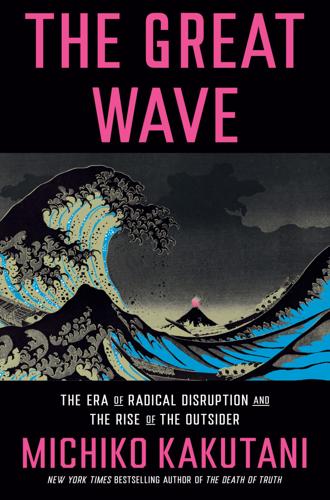
The Great Wave: The Era of Radical Disruption and the Rise of the Outsider
by
Michiko Kakutani
Published 20 Feb 2024
For years, critics of neoliberalism had been pointing to its toxic fallout: its fueling of social and economic inequalities (which even the International Monetary Fund had come to recognize); its amplification of the role of money and corporate influence in politics; and its antipathy toward regulations designed to protect workers, families, and the environment. The doctrine had enriched wealthy elites and wealthy Western countries, while much of the rest of the world felt increasingly left behind, creating what Pankaj Mishra, the author of Age of Anger, calls “a precariat with no clear long-term prospects” that was “dangerously vulnerable to demagogues promising them the moon.” Two twenty-first-century events—the crash of 2008 and the COVID pandemic—reminded people that neoliberalism’s promises of unlimited, cost-free growth were bogus. And as the Financial Times columnist Edward Luce astutely noted in his 2017 book, The Retreat of Western Liberalism, “Liberal democracy’s strongest glue is economic growth.
…
GO TO NOTE REFERENCE IN TEXT For years, critics of neoliberalism: Jonathan D. Ostry, Prakash Loungani, and Davide Furceri, “Neoliberalism: Oversold?,” Finance and Development 53, no. 2 (June 2016), imf.org/external/pubs/ft/fandd/2016/06/ostry.htm. GO TO NOTE REFERENCE IN TEXT “a precariat with no clear long-term prospects”: Francis Wade, “ ‘The Liberal Order Is the Incubator for Authoritarianism’: A Conversation with Pankaj Mishra,” Los Angeles Review of Books, Nov. 15, 2018, lareviewofbooks.org/article/the-liberal-order-is-the-incubator-for-authoritarianism-a-conversation-with-pankaj-mishra/.
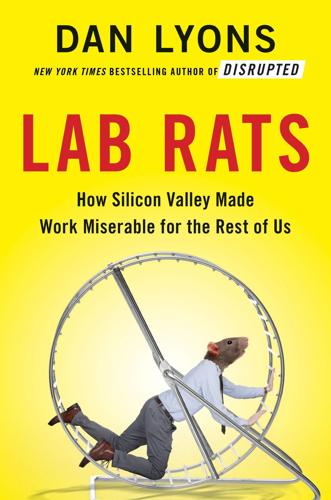
Lab Rats: How Silicon Valley Made Work Miserable for the Rest of Us
by
Dan Lyons
Published 22 Oct 2018
Some saw the election of Trump as a warning that the victims of the Information Age were lashing out. “People around the world have become aware they are part of the bottom class, and they’re angry. Trump could be just the beginning,” British economist Guy Standing declared. Standing uses the term precariat to describe a new class of people who lack secure employment or predictable income, and suffer psychologically as a result. While economists and government ministers wring their hands, some billionaires and tech leaders have taken matters into their own. But instead of trying to fix the situation, they are making plans to escape whatever calamity might arise from the forces Trump has unleashed—civil war, a proletariat uprising, a collapse of the power grid, an economic meltdown.
…
Hanauer started writing books and essays, giving speeches, and lobbying politicians to enact policies—like raising the minimum wage—that could reverse the widening gap between haves and have-nots. In a blistering 2014 essay, titled “The Pitchforks Are Coming for Us Plutocrats,” Hanauer warned that if we continued on the same path, eventually millions of people in the precariat would launch a revolution. “You show me a highly unequal society, and I will show you a police state. Or an uprising. There are no counterexamples,” he wrote. What’s more, Hanauer believes the people rising up would be completely justified, for they have been the victims of one of the greatest swindles of all time.

The Age of Stagnation: Why Perpetual Growth Is Unattainable and the Global Economy Is in Peril
by
Satyajit Das
Published 9 Feb 2016
It is desperate piecework labor, the end of middle-class dreams. Postwar society was built on good, well-paid jobs: “The most important model that rolled off the Detroit assembly lines in the twentieth century was the middle class for blue-collar workers.”11 Now the squeezed middle classes are members of the “precariat” or the “precarious proletariat.” The terms originally described Japanese workers without job security, who now make up over 30 percent of the country's workforce as companies cut labor costs. The phenomenon of short-term contract employment is global. Since 2009, the UK has enjoyed strong increases in employment, but the type and quality of jobs have changed.
…
Households” found that only one-third of Americans aged 18–59 years had sufficient savings to cover three months of expenses; 52 percent of Americans could not produce US$400 on short notice without borrowing money or selling something; 45 percent saved none of their income. Around 46 million now qualify for food stamps, up from 17 million in 2000. It is English philosopher Thomas Hobbes's war of all against all, in which life for many workers becomes poorer and more precarious. In the new “eke-onomy,” the precariat survive rather than prosper, in an essentially subsistence existence. Their life is like a modern version of the dance marathons popular during the Great Depression, when impoverished young couples competed for prize money, dancing sometimes for weeks until they dropped exhausted. After rising steadily, home ownership levels, another contributor to improved living standards, stagnated or began to decline.
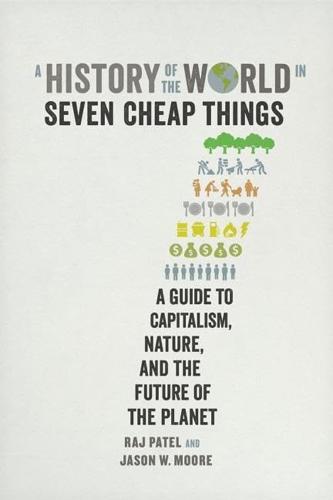
A History of the World in Seven Cheap Things: A Guide to Capitalism, Nature, and the Future of the Planet
by
Raj Patel
and
Jason W. Moore
Published 16 Oct 2017
So it is that gendered ideas lead to women being sought—and cheapened—for their nimble fingers, caring attitudes, and supportive miens (for example) by those looking to hire cheap workers for maquilas, call centers, and nursing care industries, those workers having been trained through a lifetime of cheap care and expected to have certain skills because they are women.81 There are gendered expectations not only of skills transferred from care work but also of flexibility. It might appear that the precariat—workers who lack the job security, pensions, and organizing bodies normally associated with mid-twentieth-century industrial workers in the Global North—is experiencing something new.82 But mobility, flexibility, and permanent availability have long been hallmarks of care work. Precarious employment has its roots in advances in capitalist workplace logistics as well as in previous regimes of unpaid care.
…
“Distribution of HLA Alleles in Portugal and Cabo Verde: Relationships with the Slave Trade Route.” Annals of Human Genetics 66, no. 4: 285–96. Srnicek, Nick. 2017. Platform Capitalism. Malden, MA: Polity. Srnicek, Nick, and Alex Williams. 2015. Inventing the Future: Postcapitalism and a World without Work. Brooklyn: Verso. Standing, Guy. 2016. The Precariat: The New Dangerous Class. Rev. ed. New York: Bloomsbury Academic. Stavig, Ward. 2000. “Ambiguous Visions: Nature, Law, and Culture in Indigenous-Spanish Land Relations in Colonial Peru.” Hispanic American Historical Review 80, no. 1: 77–111. Stedman, John Gabriel. 1796. Narrative of a Five Years’ Expedition against the Revolted Negroes of Surinam in Guyana on the Wild Coast of South America; from the Year 1772 to 1777.

The Meritocracy Trap: How America's Foundational Myth Feeds Inequality, Dismantles the Middle Class, and Devours the Elite
by
Daniel Markovits
Published 14 Sep 2019
Dickens’s own father: Jerry White, Mansions of Misery: A Biography of the Marshalsea Debtors’ Prison (London: Penguin Random House, 2016), 179–219. wave of foreclosures and bankruptcies: Warren and Warren Tyagi, The Two-Income Trap, 20. in all federal courts that year: Lemar, Debt Weight, 3. the precariat: Guy Standing, The Precariat: The New Dangerous Class (London: Bloomsbury, 2011). social and economic caste: A related argument appears in Bowles and Park, “Emulation, Inequality, and Work Hours.” in every major city today: “Super luxury” cars such as the Mercedes-Benz S-Class and the BMW 7 Series can range anywhere from the low $90,000s range to $250,000.
…
Even with the threat of prison removed, debt remains an affliction for the middle class. And like imprisonment, foreclosures and bankruptcies cast their shadows across whole lives, and down the generations, breaking marriages and disrupting childhoods. Indeed, the effect is so powerful that the middle class has been renamed, by some, the precariat. On the other hand, luxury goods—goods that appeal to those at the top, in the glare of economic inequality’s light—increasingly dominate the spending and mold the self-image of the rich. The norms and habits that framed Fortune’s midcentury sensibilities have been ground away under the pressure of meritocratic inequality’s inner logic, and the meritocratic elite now prizes the extravagances that the magazine then derided.
…
See geographical class concentration political correctness complaints, xvii, 60 politics, 211–14 See also elite political power populism, xvi–xvii, 64–65, 188, 211, 271, 272, 278 postgraduate schooling, 139–44, 183, 184–85, 252 Pound, Roscoe, 261 poverty current rates of, 21, 102–4, 293fig early twentieth century, 77 and education, 136 and industry, 3 and leisure, 103 and low-end inequality, 98 midcentury, 77–78, 99–100, 101–2, 103, 106, 107, 293fig War on Poverty, 101–2, 107, 109, 273 precariat, 219 prejudice, denunciation of. See identity politics prenatal stress, 119 preschools, 7, 33, 122–23 primogeniture, 261 Princeton University, 112, 277 prisoner’s dilemma, 190 private schools, 114, 125–26, 133 privilege, responsibilities of. See elite service promise progressive critiques.
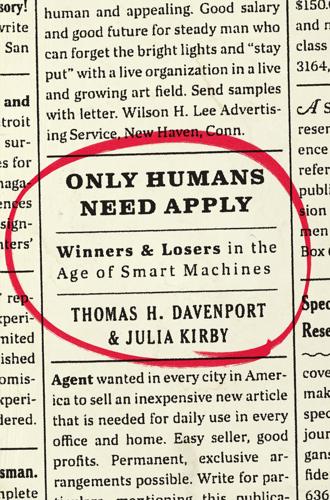
Only Humans Need Apply: Winners and Losers in the Age of Smart Machines
by
Thomas H. Davenport
and
Julia Kirby
Published 23 May 2016
The question, of course, is whether the provision of income with no strings attached will create too much disincentive to work for recipients’ own good and the good of society. Proponents of unconditional income believe the impulse to create value is innate in humans, and if anything is channeled into less socially valuable activities then the point must be to gain payment for one’s work. University of London professor Guy Standing, who coined the term “precariat” to describe a working class increasingly stressed by precarious work arrangements, says that, even more important than a redistribution of wealth, guarantees of basic income would constitute a “redistribution of security.” Opponents of the idea are much more inclined to think humans are naturally lazy, and that if given the opportunity to do nothing for their income, will do exactly that.
…
See health care and medicine Memorial Sloan Kettering Cancer Center, 46, 209, 215, 217 Mendez, Ray, 170 Mendonca, George, 170 Mercedes, 213 Microsoft “Bob,” 196 Mindell, David, 67 mining automation, 201–3 Mitler, Lesley, 150 Mohr, Catherine, 40 Momentum Machines, 205 Moody, Paul, 132–33 Morris, Errol, 170 Mukhamedshina, Irina, 162 Munich Re and Swiss Re, 83 Murnane, Richard, 27, 63 music, 24, 126 Musk, Elon, 225, 246, 248 MYCIN expert system, 46 Myers, Justin, 98, 222 Nadel, Edward, 132, 146 Narain, Niven, 60 Narrative Science, 22 National Trust for Historic Preservation, 240 Nature of Expertise, The (Glaser and Chi, eds.), 163 Nayar, Vineet, 204 NBA, 116–17 New Division of Labor, The (Levy and Murnane), 27 Newton, Isaac, 165 New York Federal Reserve Bank, 90 New York Stock Exchange, 11–12, 18 Nicita, Camille, 62–63 Nokia, 239 Nordfors, David, 248 Northeastern University, 232 NYU Langone Medical Center, 138 Obama, Barack, 95 Office, The (TV show), 109–10 office workers, 3, 157, 187, 217, 239 Off the Grid News, 110, 111 Oracle, 133 Orellana, Marco, 202 Oremus, Will, 127 Organisation for Economic Co-operation and Development (OECD), 27 Osindero, Simon, 126 Oxford study, U.S. jobs at risk, 2, 30 Painting Fool, 125 Palmer, Shelly, 234 Parikh, Jay, 206–7, 211 Partners HealthCare, 66 Patil, D. J., 179 Persado, 121 personal shoppers, 111 Pink, Daniel, 169 Plett, Heather, 110–11 Popa, Dan, 123 Port, David, 87 precariat, 241 Predictably Irrational (Ariely), 113 Press, Gil, 191 productivity automation and gains, 1, 3, 167, 227 BYOD and, 13 knowledge workers and, 100 man-machine partnerships and, 234 price reductions and, 14 “silent firing” and, 24 Progressive insurance, 197 “Prose of the Machines, The” (Oremus), 127 ProSystem, 22 “quantified self” movement, 68 Race Against the Machine, 31 RAGE Frameworks, 45, 216–17 Reimsbach-Kounatze, Christian, 236 Rethink Robotics, 50, 182, 193 Rhodin, Mike, 55 Riedl, Mark, 126 Riordan, Staci Jennifer, 160 Rise of the Robots (Ford), 205 Risi, Karin, 210, 220, 223 Ritchie, Graeme, 125 Robinson, Sir Ken, 115 robotic process automation, 48–49, 187, 221, 222–23 robotics, 24, 35, 40, 49–52, 54, 157 anthropomorphizing and, 49 collaborative robots, 49–51, 182, 193 DARPA Robotics Challenge, 51, 56 education for, 232 patience and, 123–24 programming language, 49, 50 self-awareness and, 56 transparency and ease of use, 193 warnings and predictions about, 225–26 Ronanki, Rajeev, 187–89, 220 Roosevelt, Franklin D., 238, 248 Rudin, Cynthia, 193 Rumsfeld, Donald, 214 Russell, Stuart, 227–28 Sachs, Jeffrey, 228 Sadler-Smith, Eugene, 117–18 Safecast, 247 Saffo, Paul, 24 Salovey, Peter, 113, 116 Samasource, 168 Sand, Benjamin, 6 SAP, 133 SAS, 104, 132, 140, 141, 194 Saxena, Manoj, 45 Schneider National, 132, 147–48, 189–90, 196 Short Haul Optimizer, 147, 190, 191 Scientific Music Generator (SMUG), 126 “School of One,” 141 Science: The Endless Frontier (Bush), 248 Scott, David, 67 Scott, Rebecca, 162 Second Machine Age, The (Brynjolfsson and McAfee), 6, 74 self-driving vehicles, 4, 51–52, 213–14, 244, 246 Sharp, Phillip, 209 Shaughnessy, Dan, 117 Shiller, Robert, 7 Simon, Herbert, 163 Singapore, 250 Singularity Is Near, The (Kurzweil), 36 Skype Translator, 56 smartphones, 53, 235, 239 “social license to operate,” 233 Spanish National Research Council, 54–55 Spielberg, Steven, 125 spreadsheets, 69–70 Standing, Guy, 241 Starner, Thad, 65 Stats Inc., 97 Steinberg, Dan, 124–25 Stepping Aside, 77 artisanal jobs, 119–21 augmentation to free people up, 121–24 characteristics of a candidate, 129 for financial planners and brokers, 87 how to build skills for, 129–30 incursion of machines into human attributes, 124–27 in insurance underwriting, 81 jobs with nonprogrammable skills, 109–12 learning “noncognitive” skills, 115–18 multiple intelligences and, 112–14 for teachers, 85 value of human involvement, 127–28 what it means, 108 where a candidate is likely found, 130 Stepping Forward, 77, 176–200 adding new sources of data, 196–97 broadening application of tools, 194–95 broadening the base of methods, 194 characteristics of a candidate, 199–200 consultants, 187–89 creating usability and transparency by business users, 192–94 data scientists, 179–80 embedding automation functions, 196 entrepreneurs, 185–87 examples, successful people, 179–89 for financial planners and brokers, 88 focusing on behavioral finance and economics, 198–99 how to build skills for, 200 in insurance underwriting, 83–84 internal automation leaders, 189–91 jobs, technical and nontechnical, 177–91 marketers, 183–85 number of jobs, 191–92 product managers, 182–83 programmers and IT professionals, 178 reporting and showing results, 195–96 researchers, 181–82 for teachers, 85–86 what it is, 176 where a candidate is likely found, 200 working on the math, 197–98 Stepping In, 77, 131–52 automation technologies and, 134–35 bright future for, 149–51 characteristics of a candidate, 151–52 common attributes of, 145–49 examples, successful people, 132, 134–35, 137–48 for financial planners and brokers, 97 having an aptitude for, 142–45 how to build skills for, 152 in insurance underwriting, 81–82 predecessors of, 132–34 purple people, 131, 133–34, 135, 147, 151 for teachers, 85 value provided by, 138–42 what it is, 131–32 what candidates are and aren’t, 135–38 where a candidate is likely found, 152 working with vendors and, 140–41 Stepping Narrowly, 77, 153–75 achieving mastery and, 162–66 augmentation and, 166–69, 173–74 building on your narrowness, 161–62 characteristics of a candidate, 174 education for, 232 examples, successful people, 153–54, 159–60, 162, 163, 164, 170, 172–73 for financial planners and brokers, 87–88 finding a specialty, 158–61 “hedgehog” thinker and, 171 how to build skills for, 175 individual psychology and, 169–71 in insurance underwriting, 82 “long tail” and, 157, 162 machine-unfriendly economics and, 155–58, 162 in medicine, 157 niche business, 153–54, 171–73 for teachers, 85 where a candidate is likely found, 175 Stepping Up, 76–77, 89–107, 155 automation decisions and, 93–95 big-picture perspective, 98–100 building and ecosystem, 100–102 careful work design for automated business functions, 103–4 characteristics of a candidate, 106 creating a balance between computer-based and human skills, 105–6 examples, successful people, 89–91, 95–98 for financial planners and brokers, 86–87 in financial sector, 92–93 how to build skills for, 106–7 in insurance underwriting, 80 in marketing, 93 staying close, but moving on and, 102–3 for teachers, 84–85 what it is, 91–93 where a candidate is likely found, 107 Stewart, Martha, 111 Summers, Larry, 95, 227 Suncor, 205 Surrogates (film), 125 Sutton, Bob, 170–71 Sweetwood, Adele, 104 taste, augmentation and, 122 TaxCut, 22 tax preparation, 22, 67–68 Tegmark, Max, 243–44, 247 Telefónica’s O2, 49 Teradata, 43 Terminator films, 65 Tesla, 213, 246 Thiel, Peter, 243 Thinking, Fast and Slow (Kahneman), 236 Thinking for a Living (Davenport), 5 This, Herve, 164 Thompson, Derek, 242 Tibco, 194 Time magazine, AI cover and article, 36 TopCoder, 168 Torrence, Travis, 132, 147–48, 189, 190 Tourville, Lisa, 83–84, 137 TurboTax, 22, 67–68 “12 Risks That Threaten Human Civilization” (Armstrong), 249 2001: A Space Odyssey (film), 76, 245 Udacity, 178 UltraTax, 22 UnitedHealthCare, 83 University of California, Berkeley, 51 University of Michigan’s Institute for Social Research, 115 “Unusual and Highly Specialized Practice Areas” (Bohrer), 159 UPS automated driver routing algorithm (ORION), 196 USAA, 87–88 U.S.

A World Without Work: Technology, Automation, and How We Should Respond
by
Daniel Susskind
Published 14 Jan 2020
The second impact of people crowding into the work that remains is that there will be downward pressure on the quality of some of the jobs as well. With more workers chasing after those jobs, there is less need for employers to attract them with good working conditions. Karl Marx spoke of workers as the “proletariat,” adopting the ancient Roman term for members of the lowest social class; today, though, the term precariat is gaining ground instead—a word that captures the fact that more and more work is not just poorly paid, but also unstable and stressful.38 It is sometimes said, in a positive spirit, that new technologies make it easier for people to work flexibly, to start up businesses, become self-employed, and to have a more varied career than their parents or grandparents.
…
See Program for the International Assessment of Adult Competencies Pichai, Sundar Pigou, Arthur Piketty, Thomas pink-collar work Plato pluribus poetry poker polarization, twenty-first century and political power, Big Tech and Political Power Oversight Authority politics, defined Poor Laws Popper, Karl Porter, Michael power countervailing labor inequality and political processing pragmatism ALM hypothesis and beginnings of disappointment and priority shift and precariat pricing, supply and pride Principles of Political Economy and Taxation (Ricardo) privatization of political lives processing power producers, changing-pie effect and productivity Program for the International Assessment of Adult Competencies (PIAAC) proletariat Prometheus property rights Protestant Reformation pseudo-artificial intelligence Pullman, Philip purism, pragmatism vs.
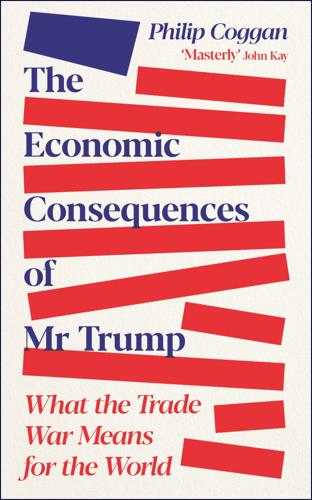
The Economic Consequences of Mr Trump: What the Trade War Means for the World
by
Philip Coggan
Published 1 Jul 2025
By pushing through tariffs, and disrupting the flow of trade, Mr Trump is damaging the biggest section of the economy (through the hit to both business and consumer confidence) to (attempt to) benefit a much smaller element. In the view of some critics, however, service-sector jobs are not as good as those in manufacturing. They point to areas such as warehouses or delivery driving, where workers are on low wages and zero-hour contracts, in what is dubbed the ‘precariat’. But while there was some evidence for the growth of low-skilled jobs in the first decade of the twenty-first century, when the China shock was greatest, a recent paper found this effect has disappeared. Between 2016 and 2022, there were declines in low-skilled and middle-skilled US jobs. At the same time there was rapid growth in high-paying jobs.

The Blockchain Alternative: Rethinking Macroeconomic Policy and Economic Theory
by
Kariappa Bheemaiah
Published 26 Feb 2017
Another excellent resource is Diane Coyle’s, GDP: A Brief but Affectionate History, which shows why this statistic was invented, how it has changed, what are its pros and cons and why it is inappropriate for a 21st century economy driven by innovation, services, and intangible goods. 22The concept of technological underemployment and unemployment has been explored in detail by Guy Standing in his very excellent book, The Precariat: The New Dangerous Class, (2011). 23Overt Money finance is the act of creating new money and giving it to people via spending or tax cuts. 24Tax expenditures: when the government spends revenue via the tax system by giving a deduction on taxable income. These expenditures normally benefit higher earners
…
The book is a general read but offers readers a look into how key persons are thinking about the Blockchain, while offering a dictionary of whom to follow in this space. Chapter 3 Following is a list of literature resources for learning about Universal Basic Income (UBI): “ The Simple Analytics of Helicopter Money: Why It Works – Always” (2014), Willem H. Buiter The Precariat: The New Dangerous Class (2011), Guy Standing Inventing the Future: Postcapitalism and a World Without Work (2015), Nick Srnicek and Alex Williams Raising the Floor: How a Universal Basic Income Can Renew Our Economy and Rebuild the American Dream (2016), Andy Stern Index A Aadhaar program Agent Based Computational Economics (ABCE) models complexity economists developments El Farol problem and minority games Kim-Markowitz Portfolio Insurers Model Santa Fe artificial stock market model Agent based modelling (ABM) aggregate behavioural trends axiomatisation, linearization and generalization black-boxing bottom-up approach challenge computational modelling paradigm conceptualizing, individual agents EBM enacting agent interaction environmental factors environment creation individual agent parameters and modelling decisions simulation designing specifying agent behaviour Alaska Anti-Money Laundering (AML) ARPANet Artificial Neural Networks (ANN) Atlantic model Automatic Speech Recognition (ASR) Autor-Levy-Murnane (ALM) B Bandits’ Club BankID system Basic Income Earth Network (BIEN) Bitnation Blockchain ARPANet break down points decentralized communication emails fiat currency functions Jiggery Pokery accounts malware protocols Satoshi skeleton keys smart contract TCP/IP protocol technological and financial innovation trade finance Blockchain-based regulatory framework (BRF) BlockVerify C Capitalism ALM hypotheses and SBTC Blockchain and CoCo canonical model cashlessenvironment See(Multiple currencies) categories classification definition of de-skilling process economic hypothesis education and training levels EMN fiat currency CBDC commercial banks debt-based money digital cash digital monetary framework fractional banking system framework ideas and methods non-bank private sector sovereign digital currency transition fiscal policy cashless environment central bank concept of control spending definition of exogenous and endogenous function fractional banking system Kelton, Stephanie near-zero interest rates policy instrument QE and QQE tendency ultra-low inflation helicopter drops business insider ceteris paribus Chatbots Chicago Plan comparative charts fractional banking keywords technology UBI higher-skilled workers ICT technology industry categories Jiggery Pokery accounts advantages bias information Blockchain CFTC digital environment Enron scandal limitations private/self-regulation public function regulatory framework tech-led firms lending and payments CAMELS evaluation consumers and SMEs cryptographic laws fundamental limitations governments ILP KYB process lending sector mobile banking payments industry regulatory pressures rehypothecation ripple protocol sectors share leveraging effect technology marketing money cashless system crime and taxation economy IRS money Seigniorage tax evasion markets and regulation market structure multiple currency mechanisms occupational categories ONET database policies economic landscape financialization monetary and fiscal policy money creation methods The Chicago Plan transformation probabilities regulation routine and non-routine routinization hypothesis Sarbanes-Oxley Act SBTC scalability issue skill-biased employment skills and technological advancement skills downgrading process trades See(Trade finance) UBI Alaska deployment Mincome, Canada Namibia Cashless system Cellular automata (CA) Central bank digital currency (CBDC) Centre for Economic Policy Research (CEPR) Chicago Plan Clearing House Interbank Payments System (CHIPS) Collateralised Debt Obligations (CDOs) Collateralized Loan Obligations (CLOs) Complexity economics agent challenges consequential decisions deterministic and axiomatized models dynamics education emergence exogenous and endogenous changes feedback loops information affects agents macroeconoic movements network science non-linearity path dependence power laws self-adapting individual agents technology andinvention See(Technology and invention) Walrasian approach Computing Congressional Research Service (CRS) Constant absolute risk aversion (CARA) Contingent convertible (CoCo) Credit Default Swaps (CDSs) CredyCo Cryptid Cryptographic law Currency mechanisms Current Account Switching System (CASS) D Data analysis techniques Debt and money broad and base money China’s productivity credit economic pressures export-led growth fractional banking See also((Fractional Reserve banking) GDP growth households junk bonds long-lasting effects private and public sectors problems pubilc and private level reaganomics real estate industry ripple effects security and ownership societal level UK DigID Digital trade documents (DOCS) Dodd-Frank Act Dynamic Stochastic General Equilibrium (DSGE) model E EBM SeeEquation based modelling (EBM) Economic entropy vs. economic equilibrium assemblages and adaptations complexity economics complexity theory DSGE based models EMH human uncertainty principle’ LHC machine-like system operating neuroscience findings reflexivity RET risk assessment scientific method technology and economy Economic flexibility Efficient markets hypothesis (EMH) eID system Electronic Discrete Variable Automatic Computer (EDVAC) Elliptical curve cryptography (ECC) EMH SeeEfficient Market Hypothesis (EMH) Equation based modelling (EBM) Equilibrium business-cycle models Equilibrium economic models contract theory contact incompleteness efficiency wages explicit contracts implicit contracts intellectual framework labor market flexibility menu cost risk sharing DSGE models Federal Reserve system implicit contracts macroeconomic models of business cycle NK models non-optimizing households principles RBC models RET ‘rigidity’ of wage and price change SIGE steady state equilibrium, economy structure Taylor rule FRB/US model Keynesian macroeconomic theory RBC models Romer’s analysis tests statistical models Estonian government European Migration Network (EMN) Exogenous and endogenous function Explicit contracts F Feedback loop Fiat currency CBDC commercial banks debt-based money digital cash digital monetary framework framework ideas and methods non-bank private sector sovereign digital currency transition Financialization de facto definition of eastern economic association enemy of my enemy is my friend FT slogans Palley, Thomas I.
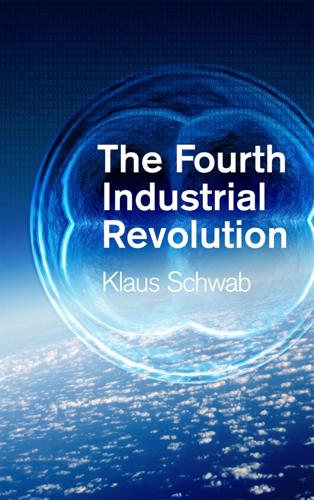
The Fourth Industrial Revolution
by
Klaus Schwab
Published 11 Jan 2016
Is this the beginning of a new and flexible work revolution that will empower any individual who has an internet connection and that will eliminate the shortage of skills? Or will it trigger the onset of an inexorable race to the bottom in a world of unregulated virtual sweatshops? If the result is the latter – a world of the precariat, a social class of workers who move from task to task to make ends meet while suffering a loss of labour rights, bargaining rights and job security – would this create a potent source of social unrest and political instability? Finally, could the development of the human cloud merely accelerate the automation of human jobs?
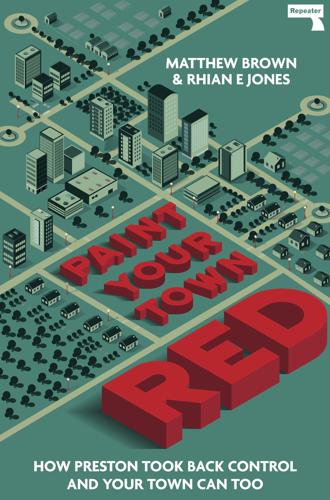
Paint Your Town Red
by
Matthew Brown
Published 14 Jun 2021
Meanwhile, the often absurd disparity between wage levels and house prices means that many, especially younger people, are caught in the “rent trap” — unable to accumulate enough in savings or get stable enough work to access a mortgage and get on the housing ladder. Housing size has been progressively reduced while many older properties have been divided into Houses of Multiple Occupation (HMOs). “Generation Rent”, the “precariat”, whatever optic we chose to view this particular cohort through, the underlying problems feed into each other: low pay, insecure jobs, expensive and insecure accommodation, and large debts. Case Study: Newham While issues like the housing market might seem to be national or even international problems on which local people can have little effect, this is one area where council actions can make a difference.

Work Won't Love You Back: How Devotion to Our Jobs Keeps Us Exploited, Exhausted, and Alone
by
Sarah Jaffe
Published 26 Jan 2021
The internship advanced alongside other forms of contingent work, and alongside the idea that trading in security for enjoyable work was a deal worth making. Hope labor, everywhere you look. Interns are emblematic of what economist and author Guy Standing called “the precariat,” a class of workers that he argued are identifiable by their lack of security. The precariat, he wrote, does not map “neatly onto high-status professional or middle-status craft occupations.” Rather, it is a term for a set of working conditions that are becoming more and more common as the number of workers who have long-term security at work declines.
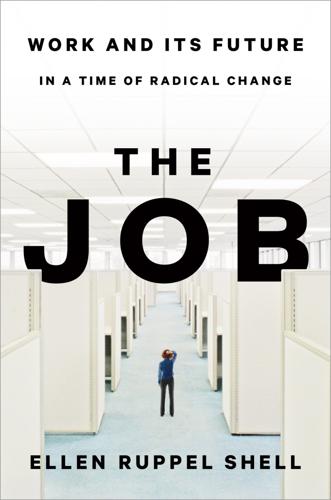
The Job: The Future of Work in the Modern Era
by
Ellen Ruppel Shell
Published 22 Oct 2018
British economist Guy Standing has written extensively on what he describes as a breakdown in the twentieth-century income distribution system, whereby wealth was reflected in one’s wages. By contrast today, wealth is channeled away from workers to “rentiers”–that is, owners of financial, physical, or intellectual property, like software. He coined the term precariat to describe a new class of workers left to stew in a toxic mix of what he calls the “four A’s”—anxiety, anomie, alienation, and anger. In setting the terms of employment, employers fully expect this “precariat” to willingly push aside the demands of their personal lives to accommodate unpredictable schedules and uncertain career prospects. Not a few employers make these demands under the cheerful guise of offering workplace “freedom” and “flexibility”—as though workers should be grateful to not know from one week to the next what their schedules, or paychecks, will be.

Automation and the Future of Work
by
Aaron Benanav
Published 3 Nov 2020
See also Aaron Benanav, “Demography and Dispossession: Explaining the Growth of the Global Informal Workforce, 1950–2000,” Social Science History, vol. 43, no. 4, 2019. 25 Jan Breman and Marcel van der Linden, “Informalizing the Economy: The Return of the Social Question at a Global Level,” Development and Change, vol. 45, no. 5, 2014. 26 See Pun Ngai, Migrant Labor in China: Post-socialist Transformations, Polity, 2016. 27 In sub-Saharan Africa, only 3 percent of workers are covered by unemployment benefits—as compared to 76 percent in high-income countries: ILO, World Employment Social Outlook: The Changing Nature of Jobs, 2015, p. 80. 28 See, respectively, the ILO’s Key Indicators, and Women and Men in the Informal Economy: A Statistical Picture, 3rd ed., 2018, p. 23. 29 ILO, World Employment Social Outlook, p. 31. 30 See Ronaldo Munck, “The Precariat: A View from the South,” Third World Quarterly, vol. 34, no. 5, 2013. 31 Some automation theorists do identify underemployment as a common feature of contemporary economies, but they have trouble explaining it, focused as they are on the apparent dynamism of technological change. See, for example, Andy Stern, Raising the Floor: How a Universal Basic Income Can Renew Our Economy and Rebuild the American Dream, PublicAffairs, 2016, p. 185; and Yang, War on Normal People, pp. 79–80. 32 That was more or less the plot of In Time (2011), written and directed by Andrew Niccol.

Competition Overdose: How Free Market Mythology Transformed Us From Citizen Kings to Market Servants
by
Maurice E. Stucke
and
Ariel Ezrachi
Published 14 May 2020
As for Generation Z (defined as those born in the mid-1990s to the early or mid-2000s) 17 percent of young adults ages eighteen to twenty-four are out of work in mid to large cities in the United States, totaling 2.3 million young people.14 They and future generations will likely join the swelling ranks of “precariats”—those clinging precariously to their current economic rung, while bearing ever greater risks in the digital economy.15 Should they try to organize to secure fairer wages, as many Uber and Lyft drivers attempted to do in Seattle in 2015, they can expect the government to intervene—and not on their behalf.
…
See also social, moral, and ethical values Muilenburg, Dennis, 266 Mulvaney, Mick, 159, 269 National Collegiate Athletic Association (NCAA), 134–38, 142 National Hockey League and helmets, 4–5 Nazi party and reprivatization, 189–90 negative externalities, 124 neighborhood community organizations, 243–44 Nestlé, 55, 56 Netherlands, The, 148 network effects and online dating, 111–12 neurological research, 72–73 New England Small College Athletic Conference (NESCAC), 138 New Mexico complaint against Tiny Lab, Google, and other online companies, 194–95, 198, 199, 202–3, 223 Newsweek magazine, 245 New York City private day schools, 32–33 New York Times, 106, 107, 177, 196, 223 NHS (UK National Health Service), 183–87 noble competition overview, 228, 229, 256–60 big business role in promoting, 272–78 Brady’s diet scenario, 5 consumers’ role in promoting, 279–91 overcoming the paradox, 258–60 See also competition ideal; government’s role in promoting healthy competition Notes from the Underground (Dostoyevsky), 71 Obama, Barack, 10, 130 Obama administration, 174, 268 OkCupid.com, 108, 110 olive oil fraud, 52 “On the Origin and Nature of Values” (Ellis), 256–58 Oxford University, Tanner Lecture, 256–60 Page, Lawrence, 282–83 partition pricing, 78–79 pen-buying experience, 104–5 perceptions based on names, 242 Pew Research, 113, 114 pharmaceutical prices, 60–61 Platonic ideal of morality, 257 POF.com dating service, 109 police as forensic examiners, 179–80, 180–81 policy makers alignment with big business for reelection, 230–31, 232 ways to bolster the FTC, 269 and competition ideology, 130–32 concerns about fairness of anticompetitive restraints, 144 contributions from private prisons, 173, 174–75 and crony capitalism, 160, 163, 230, 285 designers of competitive process, 251–52 on drip pricing, 150 failure to act on toxic competition in collegiate sports, 143–45 on financial crisis of 2008, 158 and Gamemakers, 223 privatization designed to gain support from the wealthy, 190 promoting competition as a panacea, 229 protecting and promoting a competition ideal, 261–69 See also government’s role in promoting healthy competition; regulations pollution as negative externality, 124 poor people, 160, 230–31, 232 Porter, Michael, 244 positive-sum competition, 242, 244, 251, 255–56, 257, 289–90 precariats, 232 prep schools, 31–34 price, single-minded focus on, 56. See also quality price schemes, 78, 79, 82. See also drip pricing Princeton University, 25, 26–27, 122 Prisoner’s Dilemma game, 86 prison system, 164–65, 166, 168–69. See also privatization of the prison system private school matriculation, 31–34, 296–98 privatization, 162–91 overview, xiii, 162–63, 190–91 and cream skimming, 169–70, 175, 183–87 cutting state expenditures with, 182–83 of Forensic Science Service in UK, 177–83 origin and purpose of, 189–90 private sector’s incentives vs. public sector’s goals, 166–69 providers as free riders, 185–86 of water supply in UK, 187–89 privatization of the prison system overview, 174 cream skimming, 169–70, 175, 183–87 incentive to keep prisoners for longer, 167–68, 173 inmates’ costs higher, services lower, 174, 175–76 invoking competition ideology, 163–64, 176–77 lobbyists, 173–76 provider reports on industry challenges, 166–67 sacrificing quality, 164, 166, 170–73 violence in prisons, 171, 172–73 product reviews on Amazon, 107 products purchased via Alexa, 106 ProPublica investigation of Amazon search results, 103–4 public good, 124–25, 241, 291 Public Goods game, 241–42 public policy study of privatization of prisons, 163–64 public school education, 6–9, 282 public sector goals vs. private sector incentives, 166–69 publishers of online apps, 206, 209–10, 214, 215 purpose-driven companies, 276–78 Putnam, Robert, 250–51 quality airlines’ cost reductions vs., 56–58, 61 belief that competition delivers quality at a low price, 47–48, 49 companies’ degradation of, 49, 58–59, 64–65 consumers’ belief that high price = quality, 59–60 consumers’ failure to notice quality degradation, 49, 62–65 diminishing profitability vs., 50–51, 58 of food, 51–54, 287–89 food apartheid in Europe, 51 hidden costs of good quality at a low price, 70 and privatization of prisons, 164, 166, 170–73 and privatization of UK forensic science, 178 of treatment of laborers, 54–56 quality of life, 247–49, 252 race to the bottom, 3–40 overview, 3–4, 38–40, 70, 123 competitors are harmed, 4–6, 9–12, 25–27, 264 cooperation, trust, and fairness vs., 242–44 government’s failure to regulate leads to financial crisis of 2008, 261–64 intended beneficiaries are harmed, 7–9, 9–12, 27–34, 264 See also college rankings; toxic competition race to the top, 3, 5, 6–7, 39, 40, 255 Ramirez, Edith, 151, 152 Randox Testing Services, United Kingdom, 181 rationality of competition, 34–38 Reagan, Ronald, 234 reductive competition ideology, 126–30, 146–47, 155–57, 176 regulations as anathema to exploiting human weakness, 93 Bank Holding Company Act, 126–30 California Consumer Privacy Act, 286–87 Children’s Online Privacy Protection Act, 194 competition as reason for deregulation of banks, 126–30 dismantling, since 1970s, 229 First Step Act, 169 Glass-Steagall Act, 127–28 as paternalistic vs. personal pride, 156 and policy makers, 143–45 politicians combating price drip legislation, 152–53 Truth in Hotel Advertising Act, 153–54 See also policy makers religion, 240, 250–51, 257–58 reprivatization, 189–90 resort fees as drip pricing, 154, 155–57 rewarded ads, 198 rip currents metaphor, 69–70 Roosevelt, Eleanor, 271 Roosevelt, Franklin D., 271 Russia and US social media, 216 Ryanair, 57–58 safety net, 269–72 salaries of college football coaches 135–137 Division I versus NESCAC 139 sale pricing, 82 Sandberg, Sheryl, 204–5 Sandel, Michael, 246 Sanders, Bernie, 175 Santos, Laurie, 34 Schiff, Adam, 159 Schmidt, Eric, 220 search costs, 109 self-interest, 243–44 self-regulation in food industry, United Kingdom, 273–74 seller response to choice overload, 101–8 shock treatment experiment, 279–82, 285 Singer, William “Rick,” 30–31 slave labor, 54–56 Smith, Adam, 3–4, 235, 236–37 Smith, Greg, 274–76 social, moral, and ethical values competition ideology does not excuse lack of, 271 competition undermining, xiii–xiv, 235–36, 237, 245–46, 274 complementing the competitive process, 252 enhancing the marketplace, 237 fairness, 144, 242–44, 252 farms with a social purpose, 290–91 as means to increase profits, 276–78 morality continuum, 257–58 morality through self-interest, 257 shaping behavior of others, 284–87 Smith on need for, 236–37 zero-sum competition vs., 249–51 social ideal, noble competition as, 259–60 socialism for the rich, 231 social outcome of markets, 124, 125 social values.
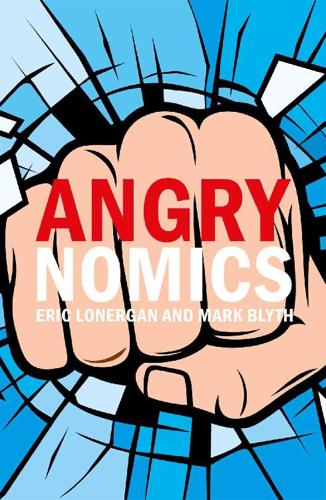
Angrynomics
by
Eric Lonergan
and
Mark Blyth
Published 15 Jun 2020
Globalization, technological change, margin suppression, the reclassification of employees as contractors as firms face stiffer competition, and the intensification of competition all increase the uncertainty felt by workers, even in supposedly well-paid and secure employment. One does not have to be a member of the precariat to feel precarious. And feeling precarious as a permanent state is a giant insecurity generator. ERIC: Technology plus deregulation is then a stressor on all of us. Heightened competition, more “flexible” contracts, repeated pressure on wages is a constant rather than a variable for many people.
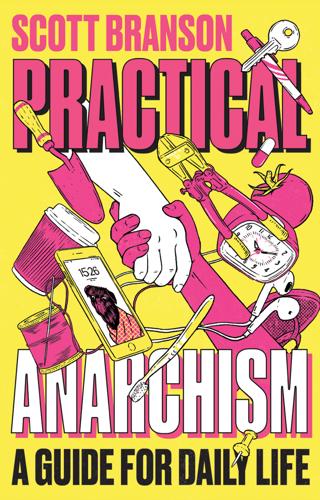
Practical Anarchism: A Guide for Daily Life
by
Scott. Branson
Published 14 Jun 2022
The university is run like a business and the faculty live in an imaginary castle of importance while they continually cede power to profit-seeking administration. I’m not even touching on the implications of the university in the legacies of slavery and Indigenous genocide. Quickly, I took up my place in the so-called “precariat”: the former “professions” that have become ever more casualized. When I do teach college students, I acknowledge that they are taking on massive debt to achieve access to a world of jobs that just doesn’t exist. Almost everyone I know works in service, mostly in restaurants and bars. Those who don’t have to hustle in some way to make enough to pay rent.
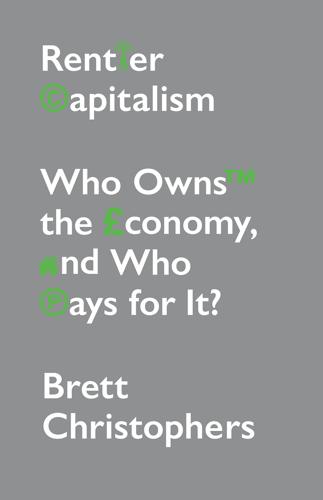
Rentier Capitalism: Who Owns the Economy, and Who Pays for It?
by
Brett Christophers
Published 17 Nov 2020
The combined growth of contract rentierism and platform rentierism has been substantially responsible, at any rate, for the swelling to more than 5 million by mid 2019 of the number of people in the UK who, in Delphine Strauss’s words, were in ‘low paid, insecure forms of work – including short-term work and contracts with unpredictable hours and pay – and were not earning enough to make ends meet’.67 This enlargement of the UK’s precariat is crucial in understanding what Torsten Bell and Laura Gardiner have recently described as the biggest change to the UK economy during the period since the financial crisis: the employment ‘boom’ that has seen the proportion of the working-age population in work grow from 73 to 76 per cent.68 As they explain, the main reason people are working more is that most people are ‘a lot poorer than [they] expected to be’.69 Meanwhile, at the top end of the income spectrum, those largely protected from the pressure on wages that has accompanied rentierization have added to their employment income by themselves becoming rentiers – whether or not they work at rentier institutions.
…
Can Uber drivers be self-supporting contractors in a 1099 economy rather than stable workers in an employment economy, or are they just extremely vulnerable gig workers? And, more broadly, as Ruth Collier asks, what will be the consequences for mass politics and political structures? Are we generating labor market flexibility, or a precariat that resembles a cyberized Downton Abbey replete with a small elite composed of the platform owners and a new and sizable underclass?77 There has certainly been robust resistance to the immiseration of gig economy workers, much of it centred on precisely this question of employment status.78 Moreover, there have been some noteworthy, headline-grabbing wins.

Utopia for Realists: The Case for a Universal Basic Income, Open Borders, and a 15-Hour Workweek
by
Rutger Bregman
Published 13 Sep 2014
Eventually, even the sweatshops in Vietnam and Bangladesh will be automated.30 Robots don’t get sick, don’t take time off, and never complain, but if they wind up forcing masses of people into poorly paid, deadend jobs, well that’s just asking for trouble. The British economist Guy Standing has predicted the emergence of a new, dangerous “precariat” – a surging social class of people in low-wage, temporary jobs and with no political voice. Their frustrations sound eerily like those of William Leadbeater. This English craftsman who was afraid that machines would destroy his country – or, indeed, the entire universe – was a part of such a dangerous class, and of a movement that laid the foundations of capitalism.

McMindfulness: How Mindfulness Became the New Capitalist Spirituality
by
Ronald Purser
Published 8 Jul 2019
However, since organization and outright refusal are no longer viable options in most industries, the most common form of post-industrial resistance is stress, burnout, and apathy. Depression is at epidemic levels, and a broader mental health crisis looms. The enthusiastic boom in corporate mindfulness coincided with the recession that started with financial meltdown in 2008. With massive lay-offs, the rise of the “precariat” and contingent labor, extension of work hours, stagnation in wages, and other forms of “shock therapy,” employees were admonished to “do more with less.” The growth in worker discontentment is regarded as a threat, both to the state and to corporations. Such disaffection and alienation — manifesting in stress, psychosomatic illnesses, depression, low motivation, absenteeism, and such — has not only fueled the interest in mindfulness but also spurred a burgeoning wellness and happiness industry.

The Economic Singularity: Artificial Intelligence and the Death of Capitalism
by
Calum Chace
Published 17 Jul 2016
Many freelancers find that in hindsight, the reassurance of a steady income goes a long way to compensate for the 9 to 5 routine of the salaried employee. Whether or not the new forms of freelancing opened up by Uber, Lyft, TaskRabbit, Handy and so on are precarious is a matter of debate, especially in their birthplace, San Francisco. Are the people hired out by these organisations “micro-entrepreneurs” or “instaserfs” - members of a new “precariat”, forced to compete against each other on price for low-end work with no benefits? Are they operating in a network economy or an exploitation economy? Is the sharing economy actually a selfish economy? Whichever side of this debate you come down on, the gig economy is a significant development: a survey by accounting firm PricewaterhouseCoopers found that as many as 7% of US adults were involved in it.

What's Wrong With Economics: A Primer for the Perplexed
by
Robert Skidelsky
Published 3 Mar 2020
The Logic of Collective Action: Public Goods and the Theory of Groups (Revised ed.), Cambridge, MA: Harvard University Press. Simon, Herbert (1976). Administrative Behavior: A Study of Decision-making Processes in Administrative Organization, New York: Free Press. Simon, Herbert (1991). ‘Organizations and Markets’, Journal of Economic Perspectives, Vol. 5 (2): 25–44. Standing, Guy (2014 [2011]). The Precariat: The New Dangerous Class, London: Bloomsbury Academic. Unger, Roberto Mangabeira (2019). The Knowledge Economy, London: Verso. Chapter 9 Cartwright, Nancy (1999). The Dappled World: A Study of the Boundaries of Science, Cambridge: Cambridge University Press. Cherrier, Beatrice (2011). ‘The Lucky Consistency of Milton Friedman’s Science and Politics, 1933–1963’, in R.
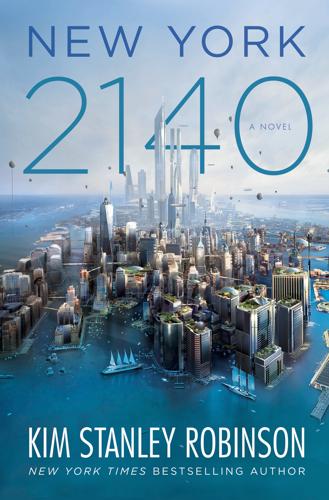
New York 2140
by
Kim Stanley Robinson
Published 14 Mar 2017
The developer, Samuel Rothafel, had wanted it to be laughing gas, but he couldn’t get the city to approve it. Robin Hood Asset Management began by analyzing twenty of the most successful hedge funds and creating an algorithm that combined all their most successful strategies, then offering its services to micro-investments from the precariat, and going from there to their now-famous success. The old Waldorf Astoria, demolished to make way for the Empire State Building, was dumped in the Atlantic five miles off Sandy Hook. We lingered in New York till the city felt so homelike that it seemed wrong to leave it. And further, the more one studied it, the more grotesquely bad it grew.
…
Probably every intertidal building in the world is just like us. For sure everyone I meet in my job is.” “So it’s mistaking the particular for the general?” Mutt says. “Something like that. And there’s something like two hundred major coastal cities, all just as drowned as New York. Like a billion people. And we’re all wet, we’re all in the precariat, we’re all pissed off at Denver and at the rich assholes still parading around. We all want justice and revenge.” “Which is one thing,” Jeff reminds her. “Okay whatever. We want justice-revenge.” “Jusvenge,” Mutt tries. “Rejustenge. It doesn’t seem to combine.” “Let’s leave it at justice,” Charlotte suggests.

The Making of Global Capitalism
by
Leo Panitch
and
Sam Gindin
Published 8 Oct 2012
An estimated 120 to 150 million workers, accounting for almost two-thirds of the industrial workforce and one-third of the service sector, had no formal status in the cities; they joined newly laid-off SOE workers to swell the ranks of the 270 million Chinese known as “dispatch workers”—the world’s largest “precariat.”102 Notably, the commodification, deregulation, and exploitation of labor power was based, as Ching Kwan Lee has emphasized, on a “remarkable and momentous increase in law-making activity by the central authority and the professionalization of the judiciary . . .”103 Workers were left vulnerable to local administrations competing to attract investment, and to overworked judges closely linked to the same local officials.
…
In actual expenditures, the US spent close to $700 billion and China $60 billion, and even if China’s official numbers are doubled, as the Pentagon suggests, that still leaves China’s expenditures at only 17 percent of the US’s. Gordon Fairclough, “China Slows Increase in Defense Spending,” Wall Street Journal, March 5, 2010. 101 Ching Kwan Lee, Against the Law: Labor Protests in China’s Rustbelt and Sunbelt, Berkeley: University of California Press, 2007, p. 71. 102 In 2004, only 10 percent of the Chinese precariat had medical insurance, less than half were paid regularly, over half were never paid overtime, and two-thirds worked without any weekly day of rest. At the same time, employment in state-owned enterprises peaked in 1995, and over the next decade fell by 48 million (30 million of those being laid off and the rest transferred to TVEs).

Nomadland: Surviving America in the Twenty-First Century
by
Jessica Bruder
Published 18 Sep 2017
As of 2017, you could still go to Google Maps Street View, drop a tiny avatar on Circle Drive, and wander around looking at parked cars and lawn furniture and folks watering their yards uninterrupted, all frozen in a photographic landscape that hasn’t been updated since 2009. AT THE SAME TIME Empire was dying, a new and very different kind of company town was thriving seventy miles to the south. In many ways, it felt like the opposite of Empire. Rather than offering middle-class stability, this village was populated by members of the “precariat”: temporary laborers doing short-term jobs in exchange for low wages. More specifically, its citizens were hundreds of itinerant workers living in RVs, trailers, vans, and even a few tents. Early each fall, they began filling the mobile home parks surrounding Fernley. Linda didn’t know it yet, but she would soon be joining them.

The Enigma of Capital: And the Crises of Capitalism
by
David Harvey
Published 1 Jan 2010
Their political presence is more often marked by spontaneous riots and voluntarist uprisings (such as those that occurred in the Paris banlieues in recent times or the piqueteros (demonstrators) who erupted into action in Argentina after the country’s financial collapse of 2001) rather than persistent organisation. But they are fully conscious of their conditions of exploitation and are deeply alienated by their precarious existence and antagonistic to the often brutal policing of their daily lives by state power. Now often referred to as ‘the precariat’ (to emphasise the floating and unstable character of their employment and lifestyles) these workers have always accounted for a large segment of the total labour force. In the advanced capitalist world they have become ever more prominent over the last thirty years because of changing labour relations imposed by neoliberal corporate restructuring and deindustrialisation.
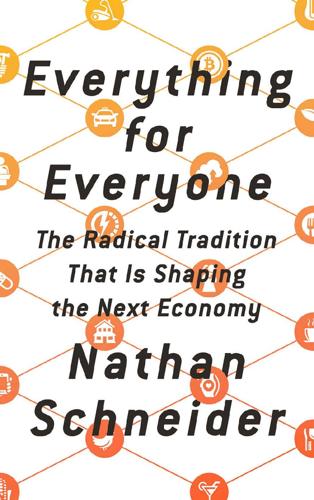
Everything for Everyone: The Radical Tradition That Is Shaping the Next Economy
by
Nathan Schneider
Published 10 Sep 2018
An early statement of the trend is Derek Thompson and Jordan Weissmann, “The Cheapest Generation,” Atlantic (September 2012); for a statistical critique of the “myth of the ‘don’t own’ economy,” see The Millennial Study (Accel and Qualtrics, 2017); for a critique of this “investment” see Malcolm Harris, Kids These Days: Human Capital and the Making of Millennials (Little, Brown, 2017). 7. On housing, see Laura Gottesdiener, “The Empire Strikes Back,” TomDispatch (November 26, 2013); on employment, see Guy Standing, The Precariat: The New Dangerous Class (Bloomsbury Academic, 2011); on citizenship, see Atossa Araxia Abrahamian, The Cosmopolites: The Coming of the Global Citizen (Columbia Global Reports, 2015); on clouds, see John Durham Peters, The Marvelous Clouds: Toward a Philosophy of Elemental Media (University of Chicago Press, 2015). 8.
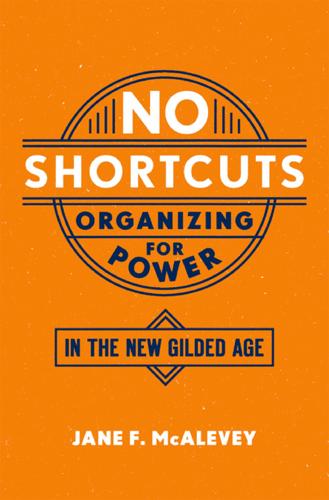
No Shortcuts: Organizing for Power in the New Gilded Age
by
Jane F. McAlevey
Published 14 Apr 2016
Deborah Axt explains that that this program has deep value beyond recruitment: “These individual and small-scale fights matter a great deal, because the members can get involved and exercise, test, and improve upon their leadership immediately. It’s like having dozens of mini campaigns going on all at once all the time.” By 2004, Make the Road had decided to try something new in their worker justice campaigns: organizing unions. It was a bold move, with a high risk of failure, because the precariat workers that dominate the lowest wage sector have proven particularly difficult to unionize. Union election victories are hard to come by in any sector, given the incentive for employers to systematically violate the few remaining worker protections under U.S. law. But given the sheer numbers of individuals experiencing wage theft, Make the Road wanted to scale up.

Who Rules the World?
by
Noam Chomsky
The bank’s analysts describe a world that is dividing into two blocs, the plutonomy and the rest, creating a global society in which growth is powered by the wealthy few and largely consumed by them. Left out of the gains of the plutonomy are the “non-rich,” the vast majority, now sometimes called the “global precariat,” the workforce living an unstable and increasingly penurious existence. In the United States, they are subject to “growing worker insecurity,” the basis for a healthy economy, as Federal Reserve chair Alan Greenspan explained to Congress while lauding his own skills in economic management.28 This is the real shift of power in global society.

Corbyn
by
Richard Seymour
The Labour Right, though unimaginative and timid even in terms of achieving their own limited objectives, were correct to identify the problem that the existing vote for socialism of the Corbyn variety was not enough to win an election. The metropolitan Left, based in large urban centres and university towns, may be a sufficient source of activists to drive a movement for change. The educated precariat, politicised and with spare time and resources, could take a leading role, insofar as there was a movement for them to lead. And surrounding them were some social groups who never particularly cared for neoliberalism, but were previously silenced because they lacked representation. But beyond that, there were more provincial areas where the concerns of the urban working class were not as visible, where the difficulties with home ownership and renting were not as acute, where a sense of neglect and distance from Westminster wasn’t expressed in progressive attitudes.

A New History of the Future in 100 Objects: A Fiction
by
Adrian Hon
Published 5 Oct 2020
Taylor explains: If you look at the sociological literature of early twenty-first-century rich countries, you’ll see a spike for “precarity,” which meant a state of life without security or predictability. A life that had no stable work or leisure routines because people had no option but to work whenever work was available—whether late at night or on weekends or, sometimes, not at all. But the breakdown in routine wasn’t only happening for the precariat; it was also happening for so-called knowledge workers. They had the opportunity and the pressure to work from anywhere at any time for anyone, which understandably ruined their notion of the “nine-to-five” as well. And church and religion had long ceased to hold sway over most people’s time. It wasn’t until the ’30s and ’40s that structure began reappearing in lives.

MegaThreats: Ten Dangerous Trends That Imperil Our Future, and How to Survive Them
by
Nouriel Roubini
Published 17 Oct 2022
Over the next decades there will be winners in parts of Europe, China, and North America. Many other countries will become losers, swept under by technological unemployment and drowning in debt they cannot service much less ever repay. Polarization will pit the rich against the poor. Enter the new precariat, educated and semi-skilled workers who lose careers to AI and end up in gig work with unstable income and no benefits. They will go from job to job with no future, falling through a fraying safety net. Then what happens? As incomes fall, they may try to borrow more. Debt loads increase as income gaps widen.

A Pelican Introduction Economics: A User's Guide
by
Ha-Joon Chang
Published 26 May 2014
MESSENGER Working Time Around the World: Trends in Working Hours, Laws and Policies in a Global Comparative Perspective (London: Routledge, 2007). K. MARX Capital (Harmondsworth: Penguin, 1976), vol. 1, chapter 15. U. PAGANO Work and Welfare in Economic Theory (Oxford: Blackwell, 1985). G. STANDING The Precariat: The New Dangerous Class (London: Bloomsbury Academic, 2011). J. TREVITHICK Involuntary Unemployment: Macroeconomics from a Keynesian Point of View (New York and London: Harvester Wheatsheaf, 1992). ‘Government exists to protect us from each other. Where government has gone beyond its limits is in deciding to protect us from ourselves.’
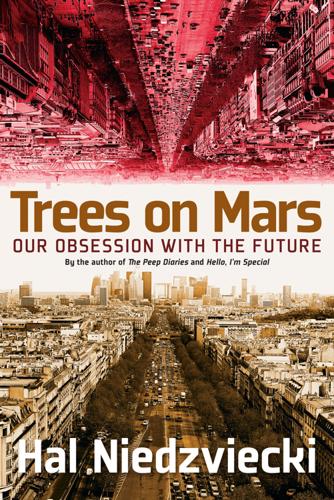
Trees on Mars: Our Obsession With the Future
by
Hal Niedzviecki
Published 15 Mar 2015
They are hired—or connected to jobs—by companies who say they are not employees, but independent contractors, which conveniently insures that the workers “don’t qualify for employee benefits like health insurance, payroll deductions for Social Security or unemployment benefits.”82 Guy Standing, a labor economist, has dubbed this rapidly expanding class of laborer “the precariat.”83 “These are not jobs, jobs that have any future, jobs that have the possibility of upgrading; this is contingent, arbitrary work,” says Stanley Aronowitz, director of the Center for the Study of Culture, Technology and Work at the Graduate Center of the City University of New York. “It might as well be called wage slavery in which all the cards are held, mediated by technology, by the employer, whether it is the intermediary company or the customer.”84 The intermediary holds all the cards.
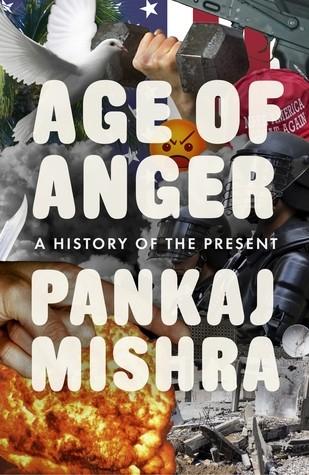
Age of Anger: A History of the Present
by
Pankaj Mishra
Published 26 Jan 2017
Marx thought that wage slavery, insecure and impersonal, was worse than serfdom; but, today, stable employment in a single line of work, let alone a single enterprise, is becoming increasingly rare. Ad hoc work is more common. Many young people work part-time, study and work at the same time, travel huge distances in order to find work – if they can find it at all. These significantly numerous members of the precariat know that there is no such thing as a level playing field. They share a suspicion, which was previously mostly found among paranoid conspiracy theorists, that their own political elite has become the enemy of freedom, not its protector. The fierce contempt among these groups in America for Barack Obama and Hillary Clinton reflects more than just a misogynist backlash against the gains of feminism, or deflected hatred of minorities; it reflects a severely diminished respect for the political process itself.

Rage Inside the Machine: The Prejudice of Algorithms, and How to Stop the Internet Making Bigots of Us All
by
Robert Elliott Smith
Published 26 Jun 2019
The UK’s Skills and Employment survey revealed that nearly a third of workers now have to work at very high speed ‘all’ or ‘most of’ the time, while the share of people who have ‘a lot of discretion over how they do their job’ has crashed from 62 per cent to 38 per cent.8 Instead of the proletariat we now have the precariat: a class of people with insecure jobs afraid to ask for pay rises or improved working conditions. And, just like the Luddites before them, workers insist that they are not against innovation, technology or flexibility, they just want some basic rights and security. From dark kitchens it doesn’t seem like such a large step to Blake’s ‘dark, satanic mills’.
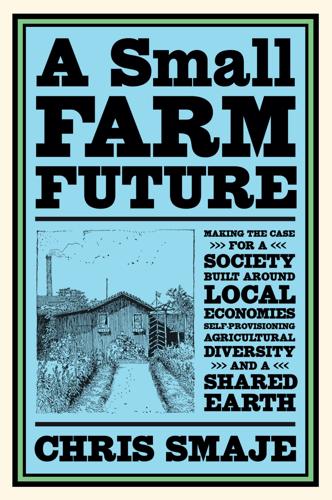
A Small Farm Future: Making the Case for a Society Built Around Local Economies, Self-Provisioning, Agricultural Diversity and a Shared Earth
by
Chris Smaje
Published 14 Aug 2020
So there’s a case for bringing forwards more localised, small-scale farming to mitigate hunger and food insecurity. But this isn’t how things always play out. Poor harvests and high food prices often benefit larger-scale farmers, while pushing small-scale farmers into distress. It’s a historical fact that many poor, small-scale farmers have been propelled wholly or partly out of farming into rural precariats who swell the numbers of global hungry. However, this isn’t some inherent disadvantage of small scale. Generally, it occurs where small-scale farmers are dependent on monetised markets for basic subsistence, and where larger-scale farmers have advantages in relative input costs – circumstances which have more to do with political leverage than any disinterested market dynamics.70 So, global market dynamics aside, there are advantages to the small farm as a safeguard against hunger, especially the small subsistence farm with limited market dependencies.

Radicals Chasing Utopia: Inside the Rogue Movements Trying to Change the World
by
Jamie Bartlett
Published 12 Jun 2017
The communities where new immigrants live, the poorer parts of town, were typically the places where they would first arrive, which placed pressure on whatever limited public services or housing was available, along with creating, for some at least, a sense of bitterness and loss.40 Gone are the settled communities and secure manufacturing jobs of the 1960s and 1970s. While many are better off, large lumps of the white working class are now a precariat class reliant on short-term, unreliable work, living in rented accommodation, without transferable skills, with low (and falling) wages and few prospects.41 White men are also, by some margin, now the least likely to do well at school or go to university compared to other ethnic groups of similar economic background.

Uneasy Street: The Anxieties of Affluence
by
Rachel Sherman
Published 21 Aug 2017
Social and Personality Psychology Compass 8 (12): 755–765. Spence, Emma. 2016. “Performing Wealth and Status: Observing Super-Yachts and the Super-Rich in Monaco.” Pp. 287–301 in Handbook on Wealth and the Super-Rich, edited by Jonathan V. Beaverstock and Iain Hay. Cheltenham, UK: Edward Elgar. Standing, Guy. 2011. The Precariat: The New Dangerous Class. London: Bloomsbury. Stewart, James B. 2016. “In the Chamber of Secrets: J. K. Rowling’s Net Worth.” New York Times, November 25, A1. Available at http://www.nytimes.com/2016/11/24/business/in-the-chamber-of-secrets-jk-rowlings-net-worth.html. Accessed November 26, 2016.
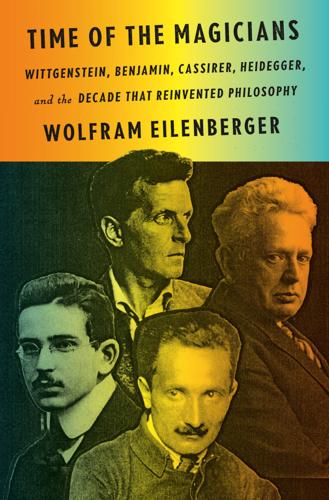
Time of the Magicians: Wittgenstein, Benjamin, Cassirer, Heidegger, and the Decade That Reinvented Philosophy
by
Wolfram Eilenberger
Published 14 Sep 2020
It is easy to call to mind the caricature of an essentially aimless, financially cosseted, extraordinarily talented almost twenty-eight-year-old, slowly but surely figuring out that the world hasn’t exactly been waiting for the genius he doubtless thinks he is. Benjamin’s only independent source of income at this point in his life came from graphological analyses. Today he would be a lifestyle consultant or a feng shui adviser. In 1920, then, this academic overachiever was heading straight for the class we call the precariat. The remnants of the 30,000 reichsmarks, which he had extorted to propel himself into a new life, would only three years later be worth less than a sandwich. If there is a constant in Benjamin’s life from now on, it is his keen ability to make the wrong decision at the wrong time, but a second, life-shaping pattern also appears in exemplary form in this letter.

On the Clock: What Low-Wage Work Did to Me and How It Drives America Insane
by
Emily Guendelsberger
Published 15 Jul 2019
Shipler Precarious Lives: Job Insecurity and Well-Being in Rich Democracies, Arne Kalleberg The Disposable American: Layoffs and Their Consequences, Louis Uchitelle The Overworked American: The Unexpected Decline of Leisure, Juliet Schor Free Time: The Forgotten American Dream, Benjamin Hunnicutt The Precariat: The New Dangerous Class, Guy Standing Strangers in Their Own Land: Anger and Mourning on the American Right, Arlie Hochschild The Big Squeeze: Tough Times for the American Worker, Steven Greenhouse The Working Life: The Promise and Betrayal of Modern Work, Joanne B. Ciulla The Betrayal of Work: How Low-Wage Jobs Fail 30 Million Americans, Beth Shulman Nomadland: Surviving America in the Twenty-First Century, Jessica Bruder Where Bad Jobs Are Better: Retail Jobs Across Countries and Companies, Francoise Carre and Chris Tilly “We Are All Fast-Food Workers Now”: The Global Uprising Against Poverty Wages, Annelise Orleck On Wanda Stone Age Economics, Marshall Sahlins Behave: The Biology of Humans at Our Best and Worst, Robert Sapolsky Scarcity: Why Having Too Little Means So Much, Sendhil Mullainathan and Eldar Shafir The Panopticon Writings, Jeremy Bentham Discipline and Punish: The Birth of the Prison, Michel Foucault Snakes in Suits: When Psychopaths Go to Work, Paul Babiak and Robert D.

The Black Box Society: The Secret Algorithms That Control Money and Information
by
Frank Pasquale
Published 17 Nov 2014
Television commercials feature tales of woe about those who let their credit scores slip, and some pitilessly equate low scores with laziness and unreliability.7 The sponsors of these ads profit from the insecurity they both publicize and reinforce. They don’t include in their moralizing the top fi nanciers who walk away unscathed from their own companies’ debts when too-risky bets don’t work out. The importance of credit reputation grows as public assistance shrinks.8 Austerity promotes loans as a lifeline for an insecure precariat. Students who once earned state scholarships are now earning profits for government or private lenders. In our “market state” and “ownership society,” private credit rather than public grant is the key to opportunity. Would-be homeowners, students, and the very poor are forced back on commercial credit to buy places to live, to prepare for careers, or even just to pay the costs of day-to-day living.
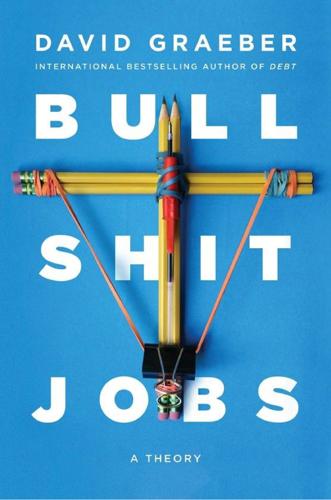
Bullshit Jobs: A Theory
by
David Graeber
Published 14 May 2018
London: Penguin, 2003. ________. Respect: The Formation of Character in an Age of Inequality. London: Penguin, 2004. ________. The Corrosion of Character: The Personal Consequences of Work in the New Capitalism. New York: Norton, 2008. ________. The Craftsman. New York: Penguin, 2009. Standing, Guy. The Precariat: The New Dangerous Class (Bloomsbury Revelations). London: Bloomsbury Academic Press, 2016. ________. Basic Income: And How We Can Make It Happen. London: Pelican, 2017. Starkey, David. “Representation Through Intimacy: A Study in the Symbolism of Monarchy and Court Office in Early Modern England.”
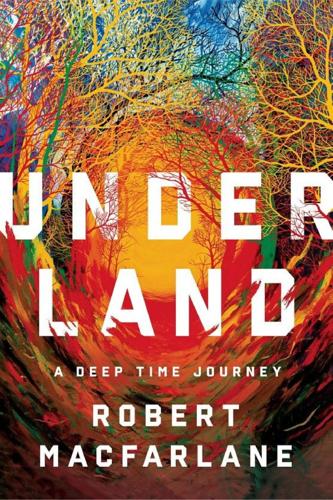
Underland: A Deep Time Journey
by
Robert Macfarlane
Published 1 May 2019
Hunting – one of the few aspects of traditional Greenlandic life that survived settlement – is under threat of erasure, this time by global temperature change. Ice has a social life. Its changeability shapes the culture, language and stories of those who live near it. In Kulusuk, the consequences of recent changes are widely apparent. The inhabitants of this village are part of the precariat of a volatile, fast-warping planet. The melting of the ice, together with forced settlement and other factors, has had severe effects upon the mental and physical health of native Greenlanders, causing rates of depression, alcoholism, obesity and suicide to rise, especially in small communities.

Make Your Own Job: How the Entrepreneurial Work Ethic Exhausted America
by
Erik Baker
Published 13 Jan 2025
See also Joseph Stiglitz, The Roaring Nineties: A New History of the World’s Most Prosperous Decade (New York: Norton, 2003); Lily Geismer, Left Behind: The Democrats’ Failed Attempt to Solve Inequality (New York: PublicAffairs, 2022). 3Bruce Nussbaum, “The Changing Role of the CEO,” BusinessWeek, October 23, 1987, 13–28, at 20. See also Louis Hyman, Temp: How American Work, American Business, and the American Dream Became Temporary (New York, Viking, 2018); Guy Standing, The Precariat: The New Dangerous Class (London: Bloomsbury, 2011); Nick Dyer-Witheford, Cyber-Proletariat: Global Labour in the Digital Vortex (New York: Pluto Press, 2015). 4Perry Anderson, A Zone of Engagement (New York: Verso, 1992), 359. 5Sandra Black, Jason Furman, Emma Rackstraw, and Nirupama Rao, “The Long-Term Decline in US Prime-Age Male Labour Force Participation,” VoxEU / CEPR, July 6, 2016.

The Cigarette: A Political History
by
Sarah Milov
Published 1 Oct 2019
Nancy MacLean, Freedom Is Not Enough: The Opening of the American Workplace (Cambridge, MA: Harvard University Press, 2008); Katherine Turk, Equality on Trial: Gender and Rights in the Modern American Workplace (Philadelphia: University of Pennsylvania Press, 2016); Sophia Z. Lee, The Workplace Constitution: From the New Deal to the New Right (New York: Cambridge University Press, 2014); Serena Mayeri, Reasoning from Race: Feminism, Law, and the Civil Rights Revolution (Cambridge, MA: Harvard University Press, 2011); Margot Canaday, Pink Precariat: LGBT Workers in the Shadow of Civil Rights (forthcoming), chapter 6. 7. By the late 1980s, antidiscrimination law covered not only women and racial minorities, but also the disabled, pregnant women, and, in Reagan’s one contribution to the expansion of antidiscrimination law, older Americans. At the same time, Katherine Turk argues, the “conceptual terrain” of what constituted sex equality dramatically contracted in the 1980s and 1990s.

Blood in the Machine: The Origins of the Rebellion Against Big Tech
by
Brian Merchant
Published 25 Sep 2023
One of the major unspoken benefits of the on-demand app companies, for their owners, is that the workers are further isolated from one another, making it more difficult to build bonds of solidarity with one another, and reducing the chances that they’ll come together to advocate for better treatment. At least at first. We’ve seen some surprisingly wide-ranging movements growing, among Amazon workers, among Uber, Lyft, and InstaCart drivers, and among the precariat more generally—and if the Luddites are our rough working corollary, it’s early days yet. One thing that puzzled authorities during the Luddite movement is that displaced workers were joined by throngs of others whose jobs were not at risk of automation. The authorities were puzzled, essentially, over solidarity.

2312
by
Kim Stanley Robinson
Published 22 May 2012
She had seen hunger, disease, premature death. Wasted lives in blasted biomes. Basic needs not met for three billion of the eleven billion on the planet. Three billion was a lot already, but there were also another five or six billion teetering on the brink, about to slide into that same hole, never a day free of worry. The great precariat, wired in enough to know their situation perfectly well. That was life on Earth. Split, fractionated, divided into castes or classes. The wealthiest lived as if they were spacers on sabbatical, mobile and curious, actualizing themselves in all the ways possible, augmenting themselves—genderizing—speciating—dodging death, extending life.

Never Let a Serious Crisis Go to Waste: How Neoliberalism Survived the Financial Meltdown
by
Philip Mirowski
Published 24 Jun 2013
In the neoliberal era, the state went from trying to quarantine gambling to insinuating it into every hamlet, high street, filling station, and Indian reservation. In the United States, individual states have been falling over one another to promote every form of gambling they might tax. Not only was it lucrative, but it taught the precariat to live suspended in a delirium of lottery fever, the better to be distracted from working life. This elevation of risk as the heightened consciousness of the neoliberal self has direct causal connections to the crisis, as one might expect. This case has been made by Christopher Payne in his Consumer, Credit and Neoliberalism.
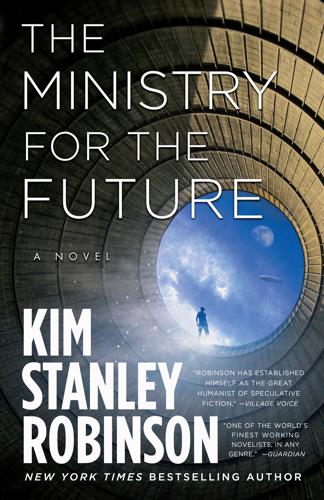
The Ministry for the Future: A Novel
by
Kim Stanley Robinson
Published 5 Oct 2020
So, no hope of change from that quarter. What about the poor? The four billion poorest people alive have less wealth than the richest ten people on the planet, so they’re not very powerful, but no one can deny that there are a lot of them. Might they force change from below? There are guns in their faces. What about the so-called precariat, then? Those middle billions just scraping by, what Americans still call the middle class, speaking of nostalgia? Could they rise up and change things by way of some kind of mass action? Guns in their faces too. And yet we do sometimes see demonstrations, sometimes quite large ones. Demonstrations are parties.

Cultural Backlash: Trump, Brexit, and Authoritarian Populism
by
Pippa Norris
and
Ronald Inglehart
Published 31 Dec 2018
They appeal to the disgruntled and psychologically homeless, to the personal failures, the socially isolated, the economically insecure, the uneducated, unsophisticated, and the authoritarian persons.’6 Contemporary concern about working- class authoritarianism has revived today, stimulated by the emergence of a poorly educated, under- class in Western societies (the ‘precariat’), with increasingly stark disparities of income and wealth dividing rich and poor during the late-twentieth century.7 The growing electoral success of Authoritarian-Populist parties and leaders has often been attributed to several related economic developments occurring during the late twentieth century.
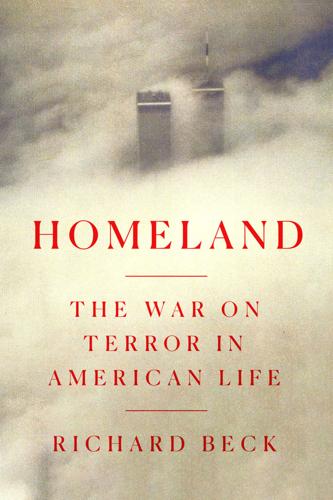
Homeland: The War on Terror in American Life
by
Richard Beck
Published 2 Sep 2024
For one thing, a third of the protesters had recently been laid off or lost a job, and a similar number had significant credit card or student loan debt.[63] This was a key line of continuity between New York and Cairo, for many of the young Egyptians who gathered in Tahrir Square in early 2011 were also well educated. The issue wasn’t education itself but what the economy allowed or didn’t allow people to do with the educations they had spent so much money to acquire. In both countries, the protesters were part of a group that commentators had begun to call the “precariat,” people with university degrees who found themselves unable to find secure jobs amid the slowest economic recovery on record. They might not be part of the world’s surplus populations yet, but they didn’t have to look very far into the future to see a world in which they, too, might be completely at the mercy of the capricious flows of international capital.

Roller-Coaster: Europe, 1950-2017
by
Ian Kershaw
Published 29 Aug 2018
Globalization has paved the way for turbo-capitalism. Global investment banks, big corporate concerns and information-technology giants have established their power beyond the control of nation states, and in 2007–8 a bloated and irresponsible finance sector took the international financial system to the brink of collapse. A new ‘precariat’ of unskilled, often migrant, labour has emerged, taking up poorly paid jobs, able only to afford sub-standard accommodation, and living with constant material uncertainty. The sense of physical insecurity has also intensified as the incidence of, especially, Islamist terrorism – a legacy in good measure of Europe’s involvement in wars in the Middle East, and of its imperial past – has increased.
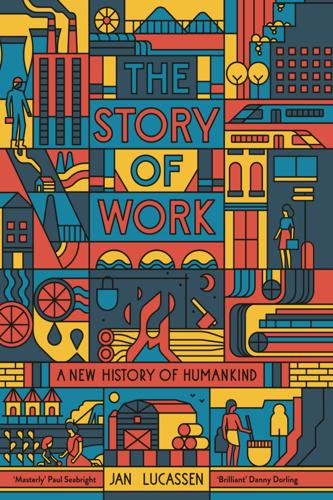
The Story of Work: A New History of Humankind
by
Jan Lucassen
Published 26 Jul 2021
‘How Rarely did Medieval Merchants Use Coin?’, Van Gelder lecture 5, Stichting Nederlandse Penningkabinetten, Utrecht, 2008. Stabel, Peter. ‘Labour Time, Guild Time? Working Hours in the Cloth Industry of Medieval Flanders and Artois (Thirteenth–Fourteenth Centuries)’, TSEG, 11 (2014), pp. 27–53. Standing, Guy. The Precariat: The New Dangerous Class (London: Bloomsbury, 2016). Stanziani, Alessandro. ‘Serfs, Slaves, or Wage Earners? The Legal Status of Labour in Russia from a Comparative Perspective, from the Sixteenth to the Nineteenth Century’, Journal of Global History, 3 (2008), pp. 183–202. Stanziani, Alessandro.